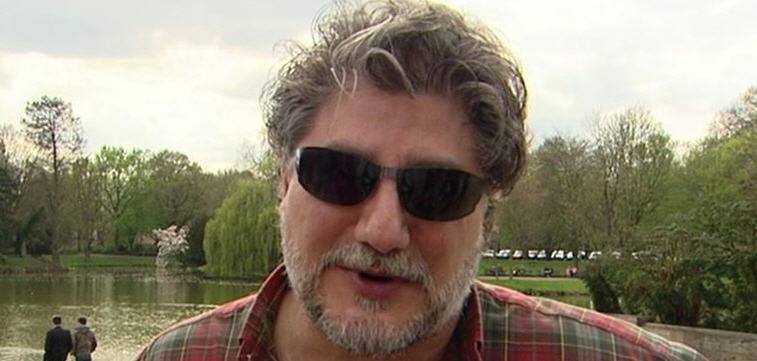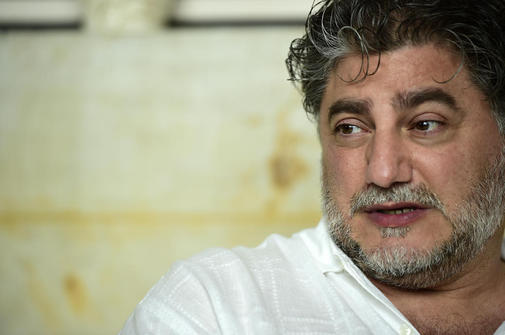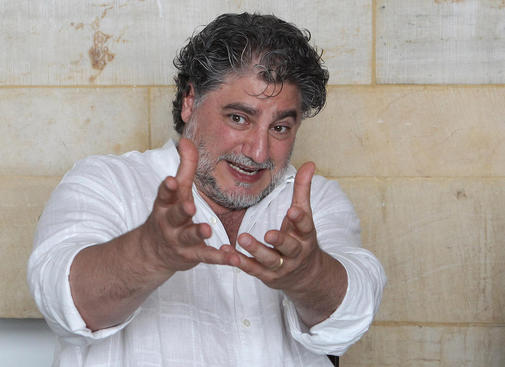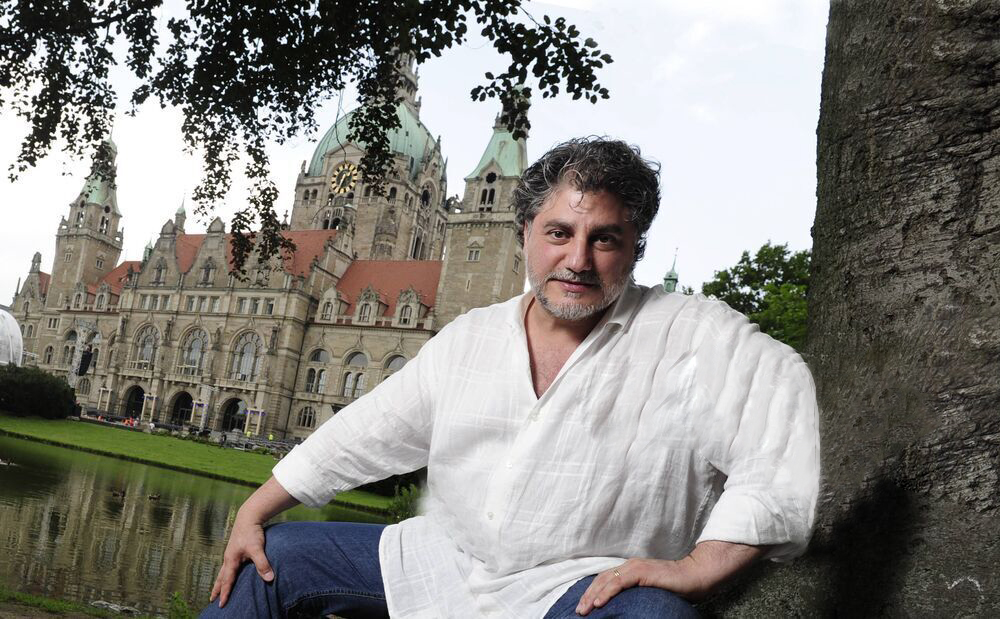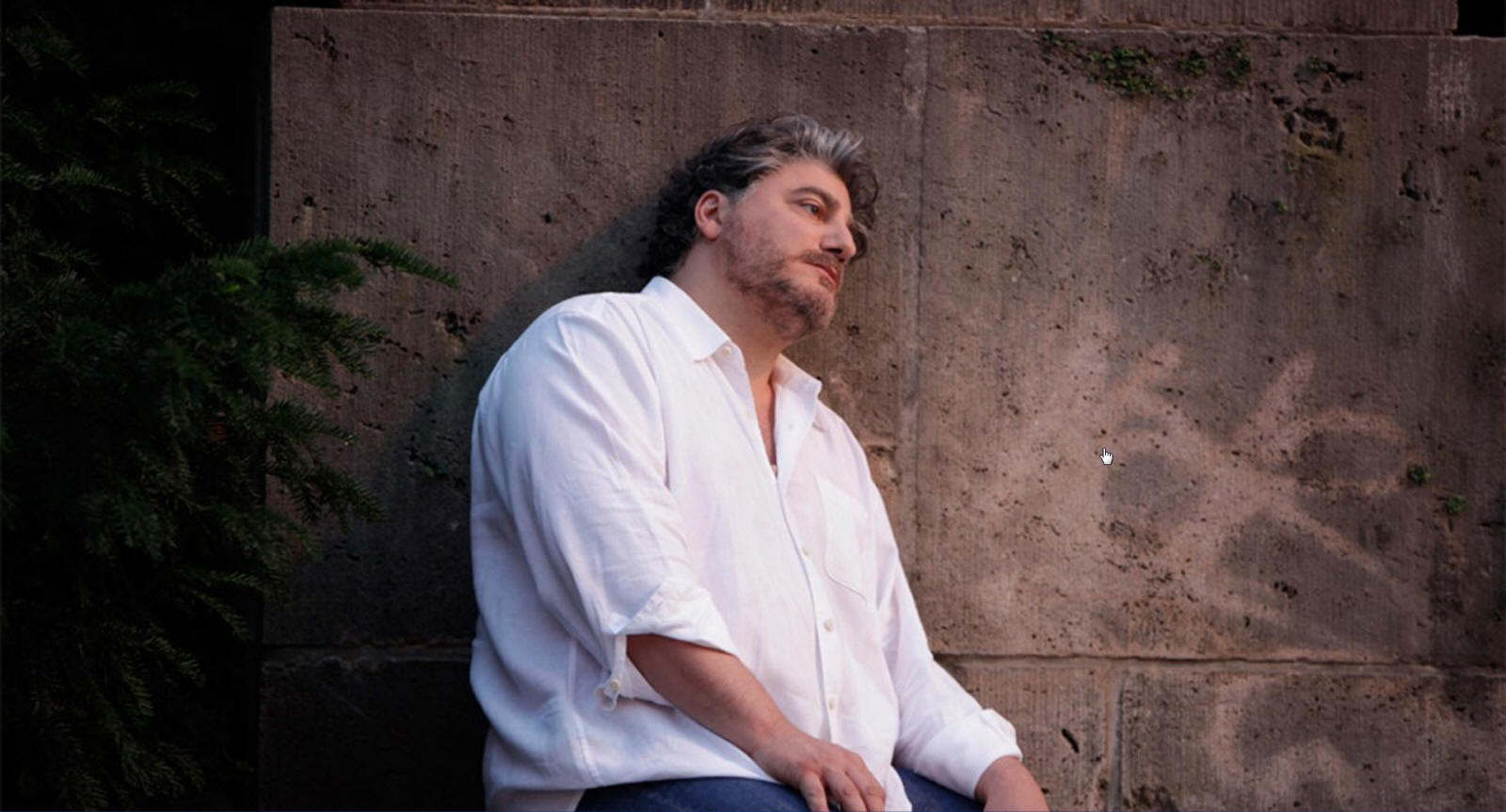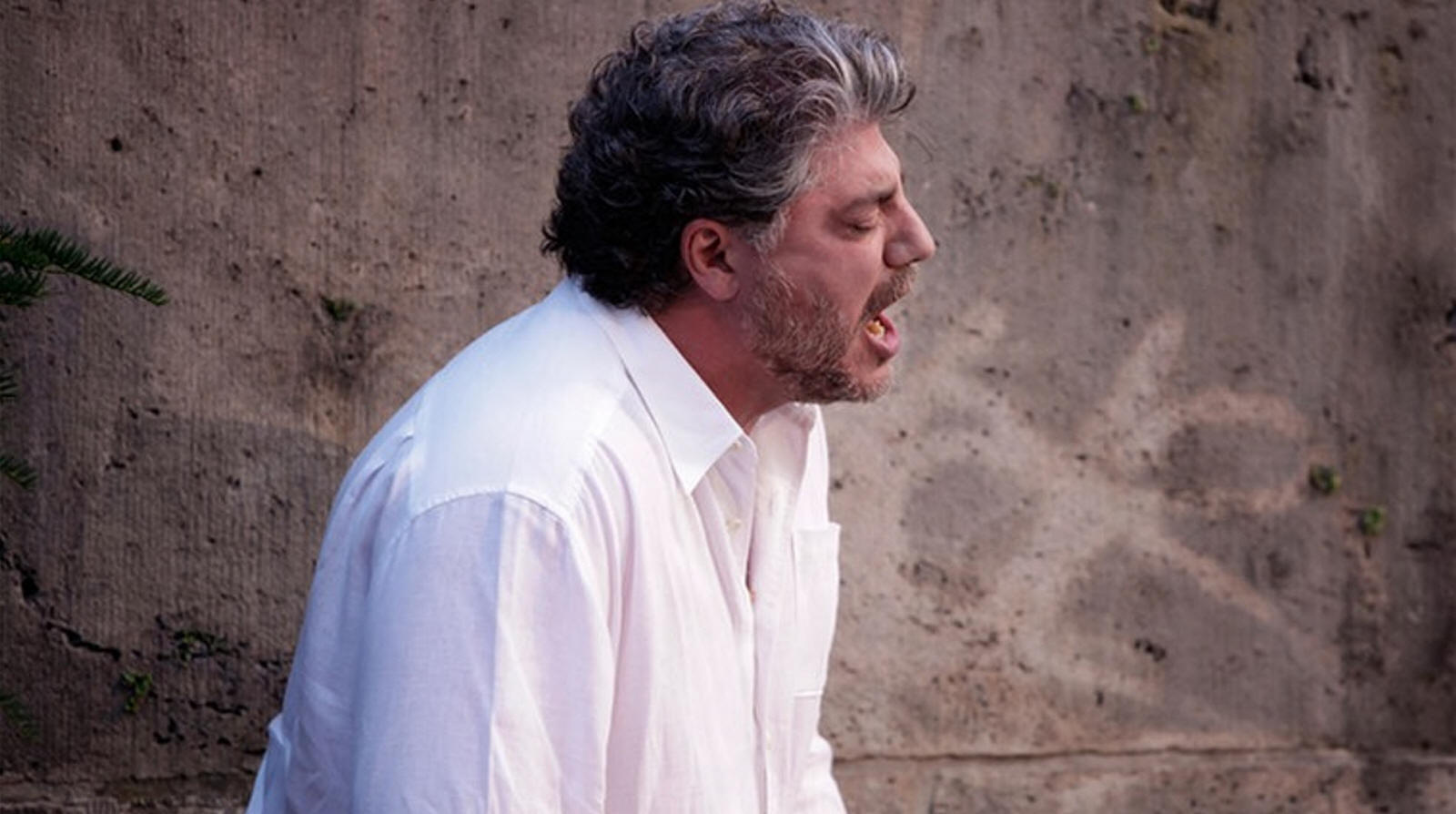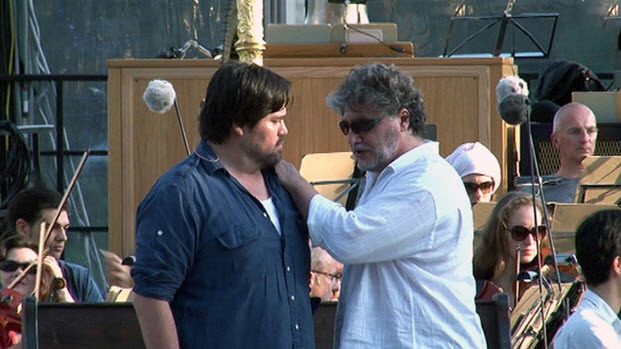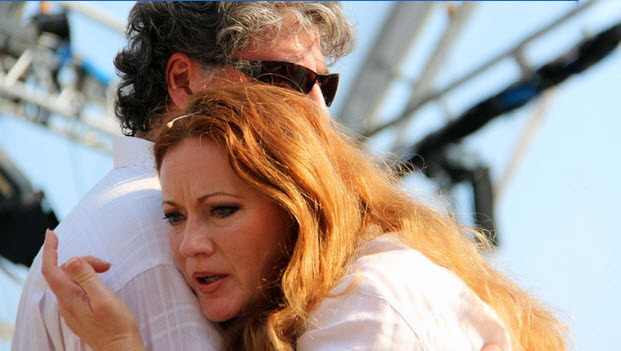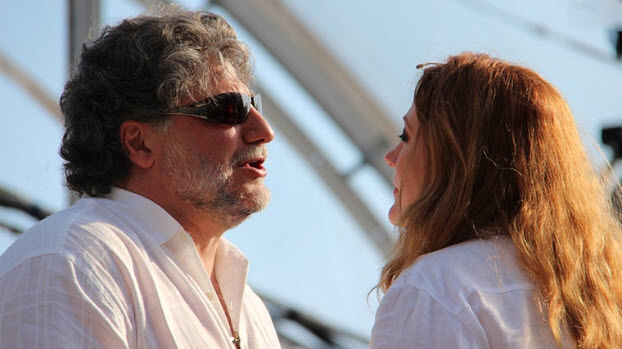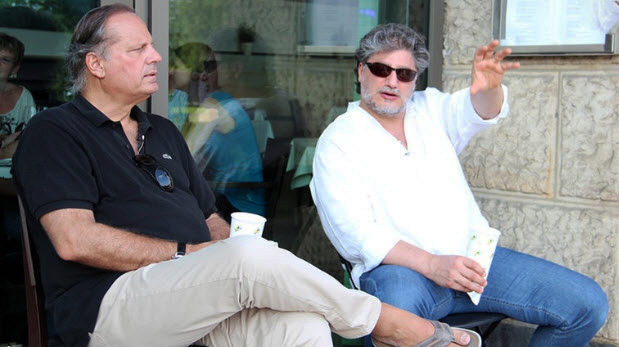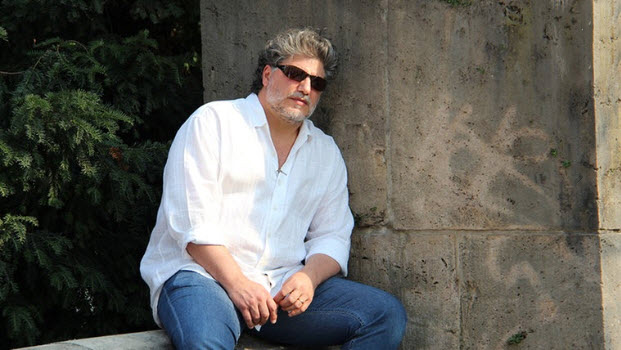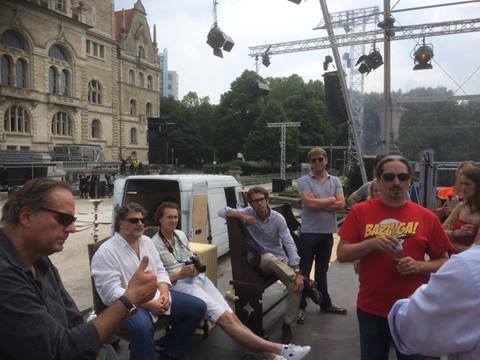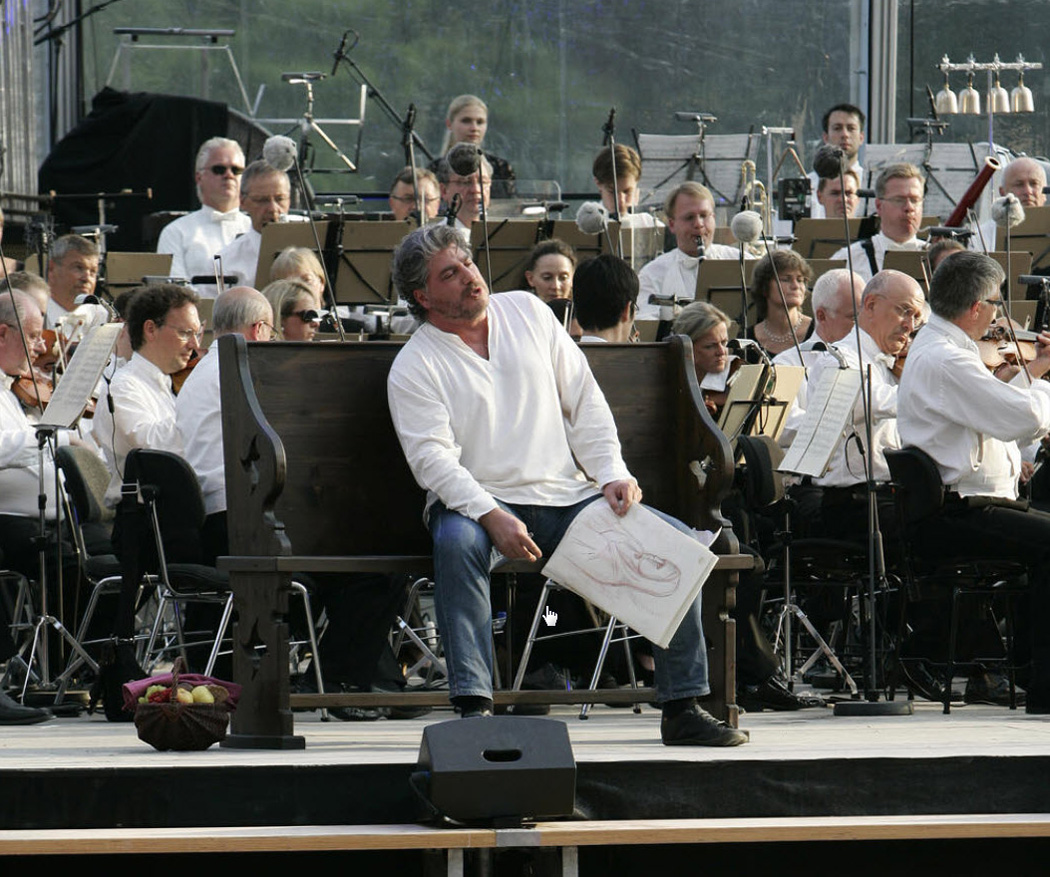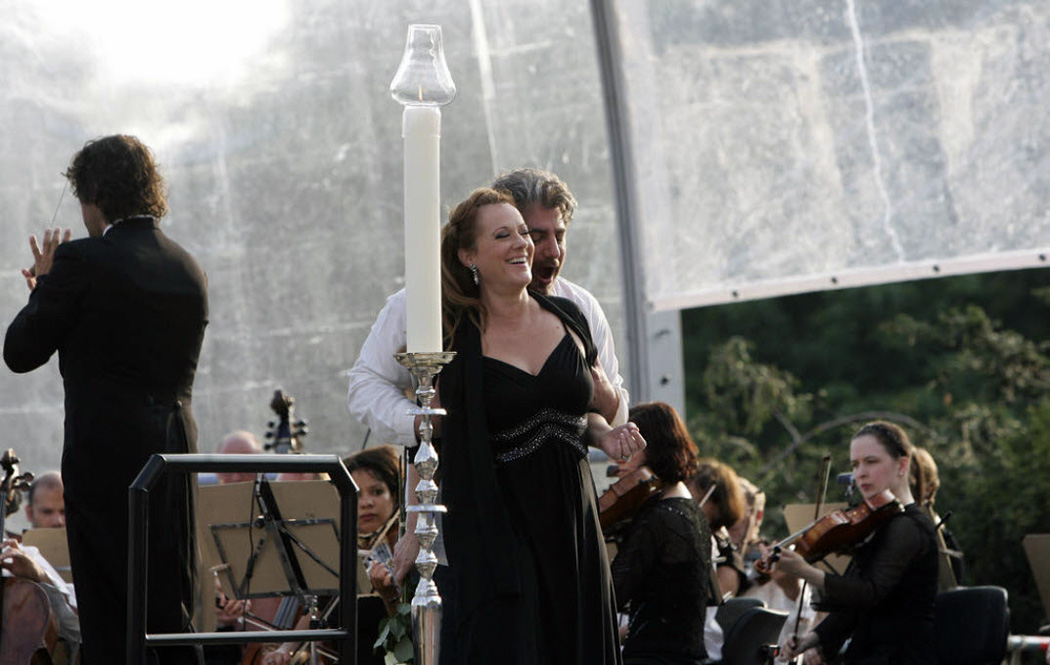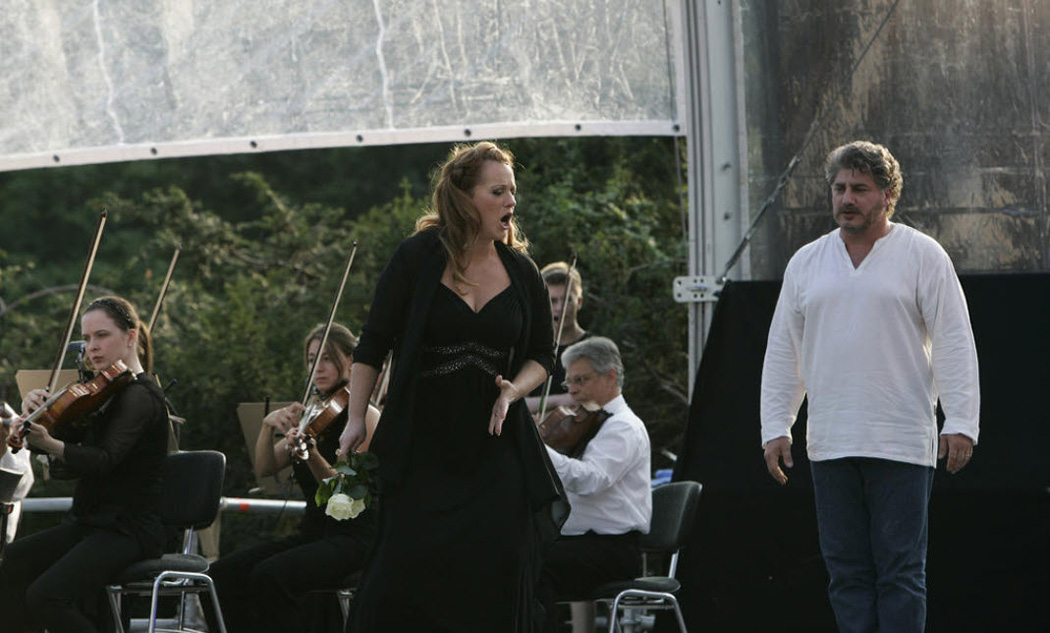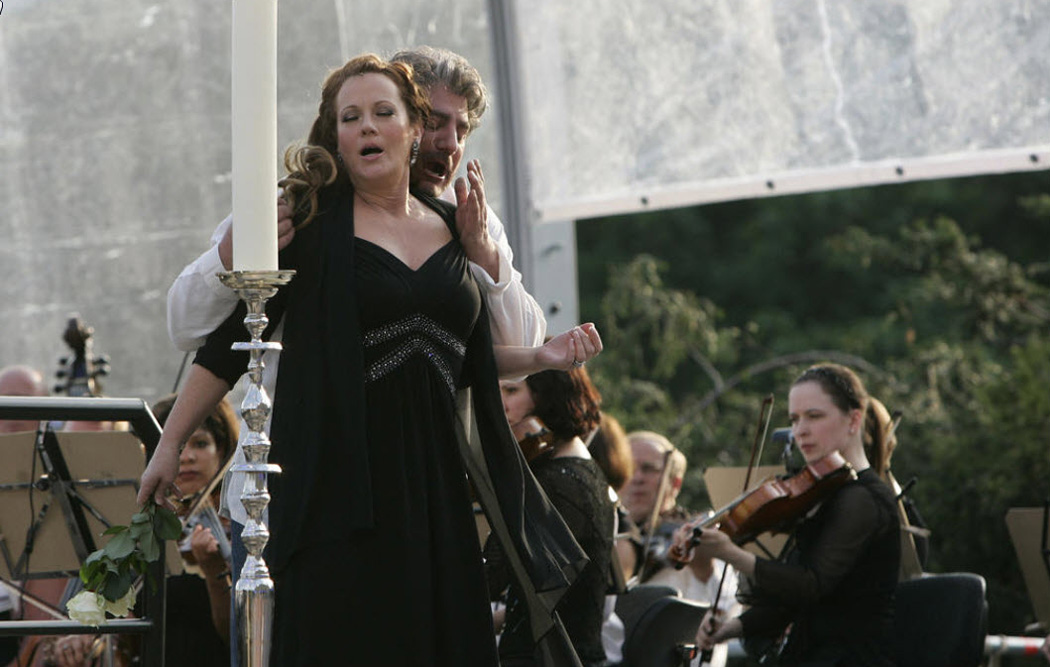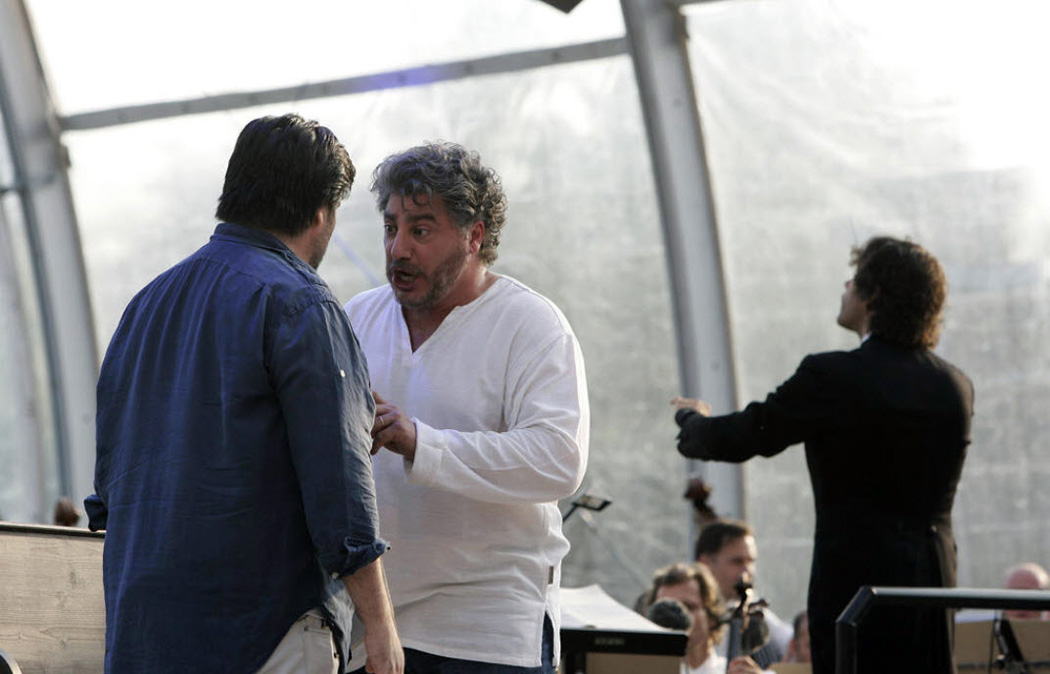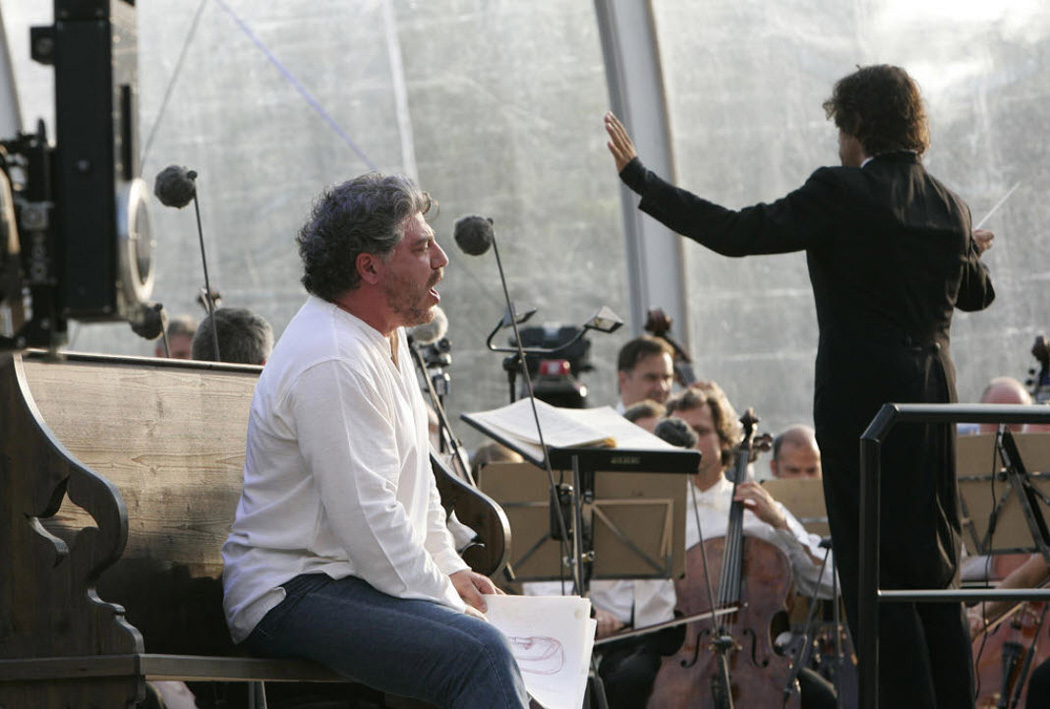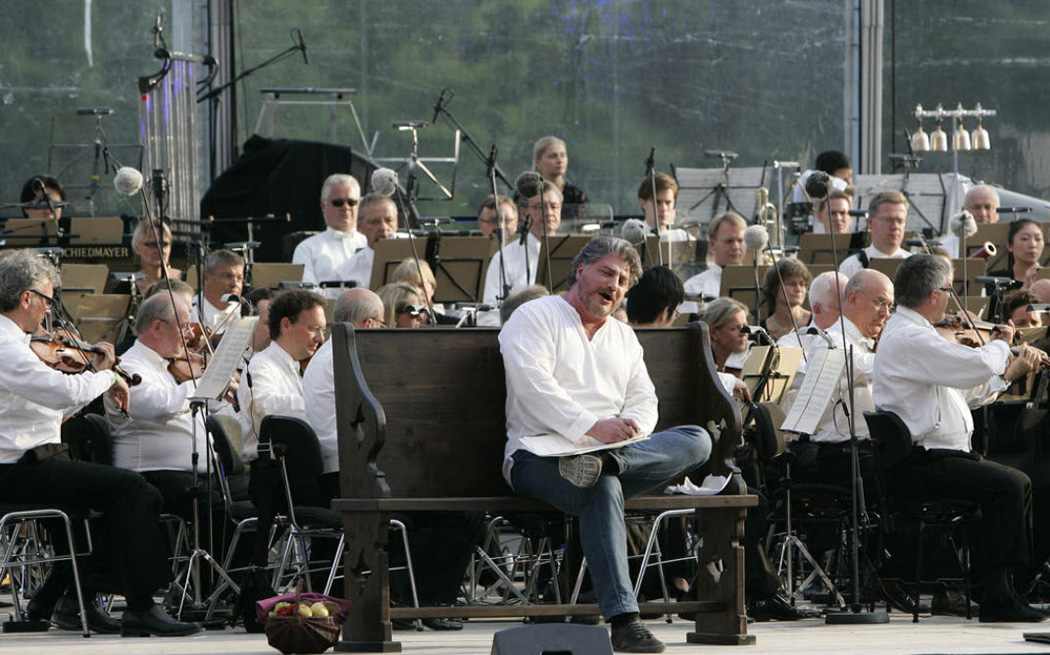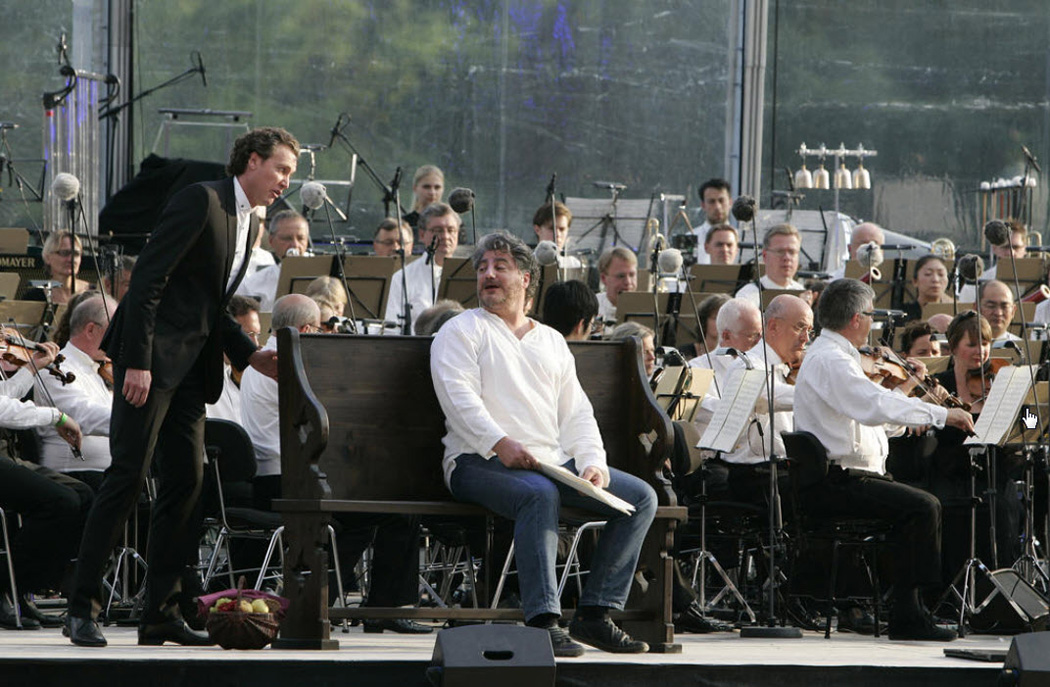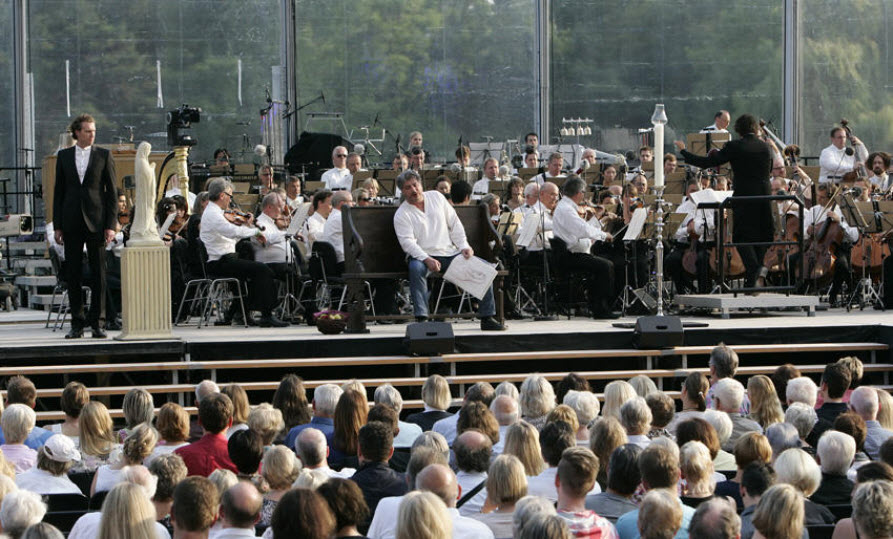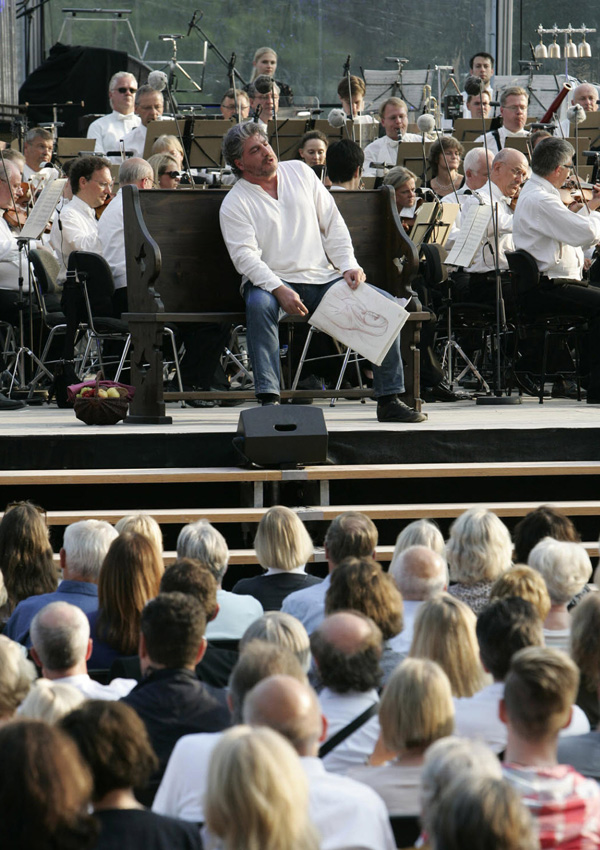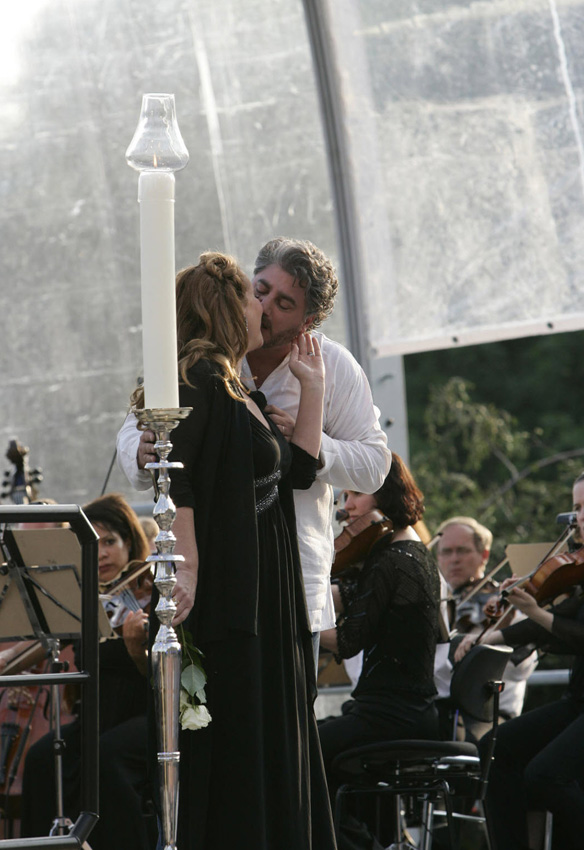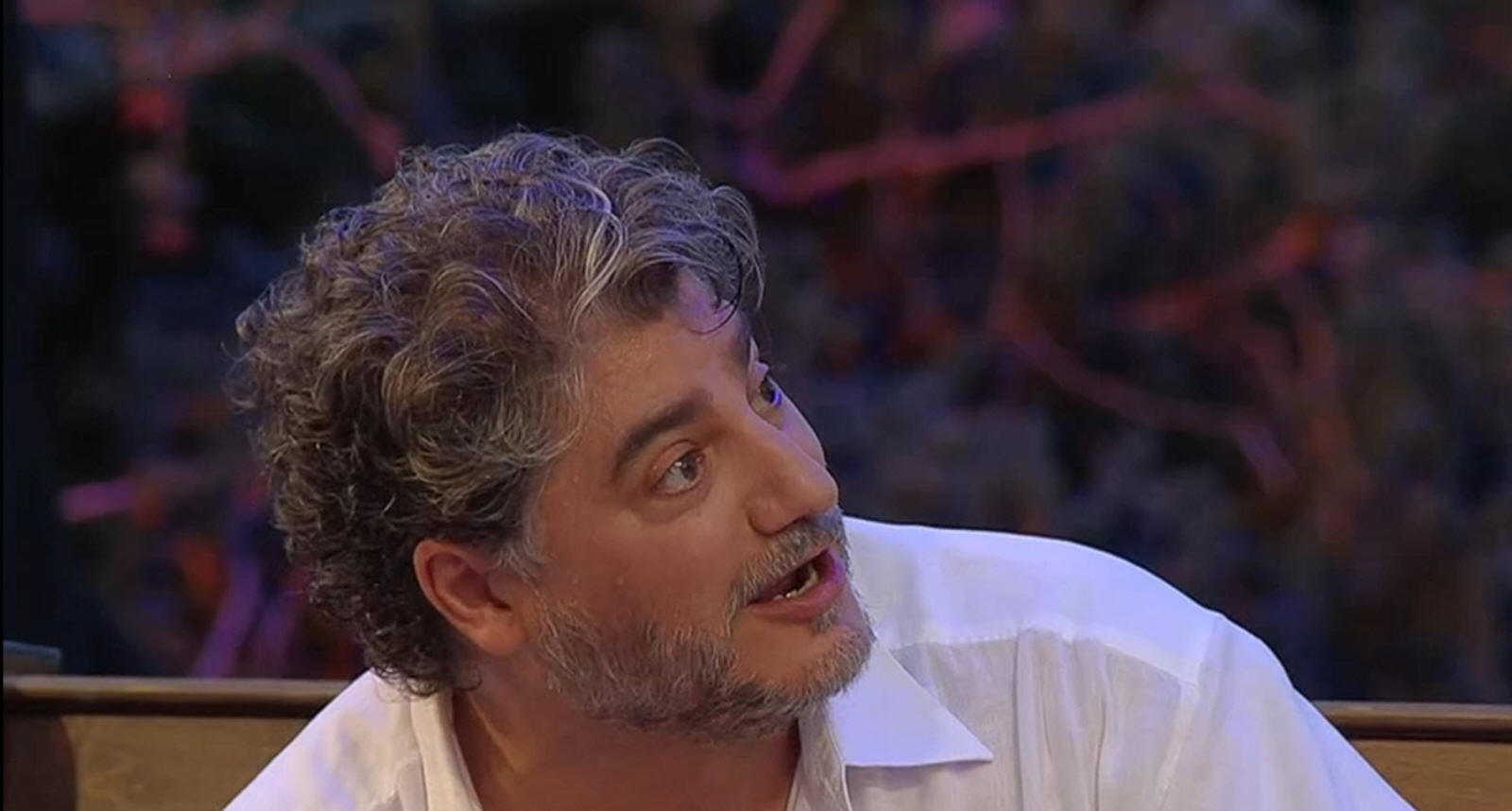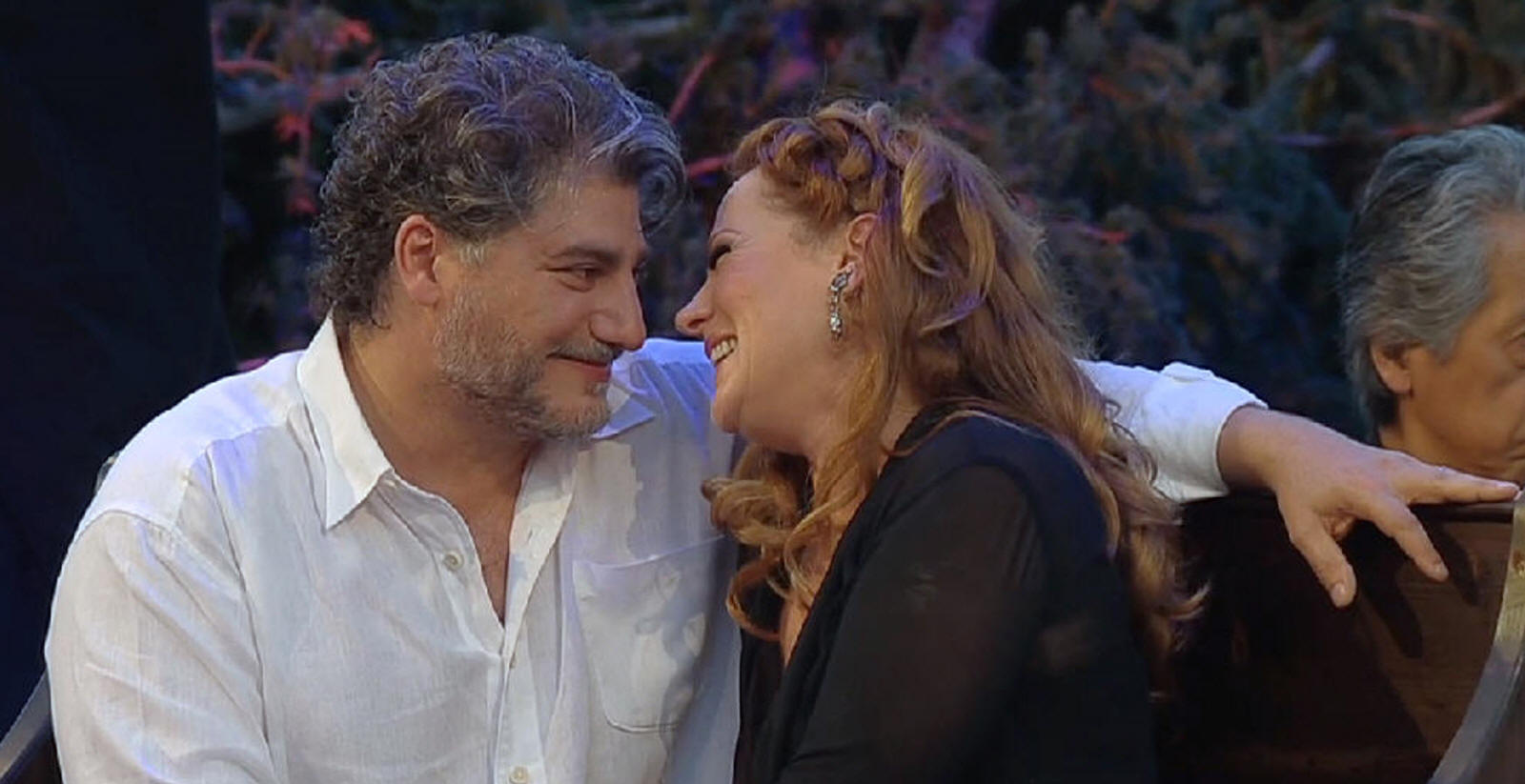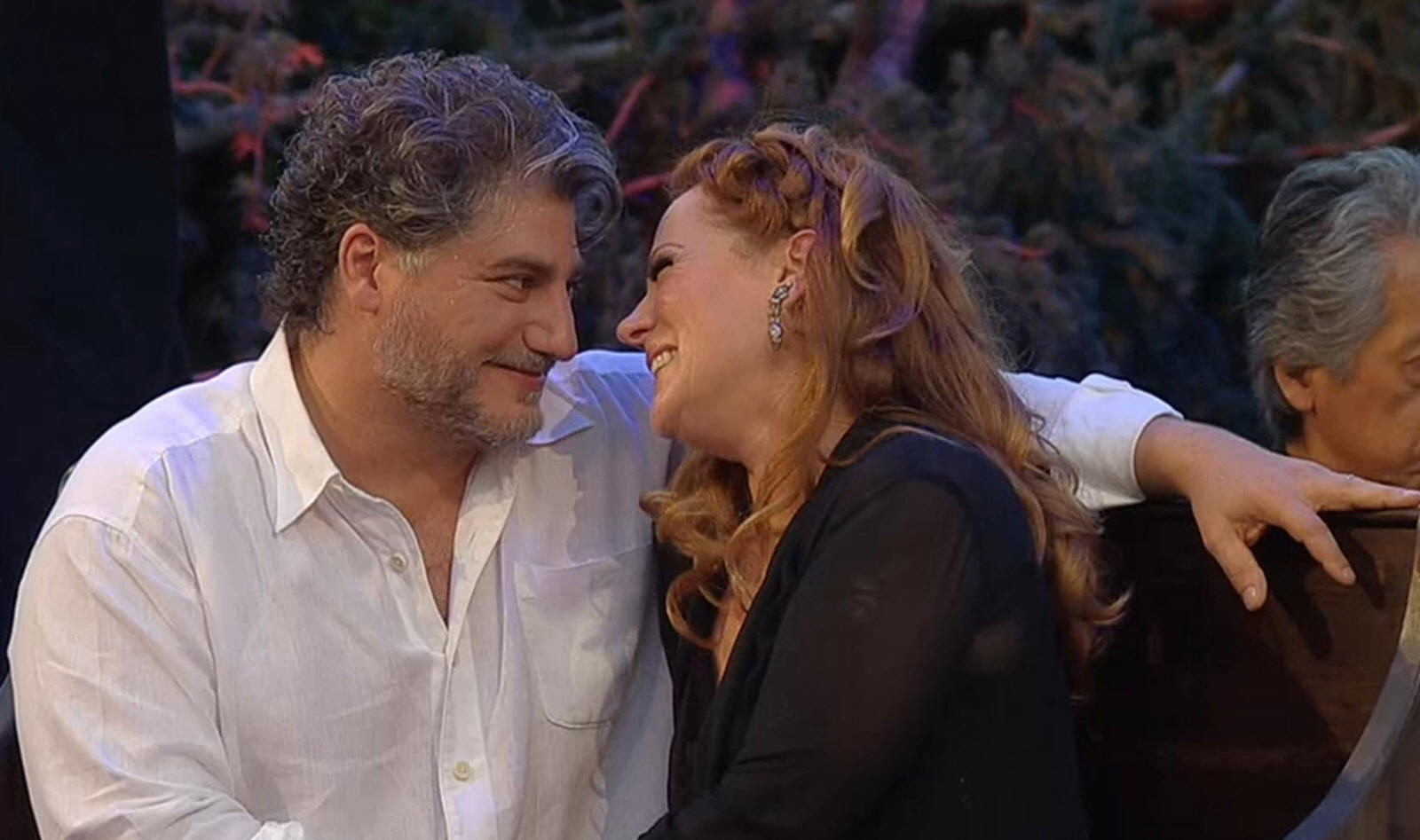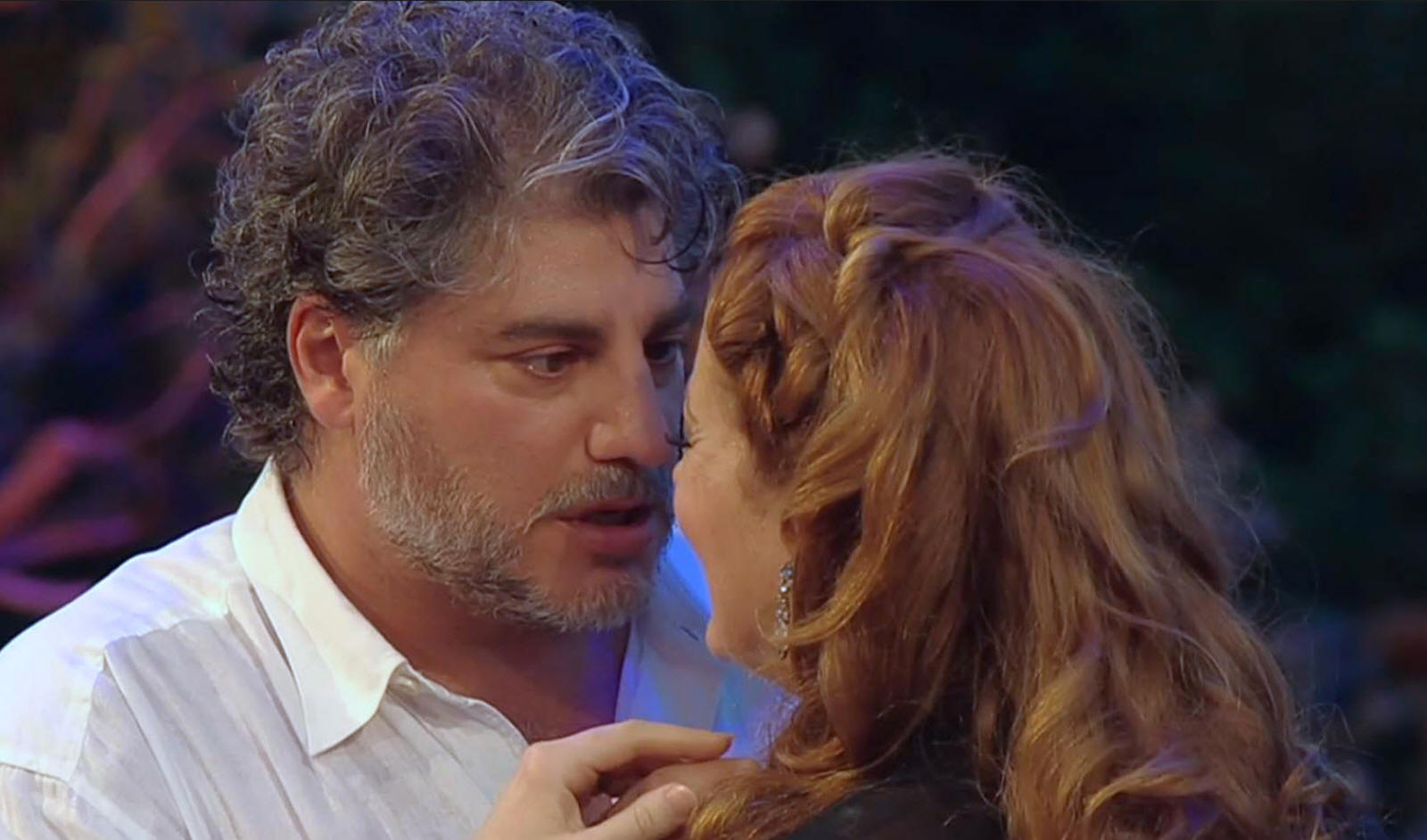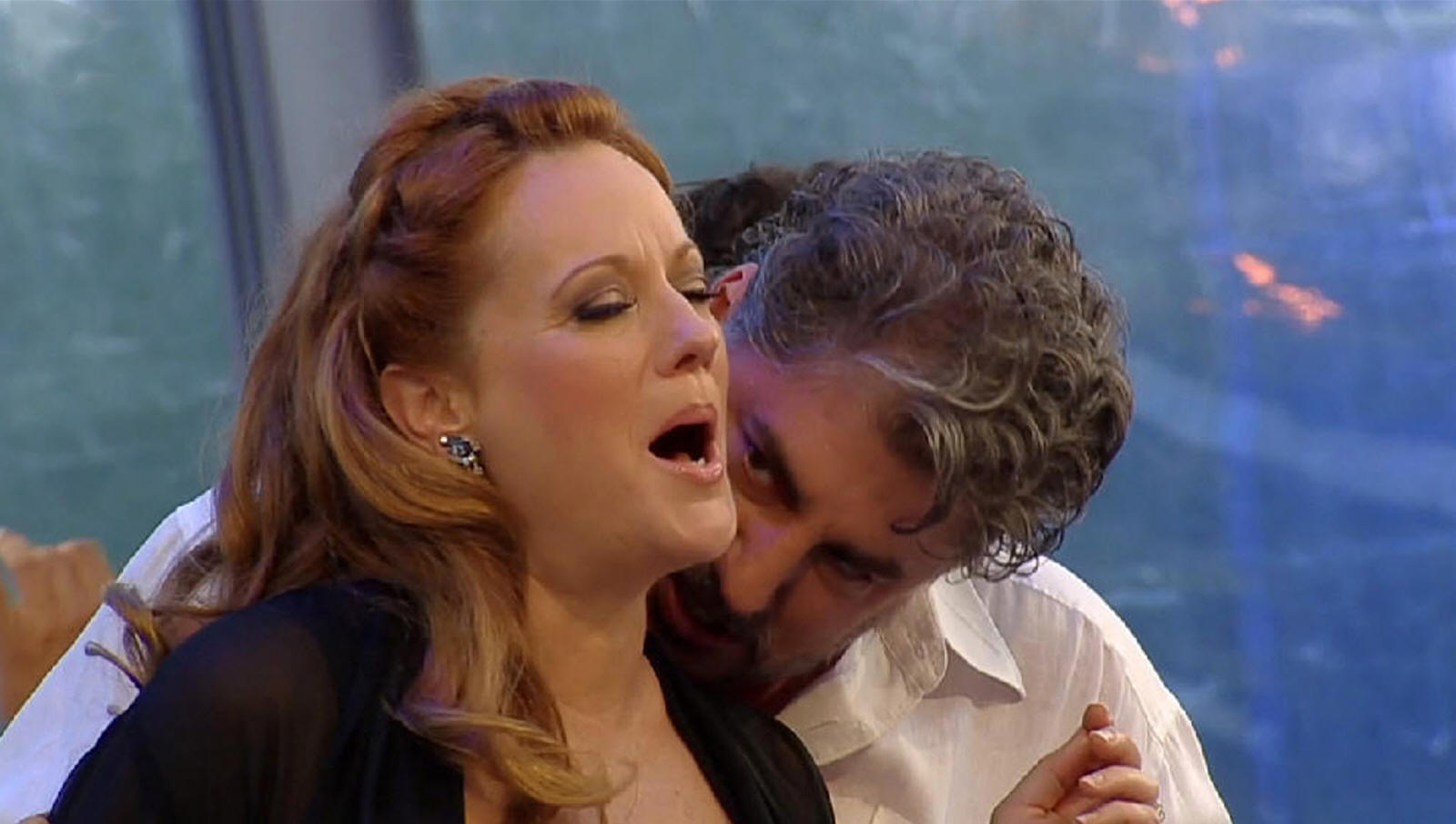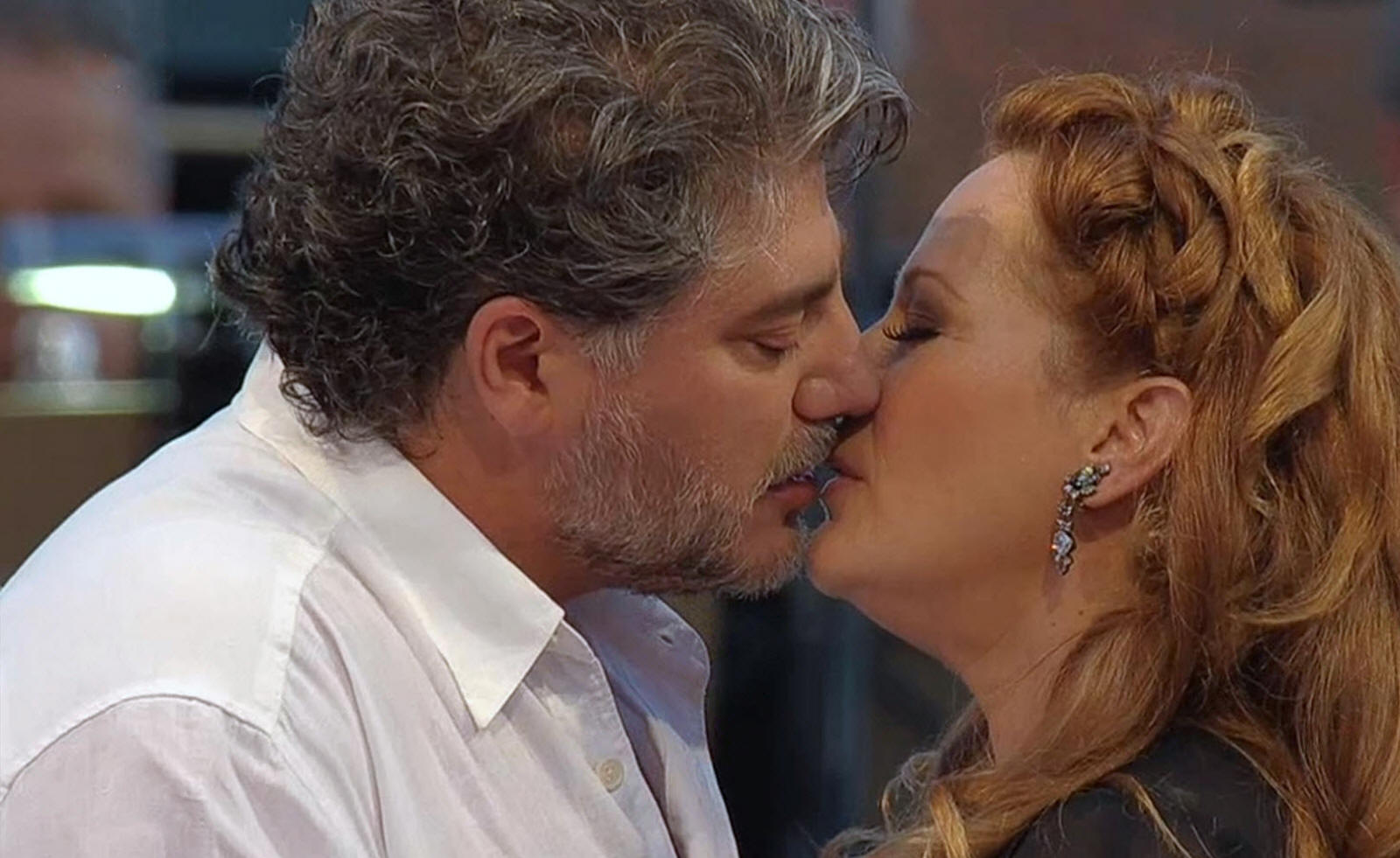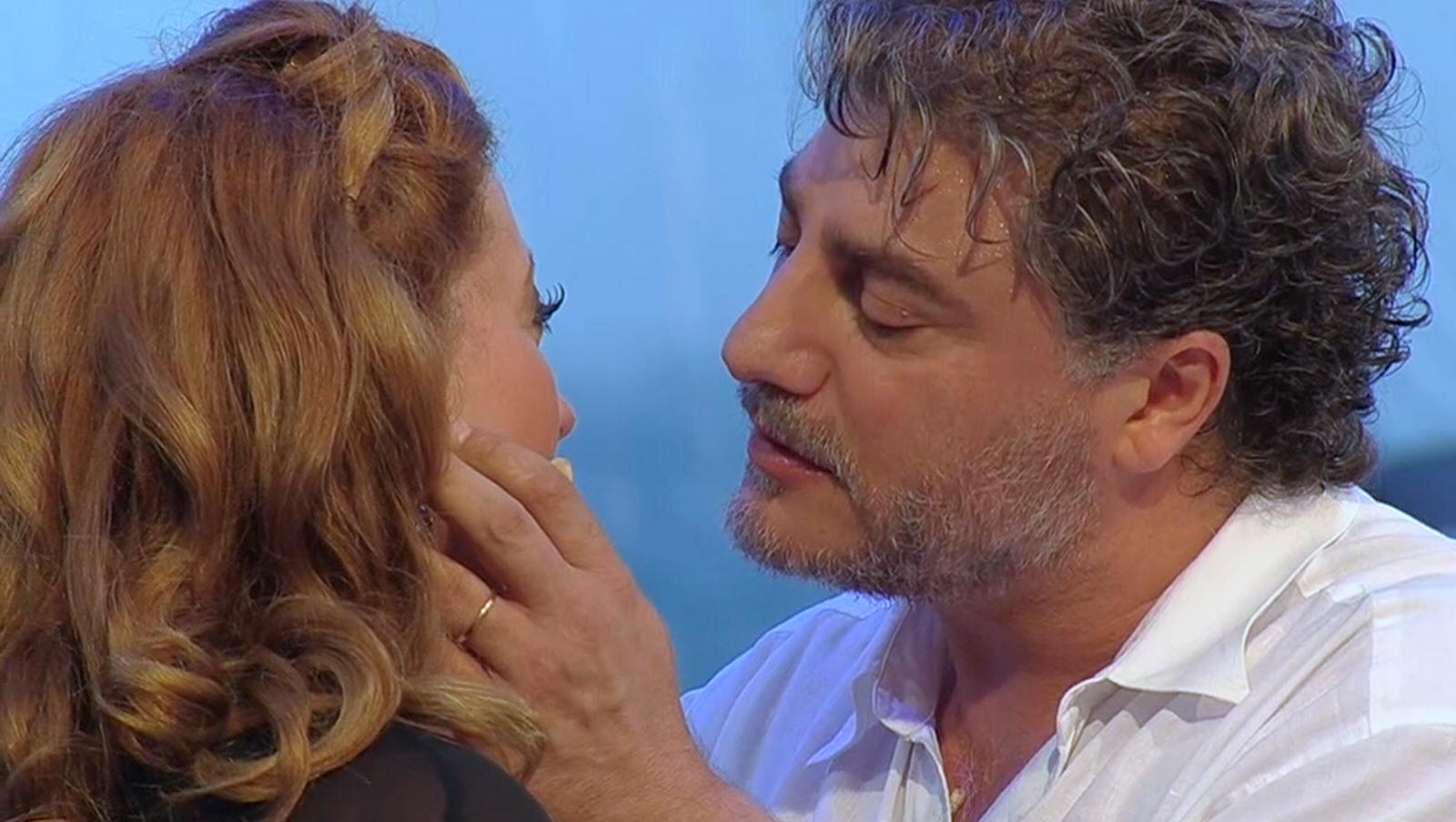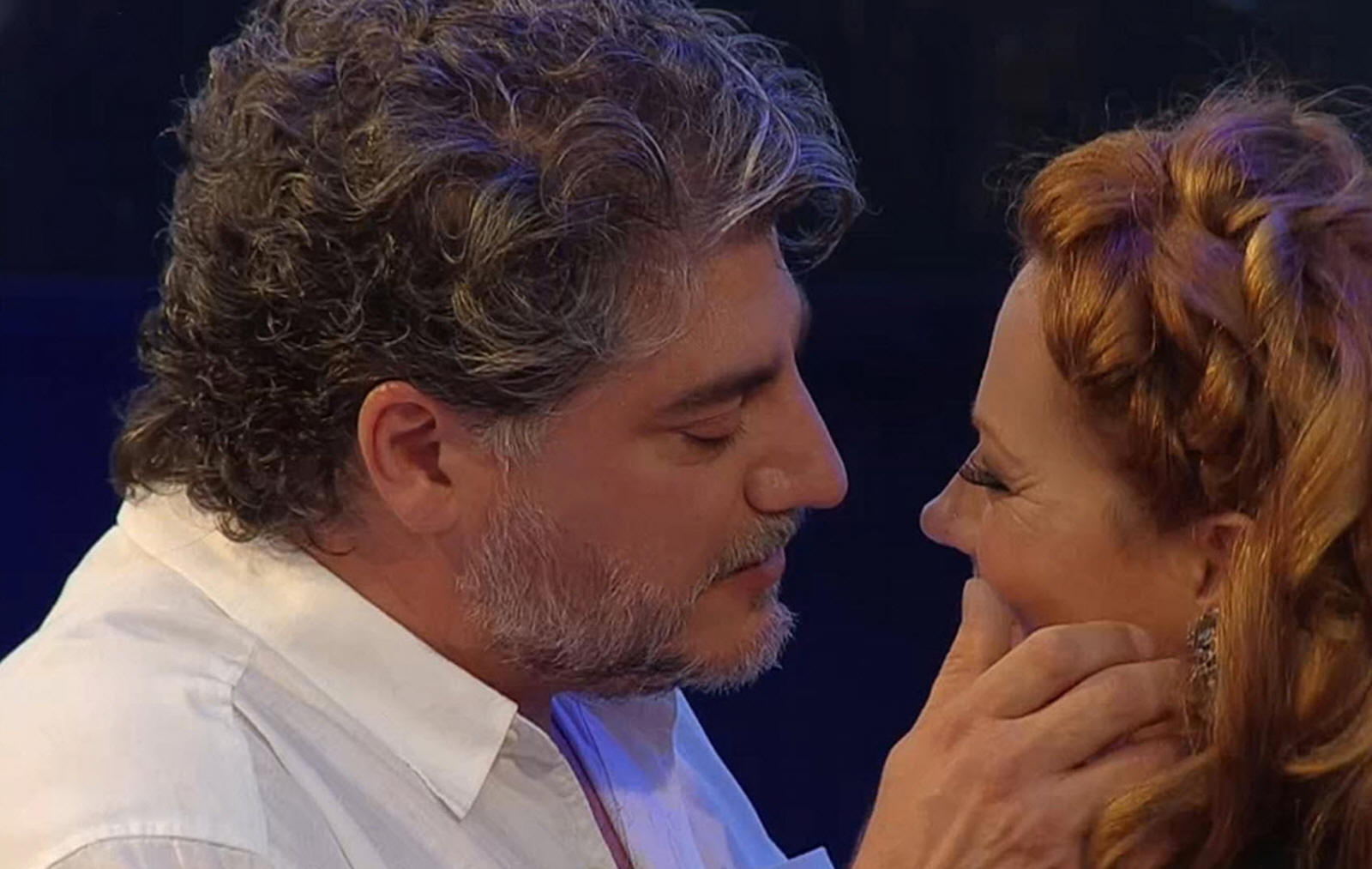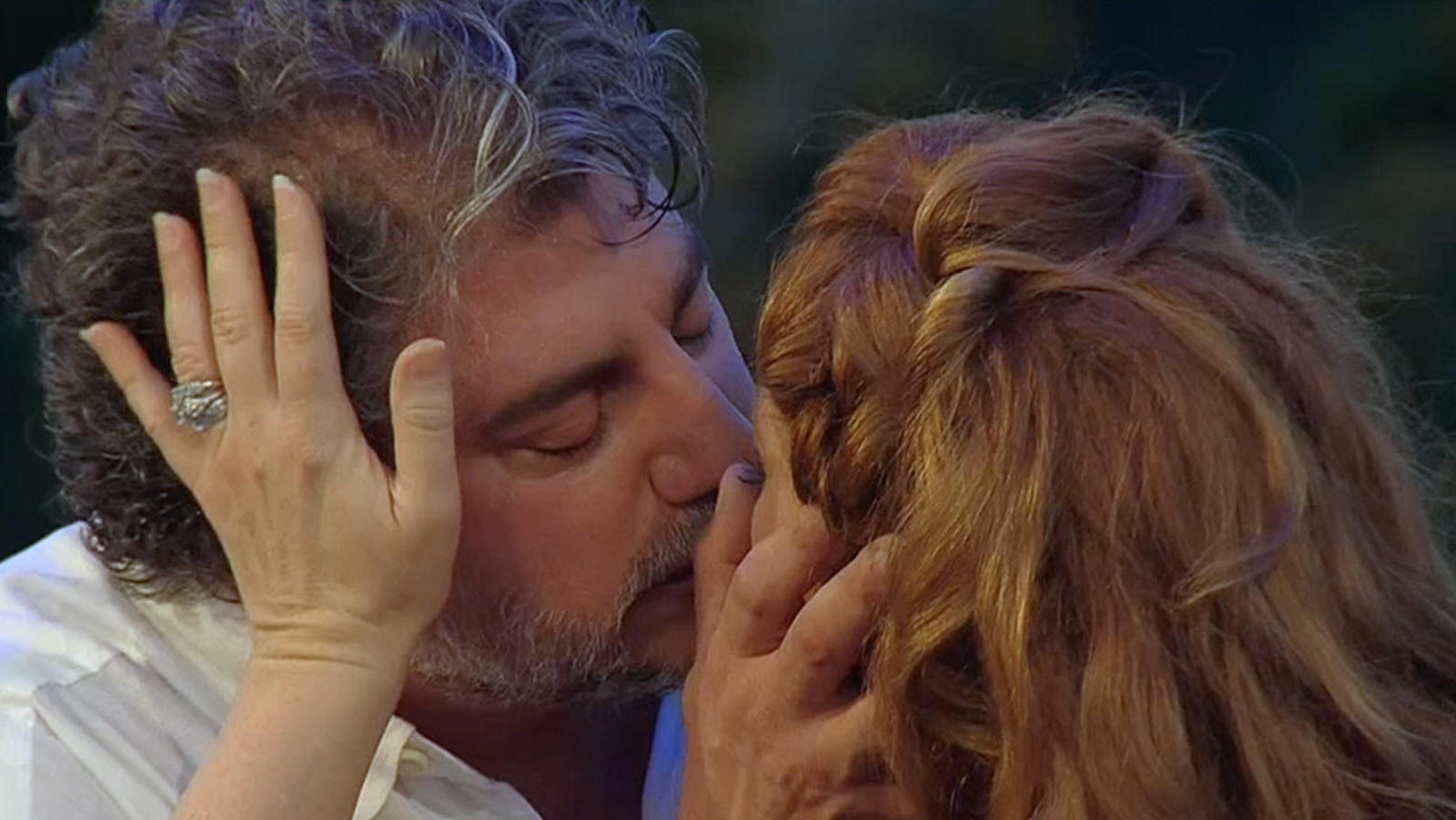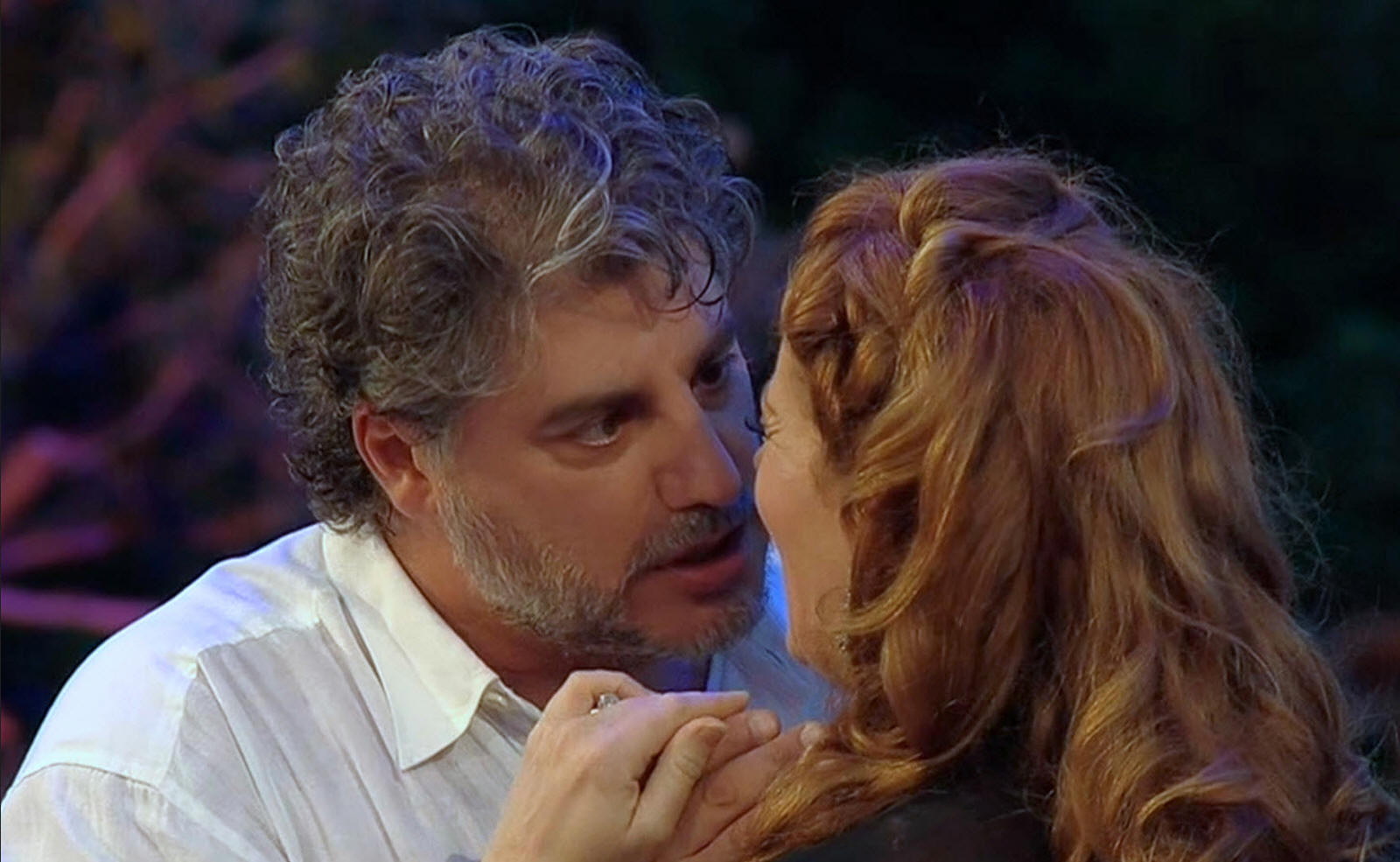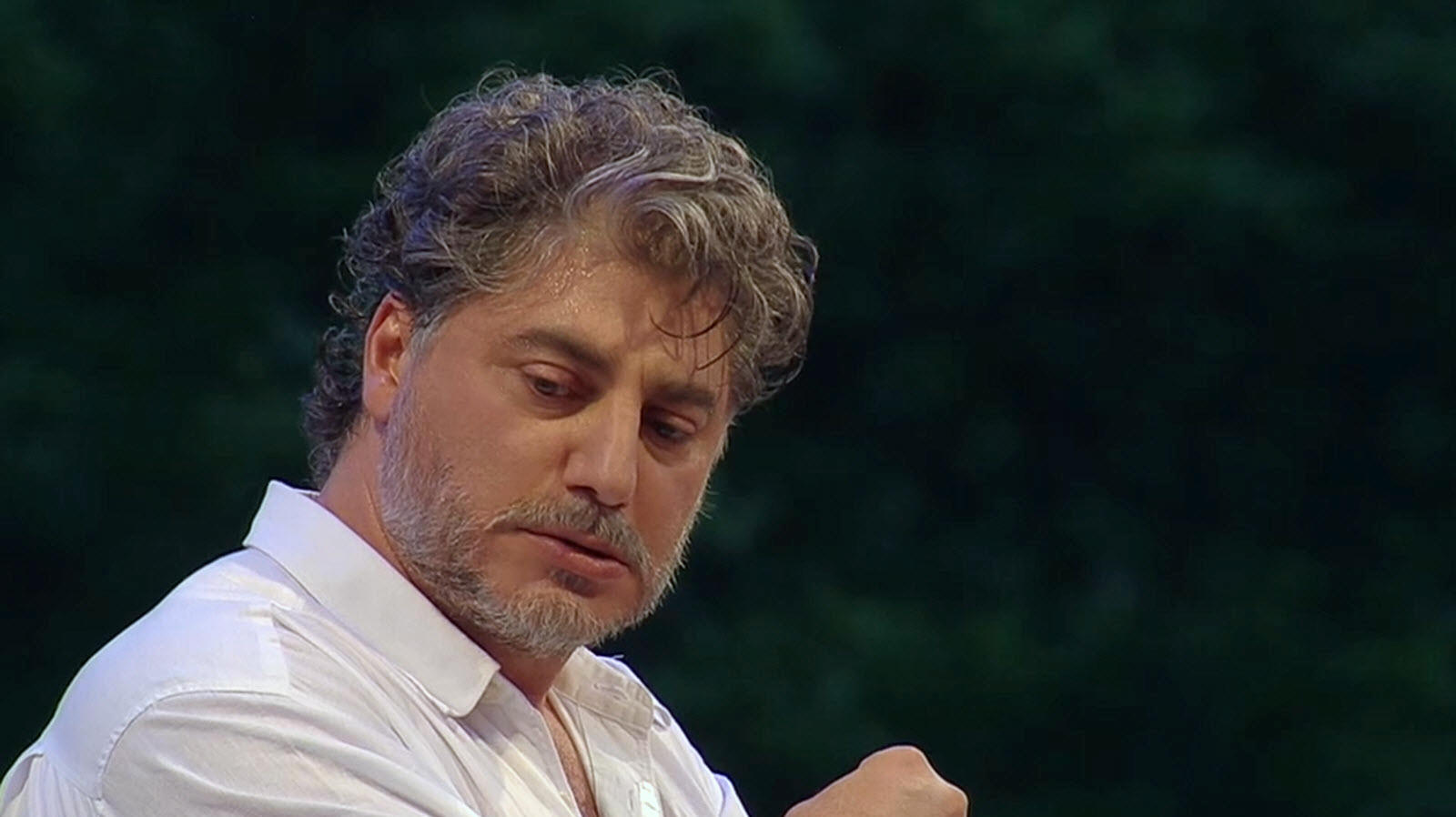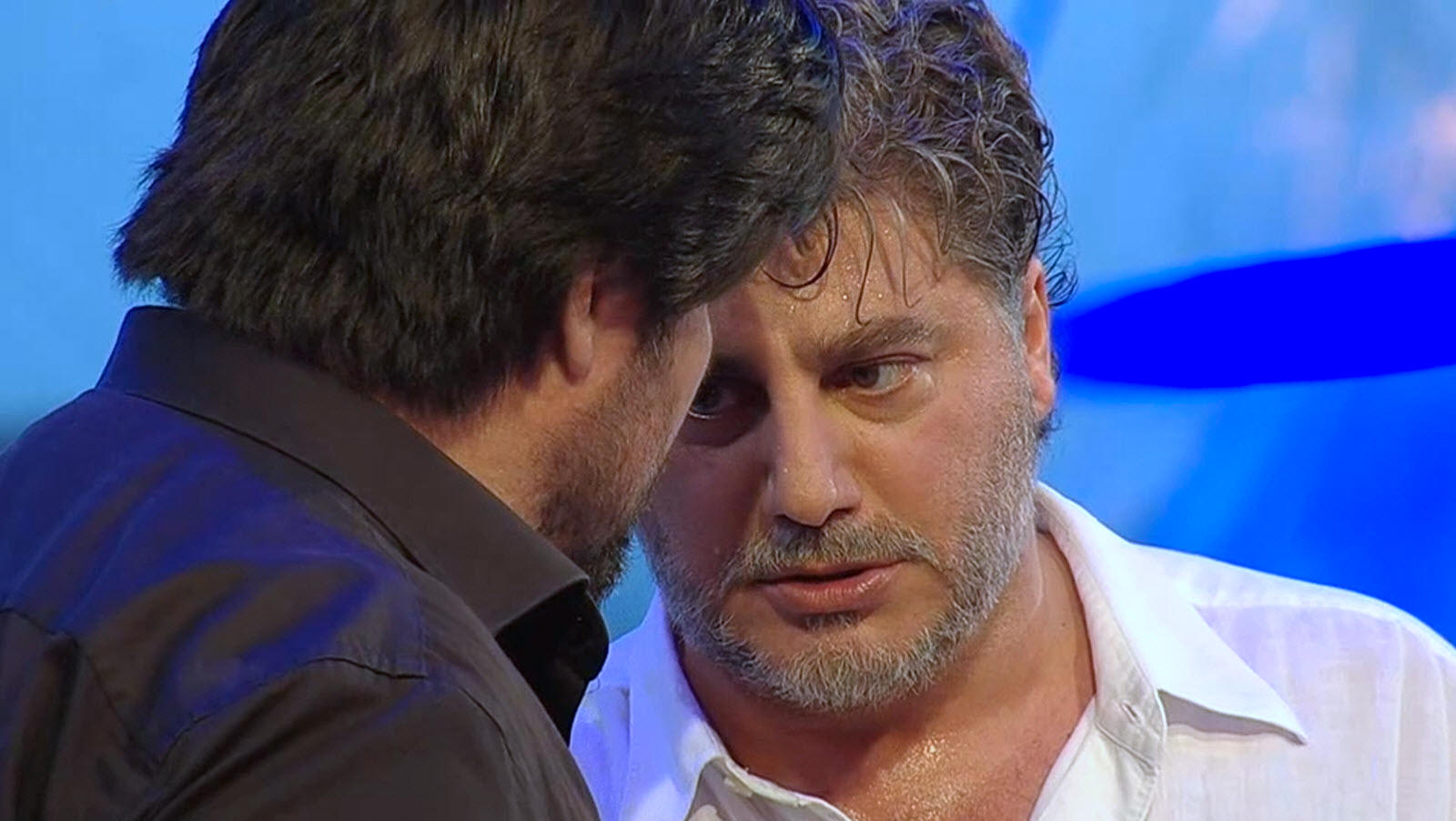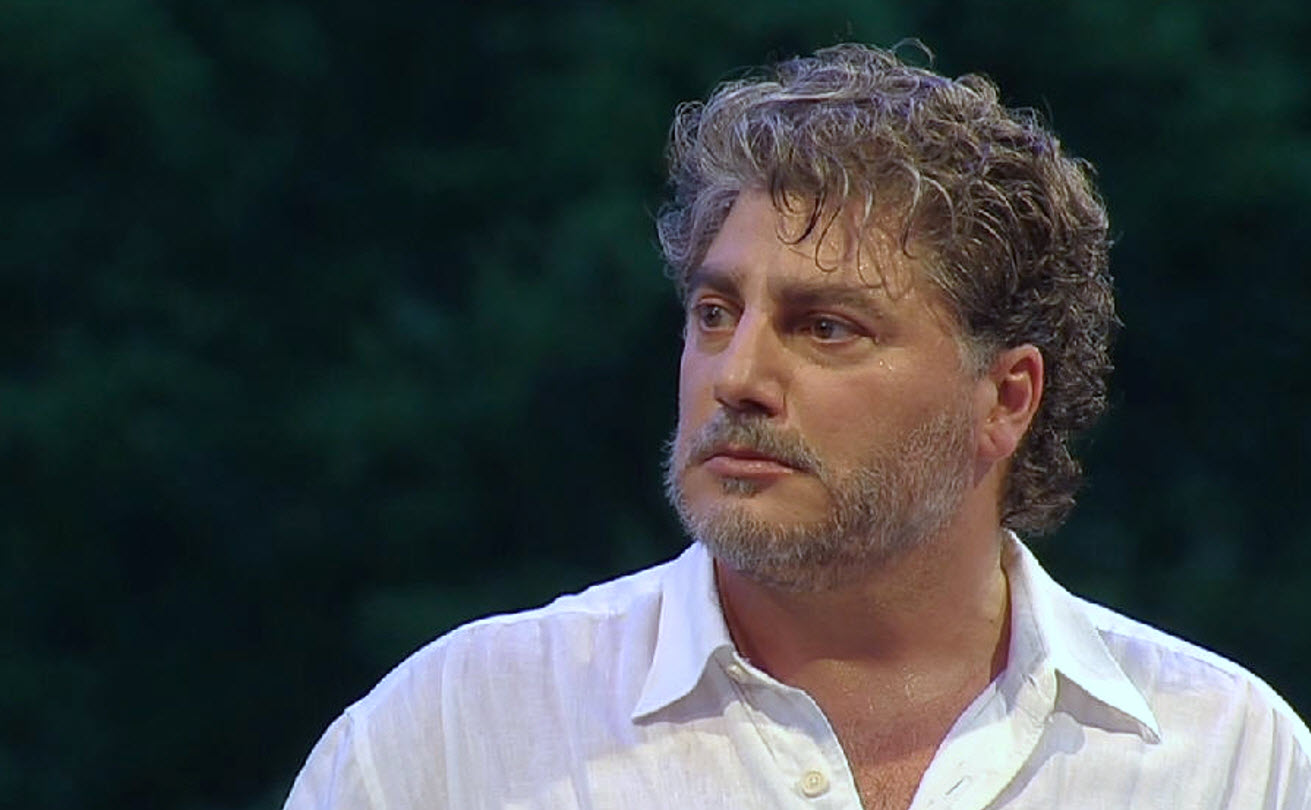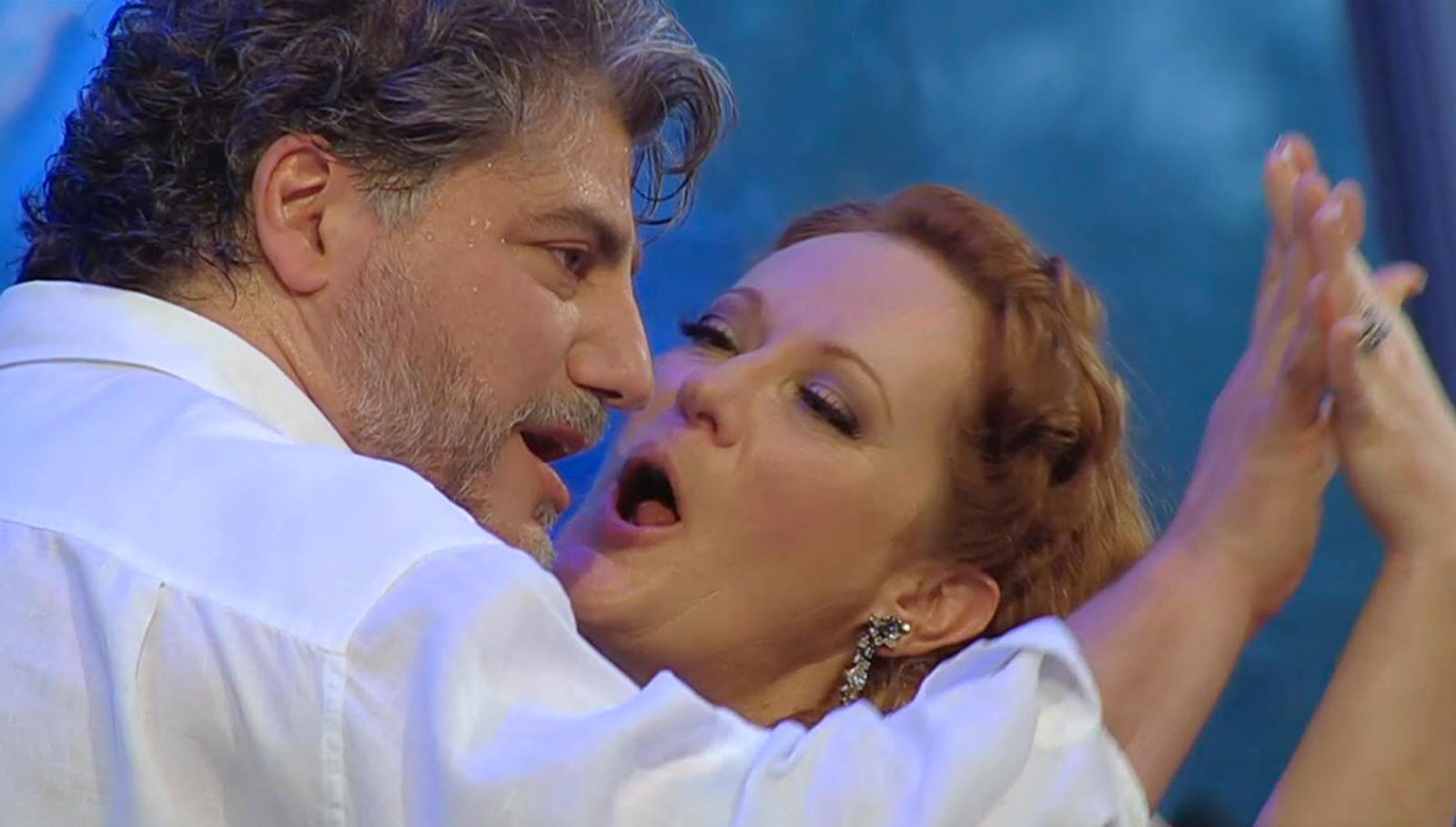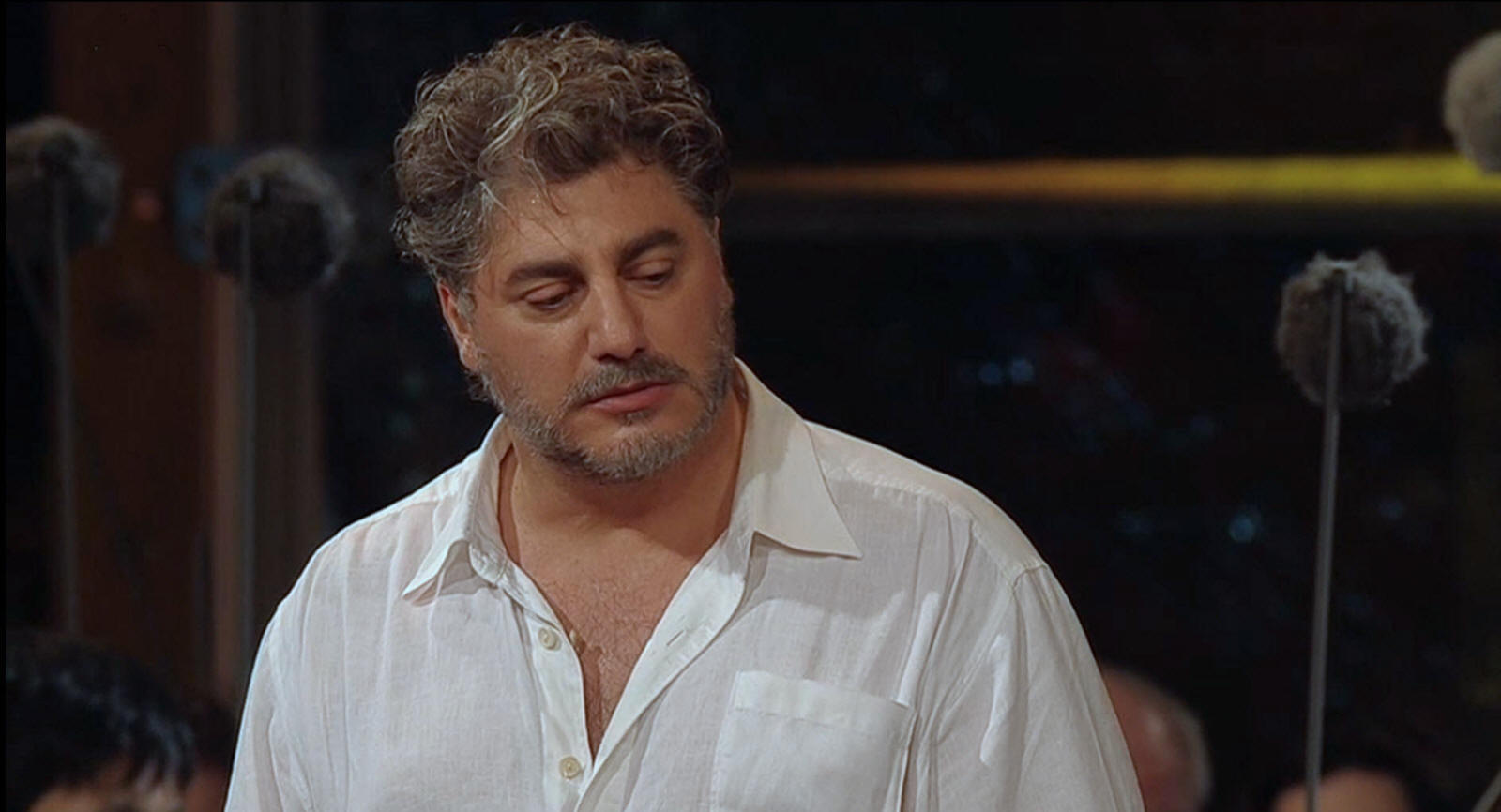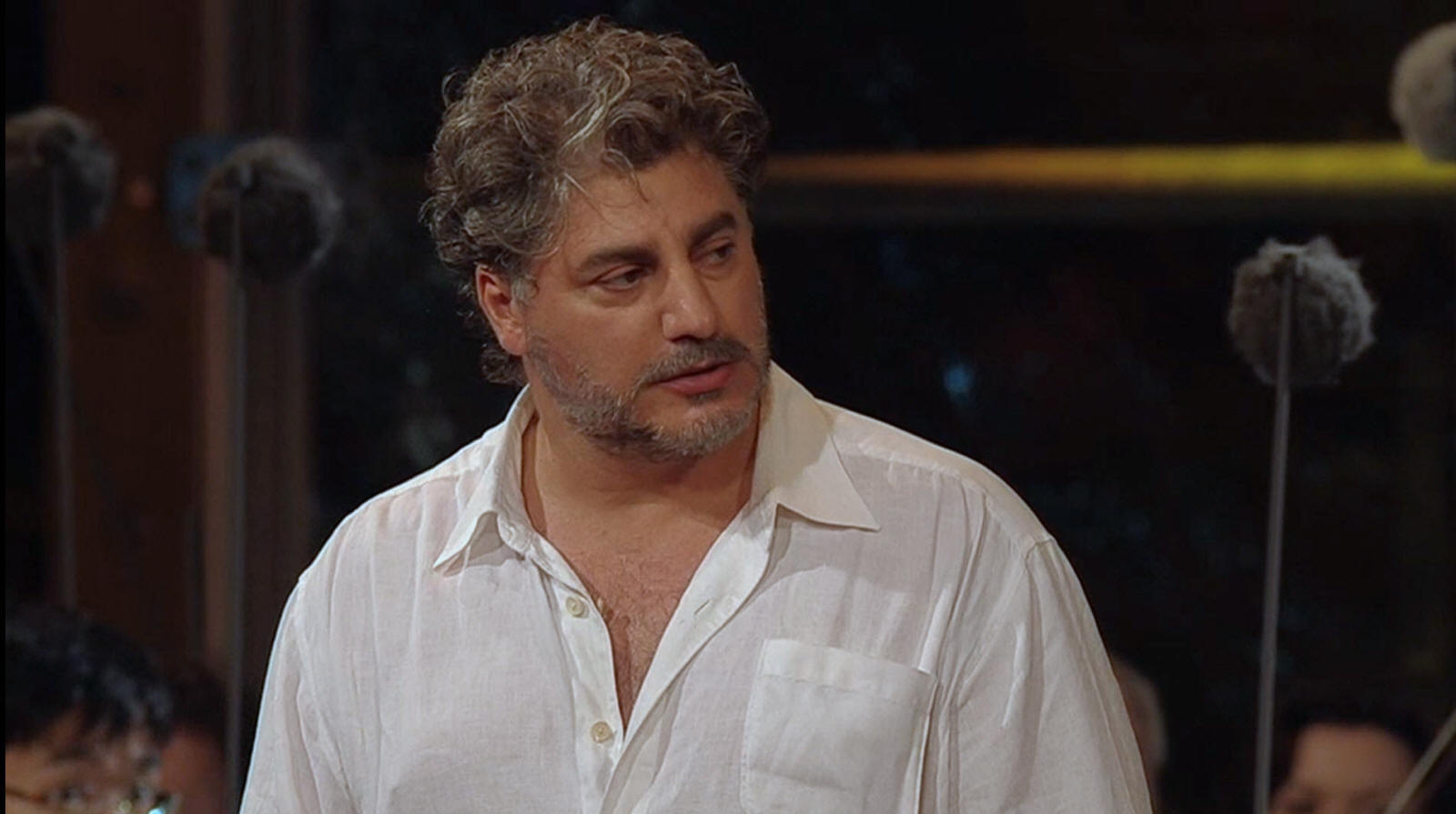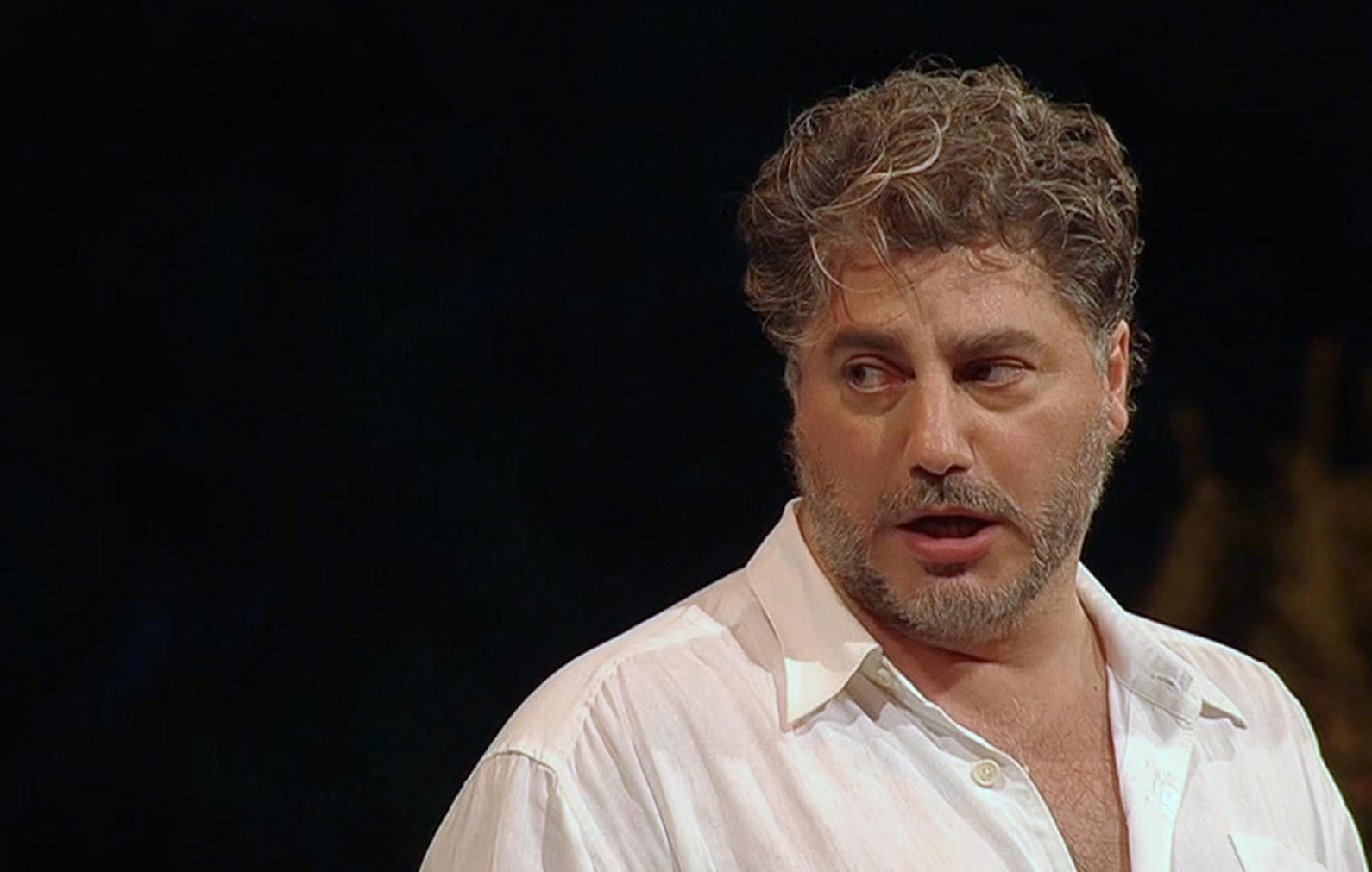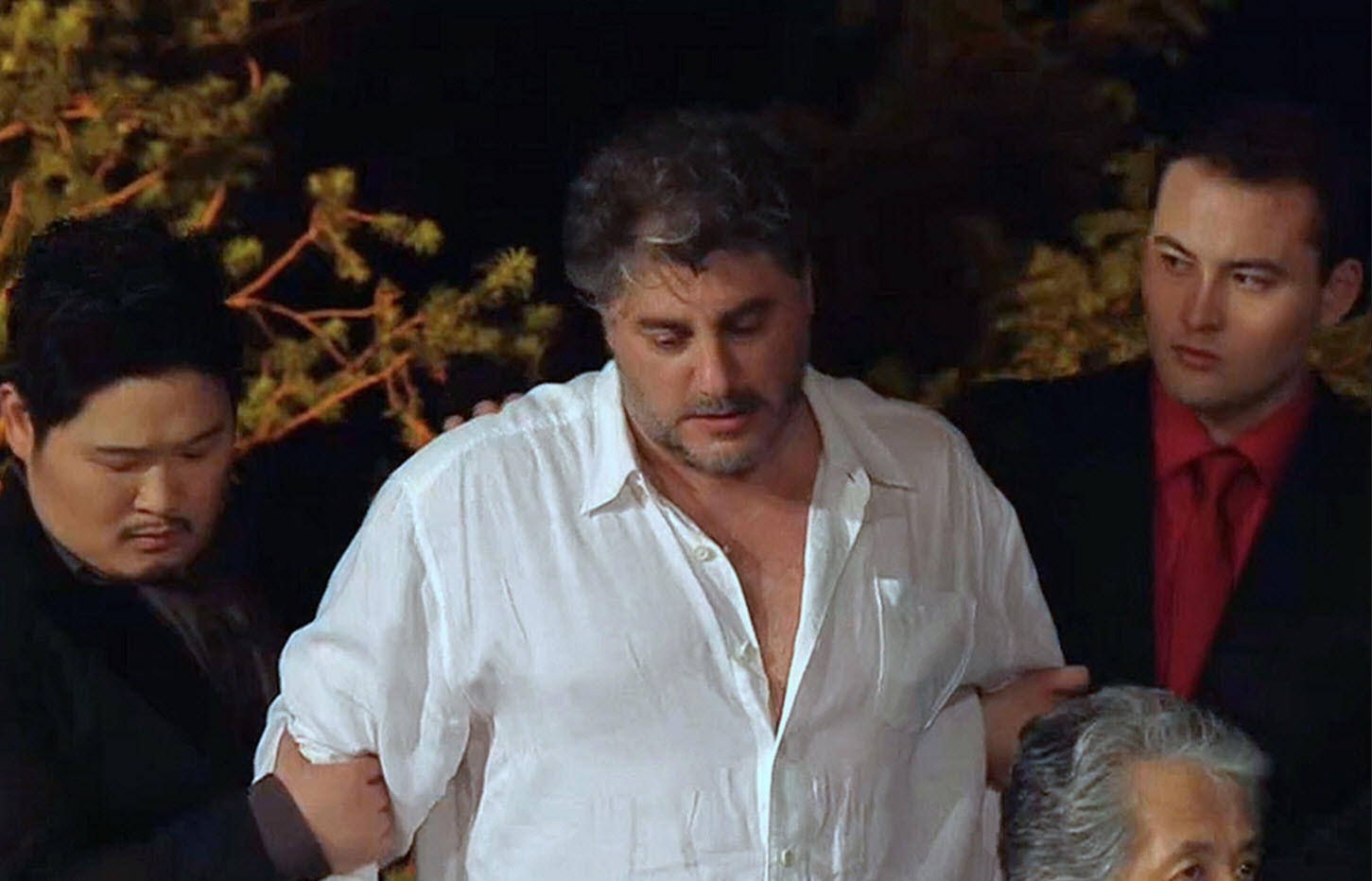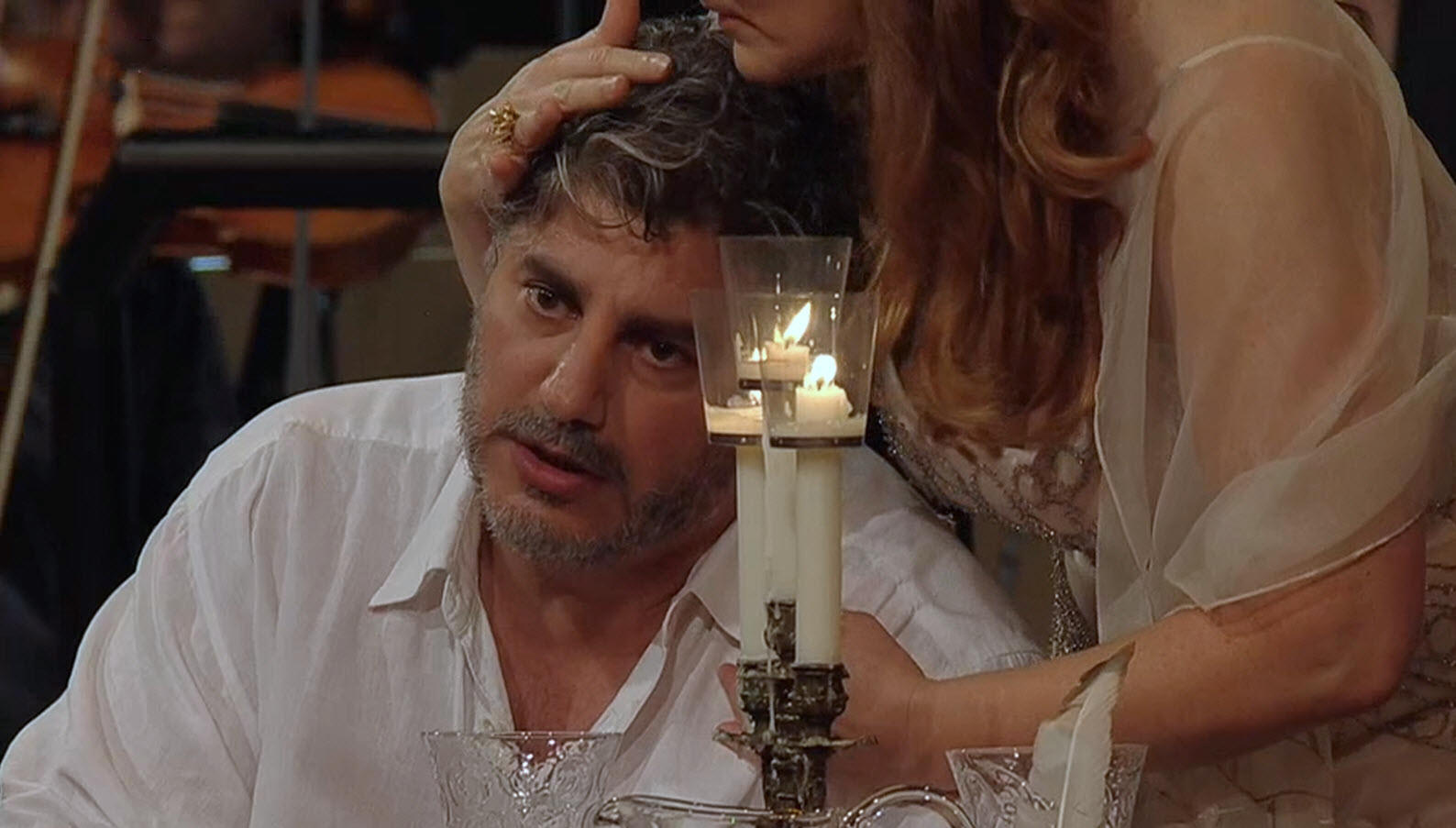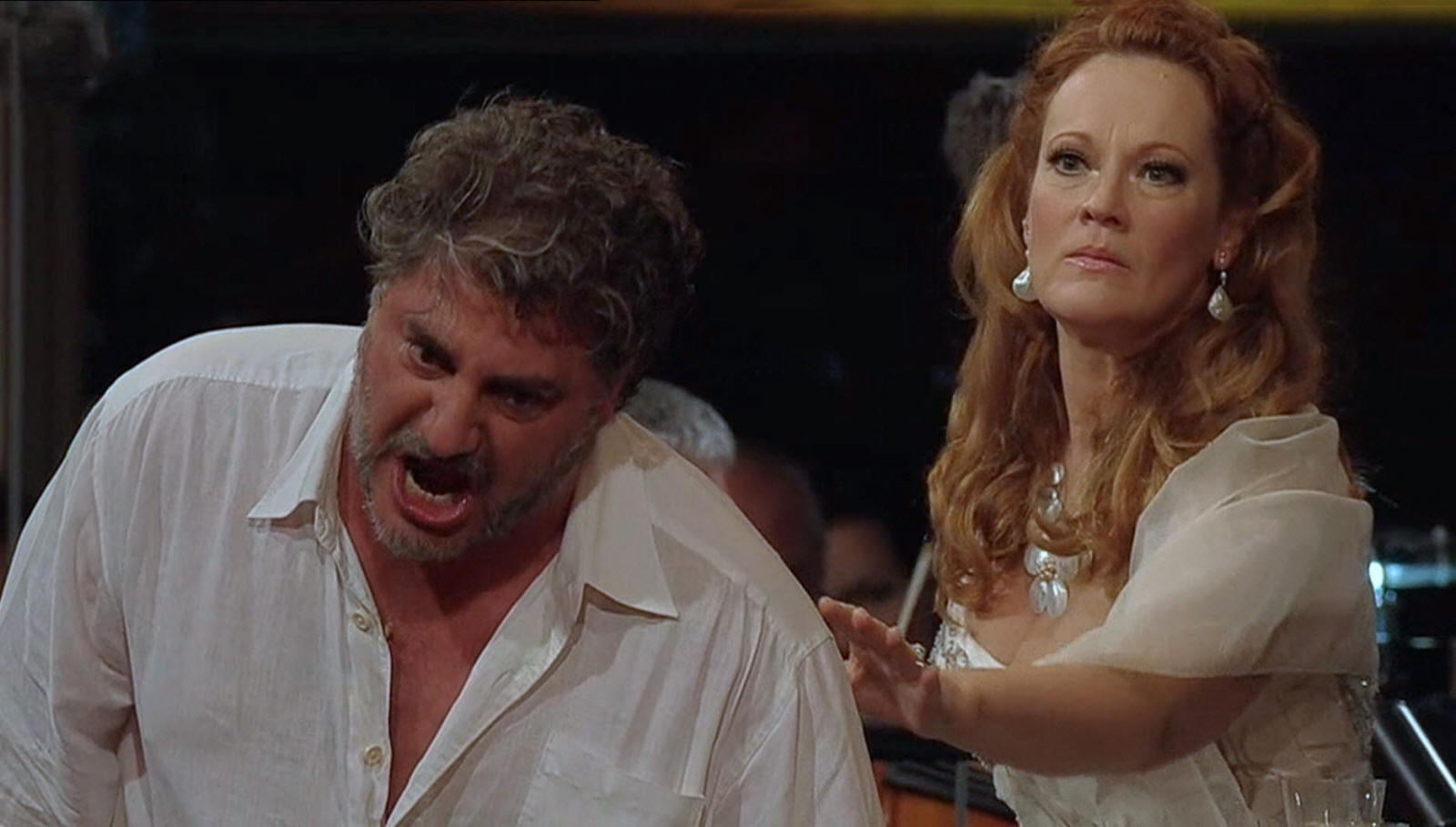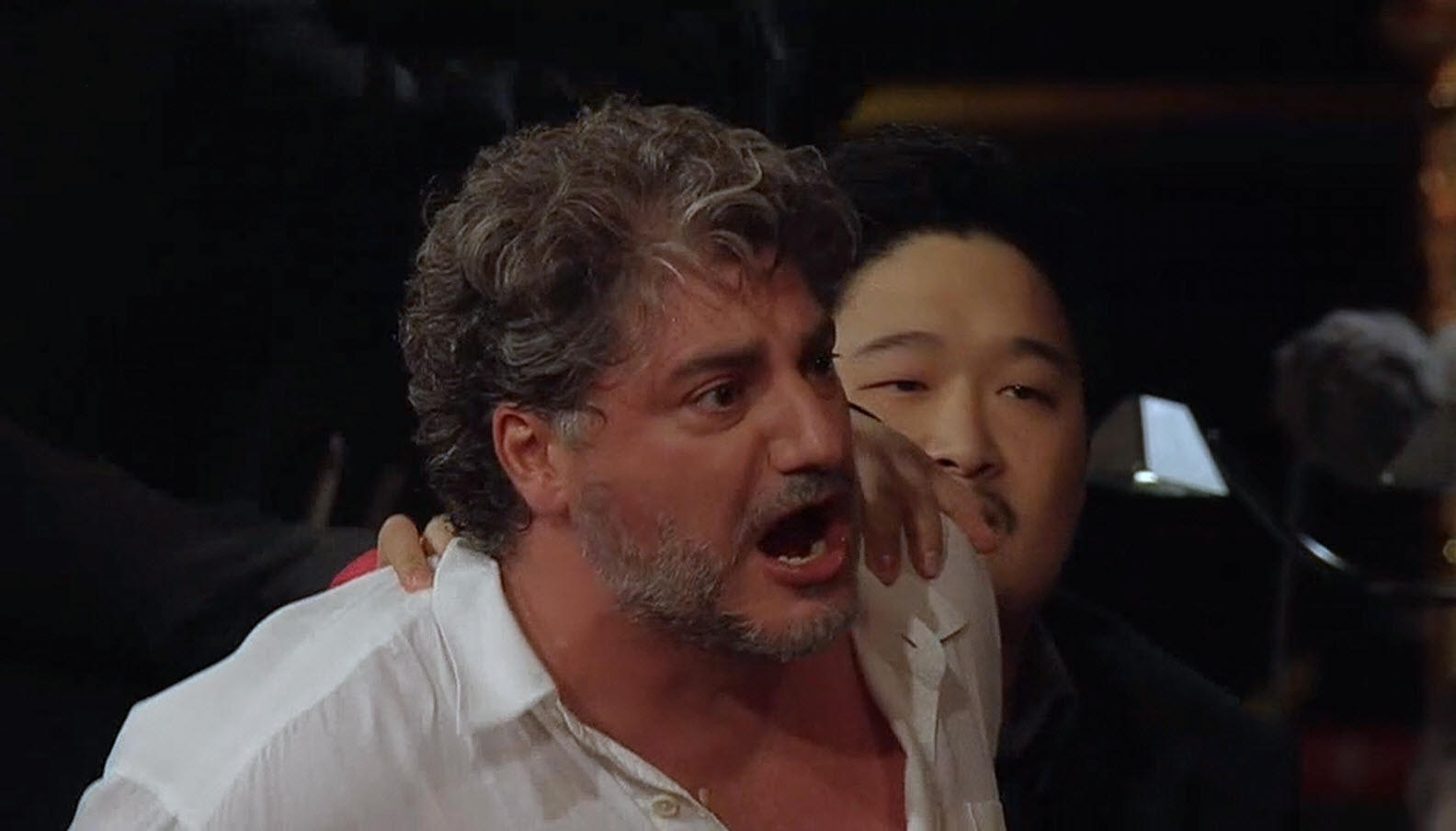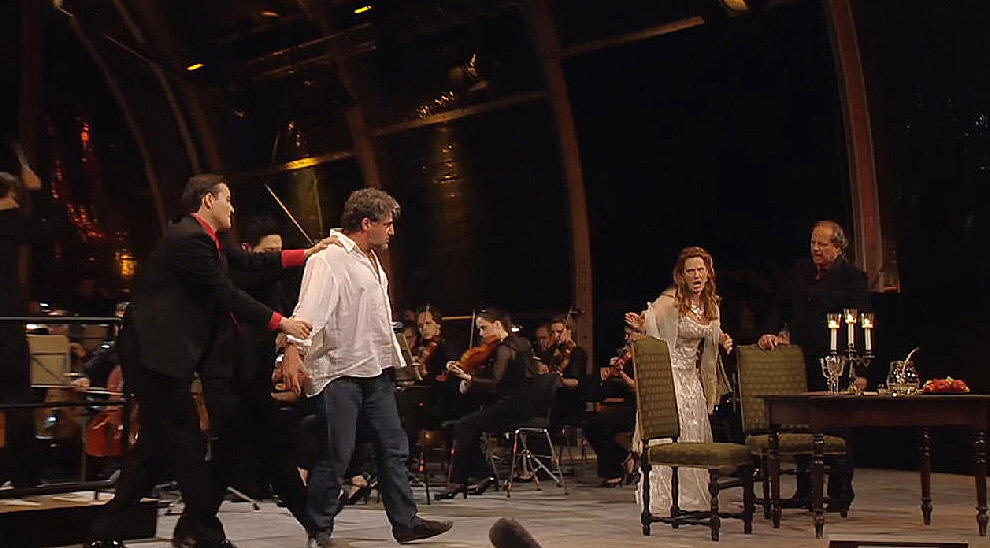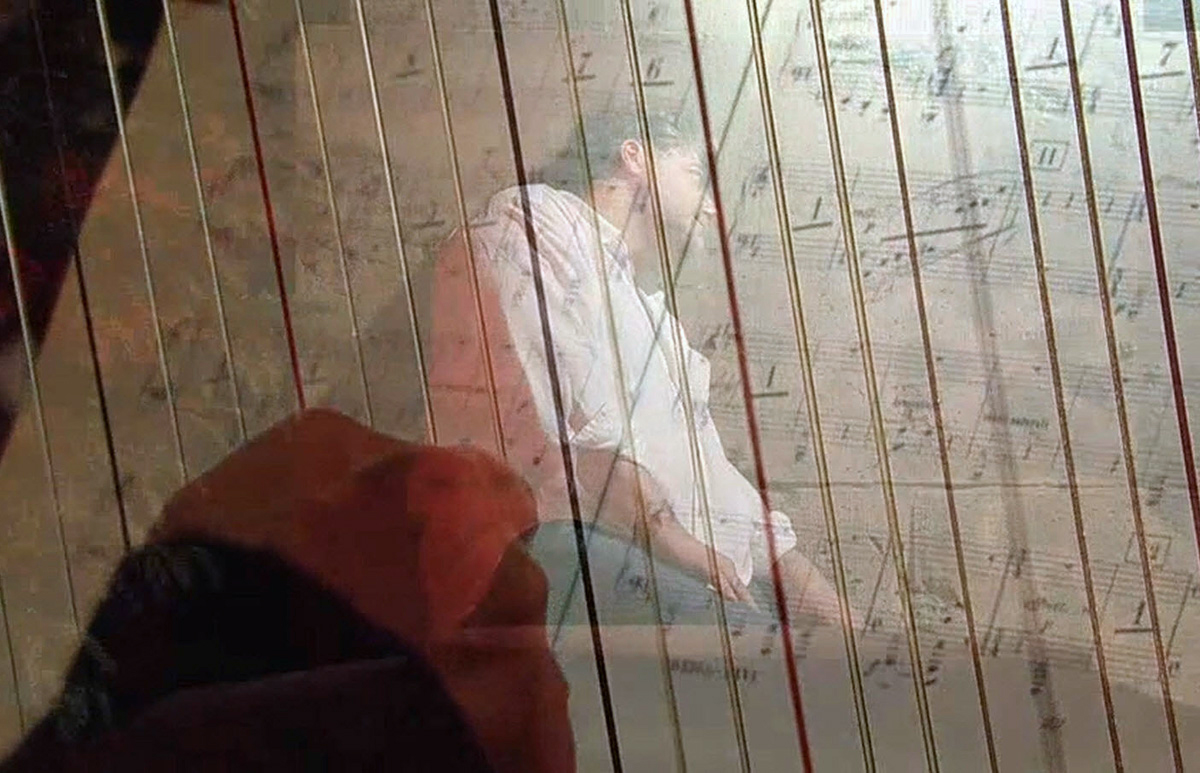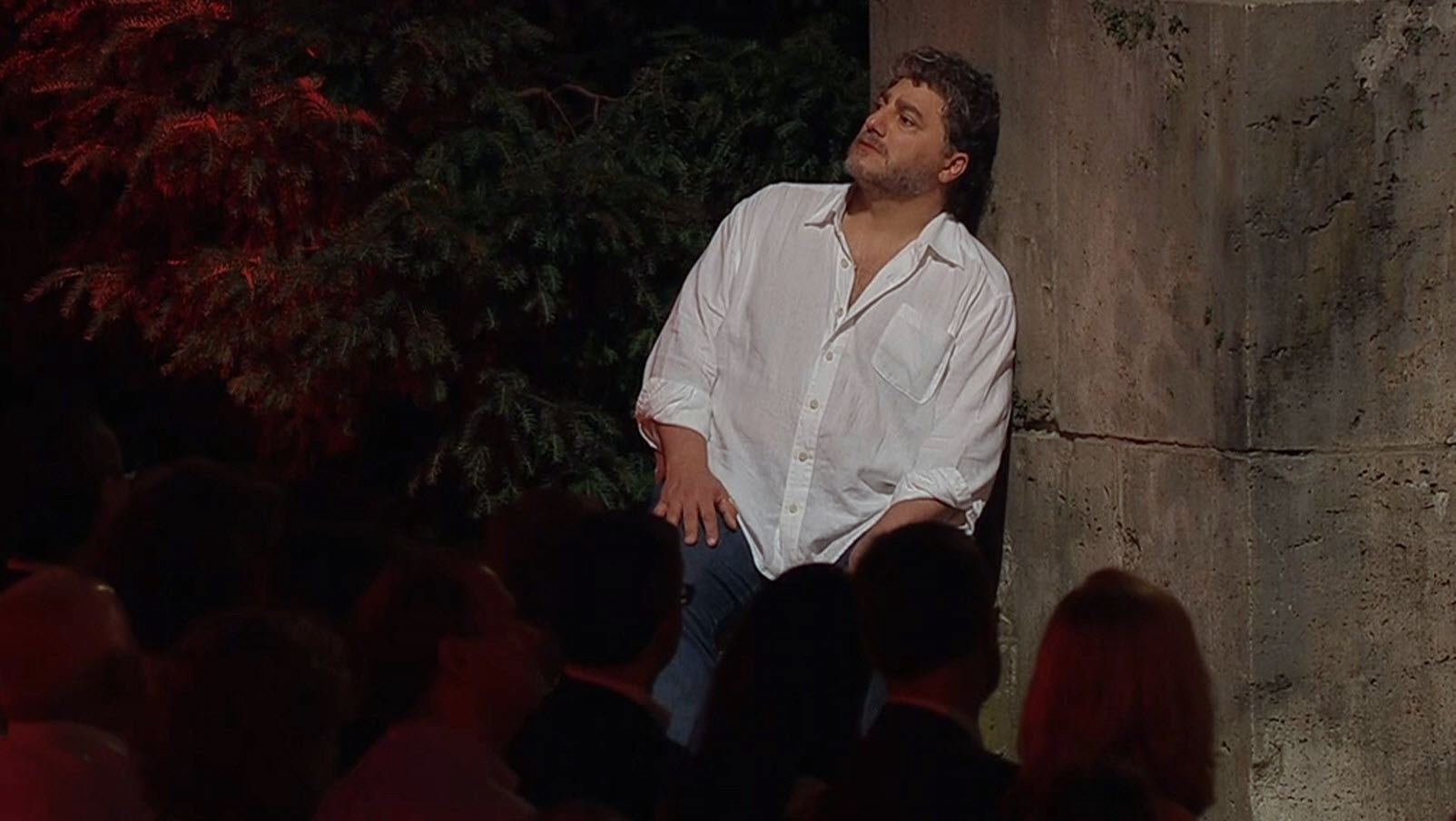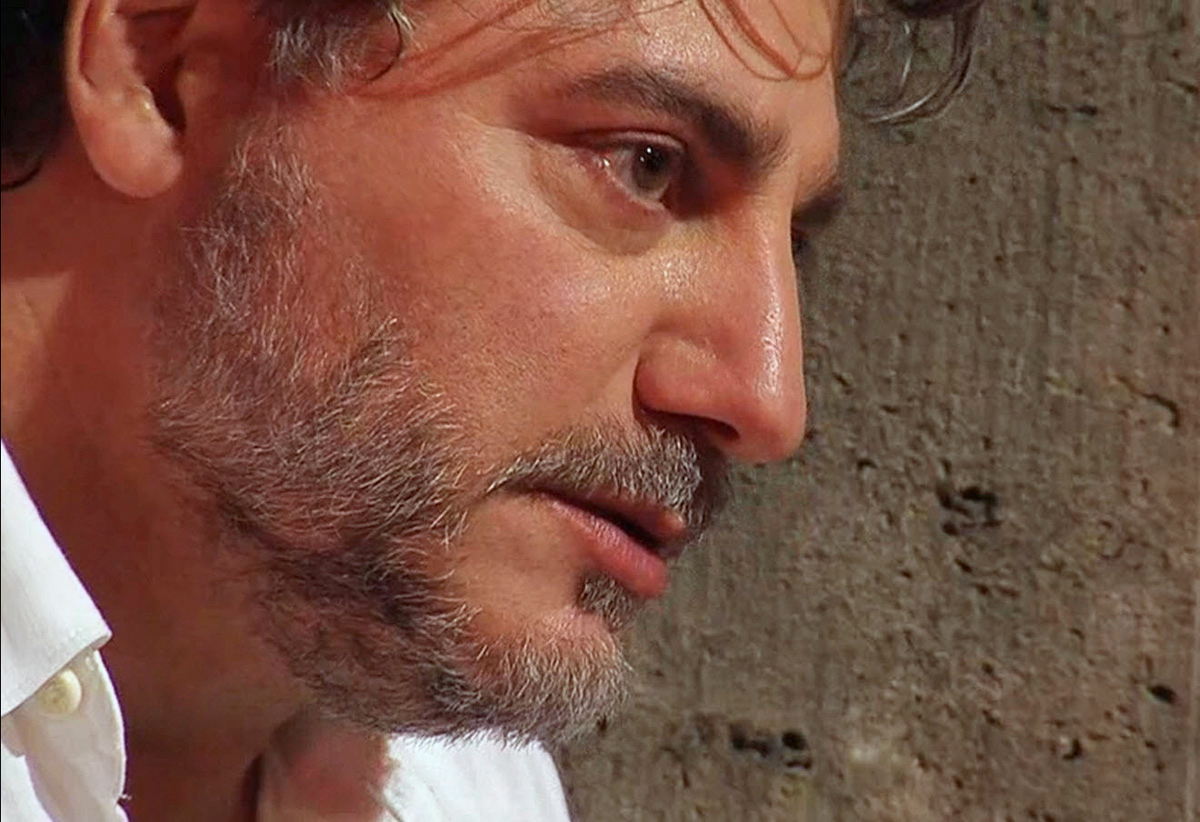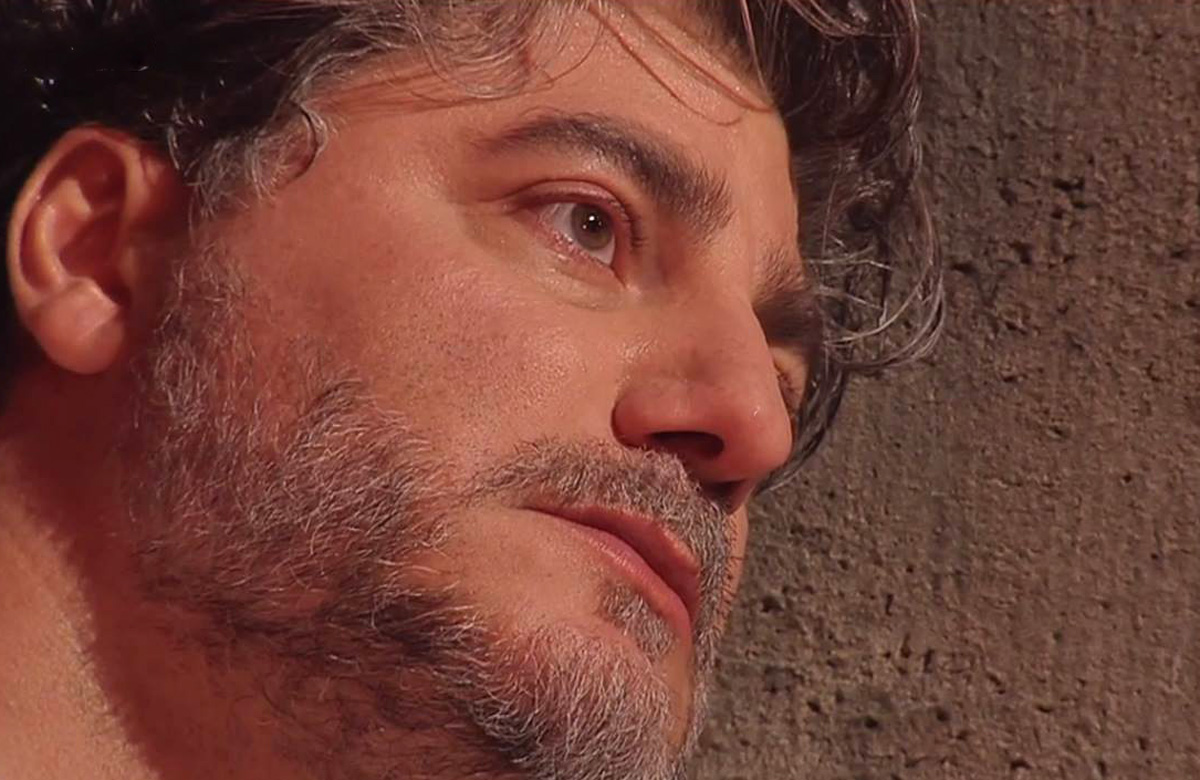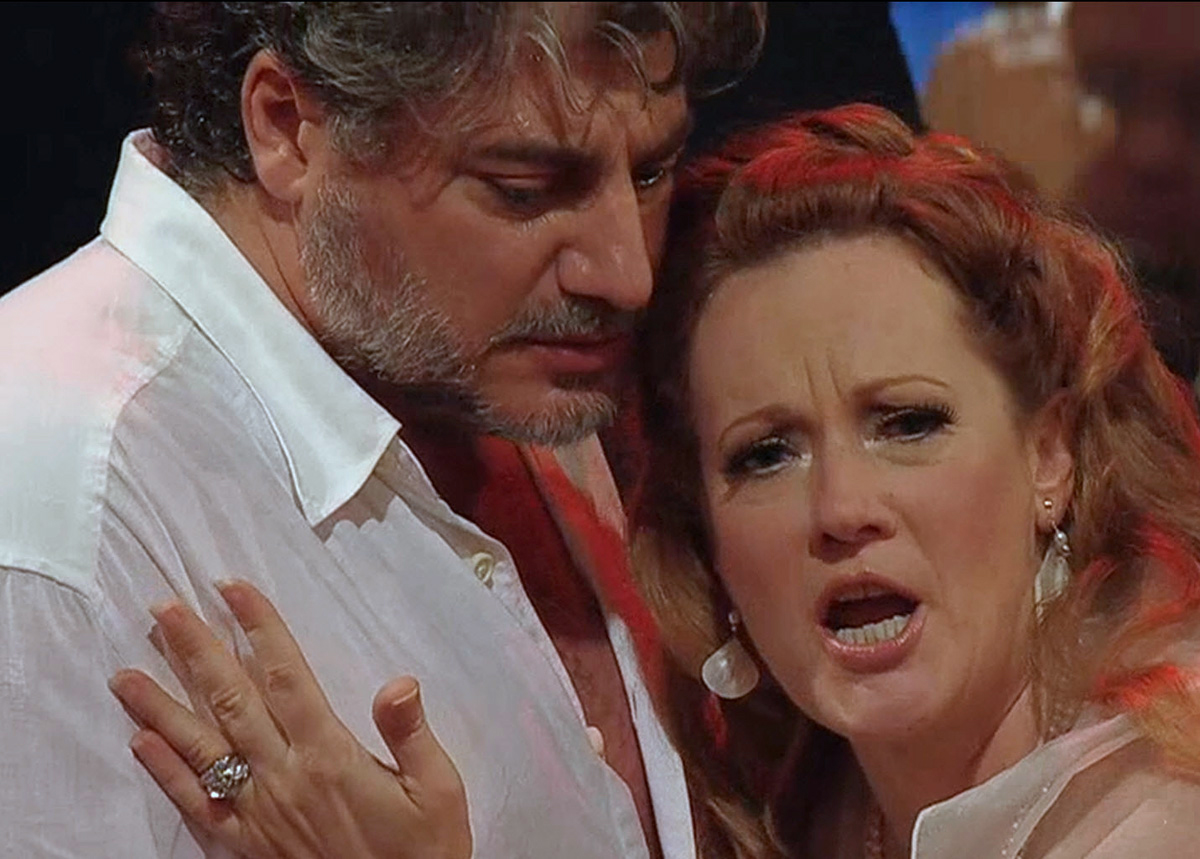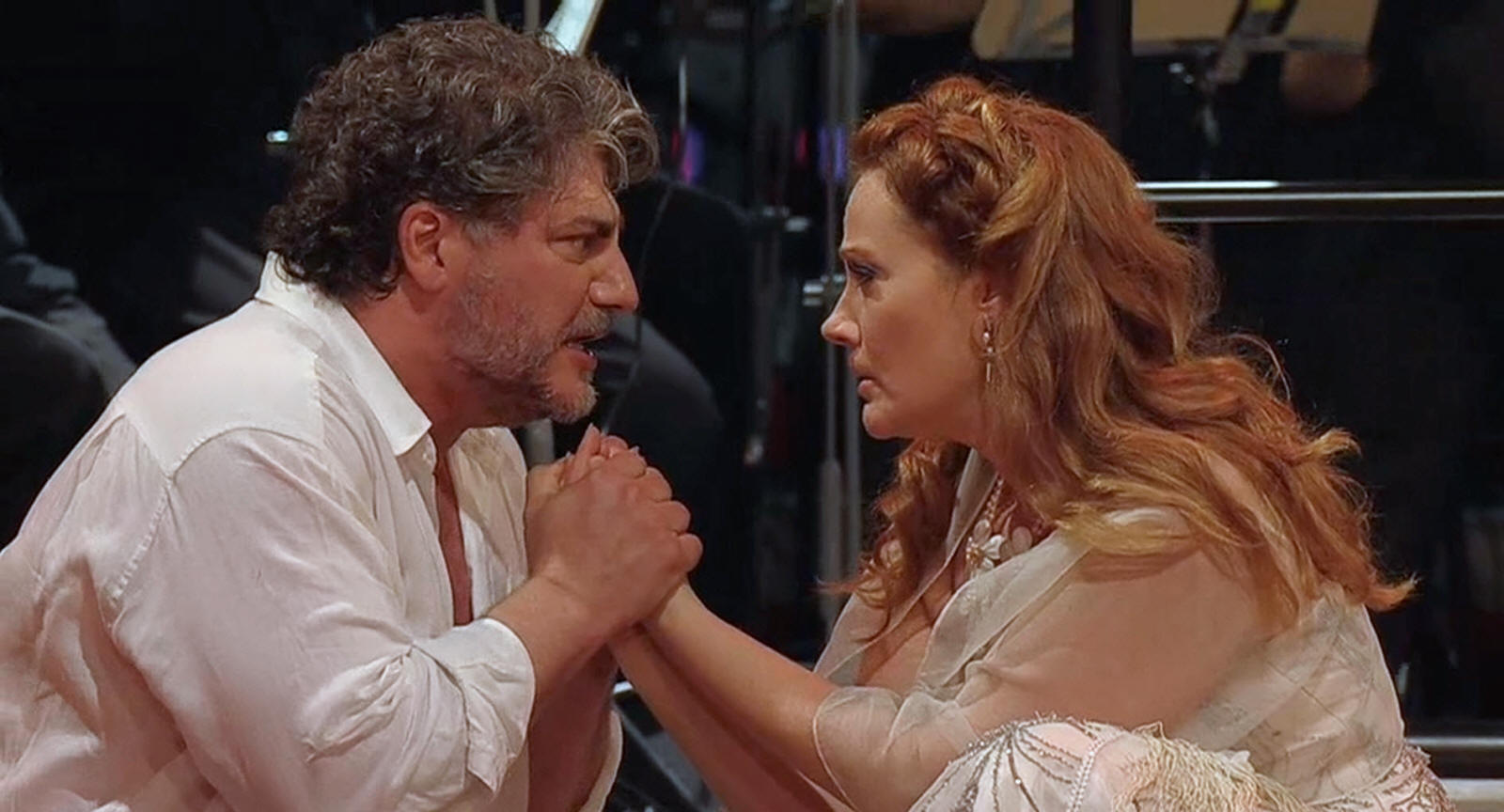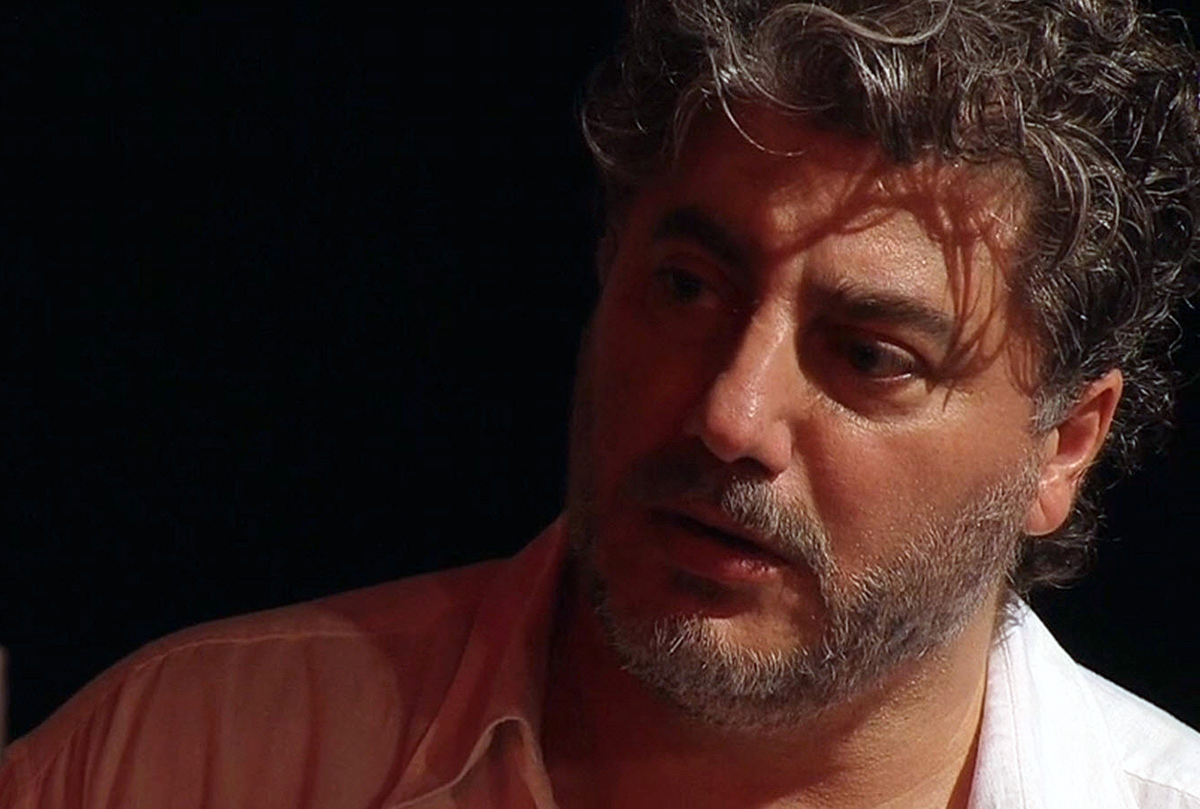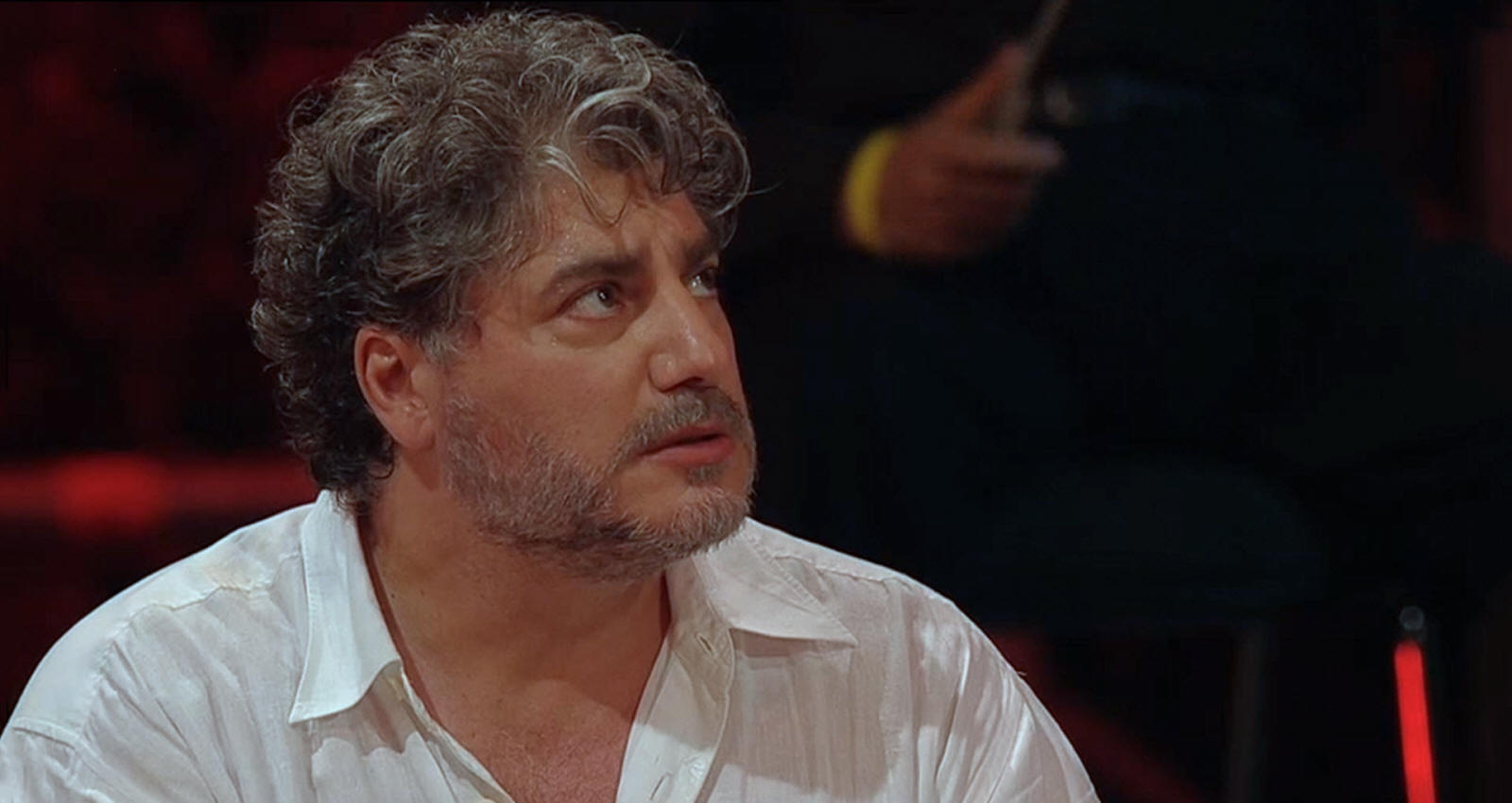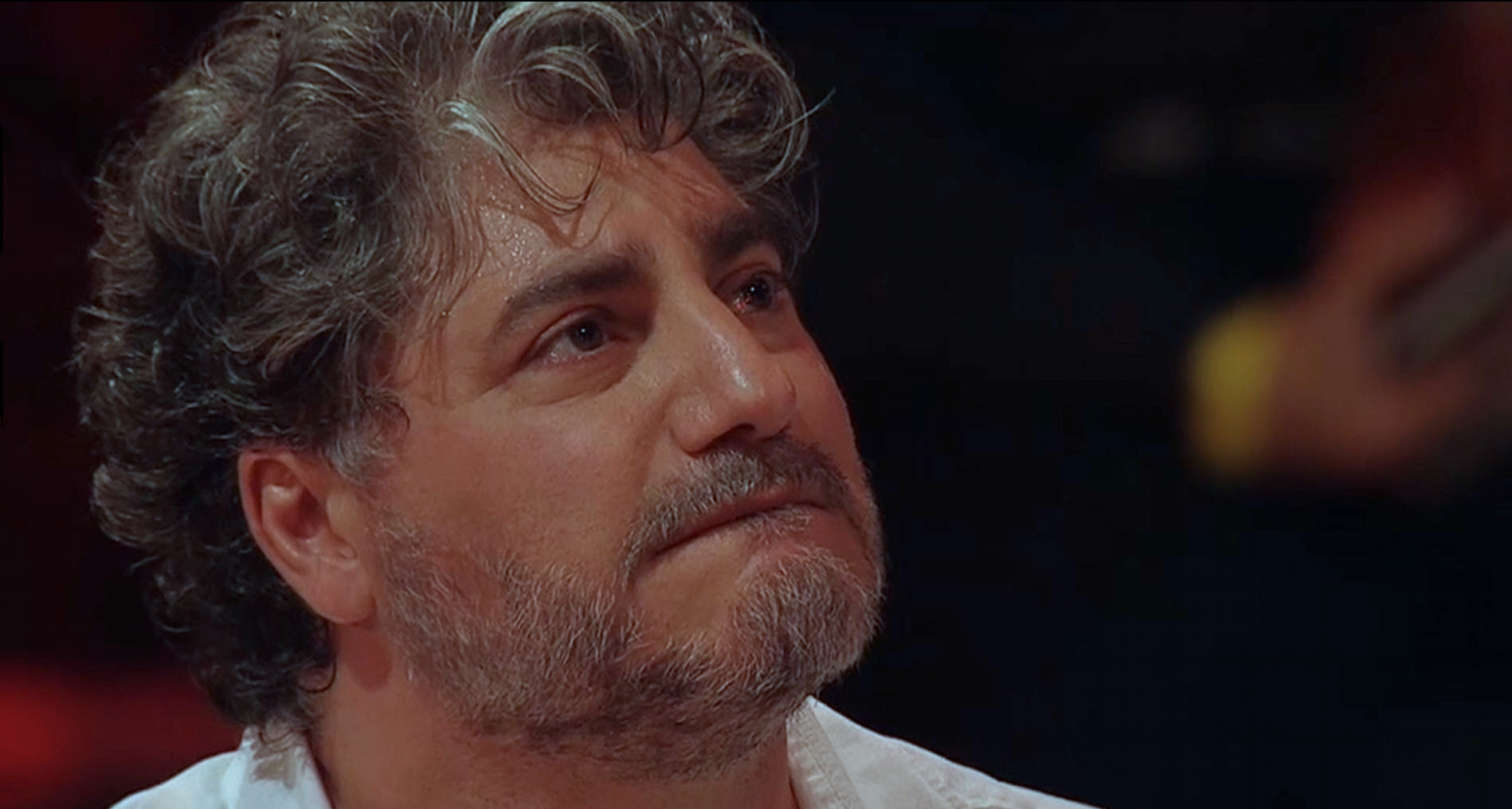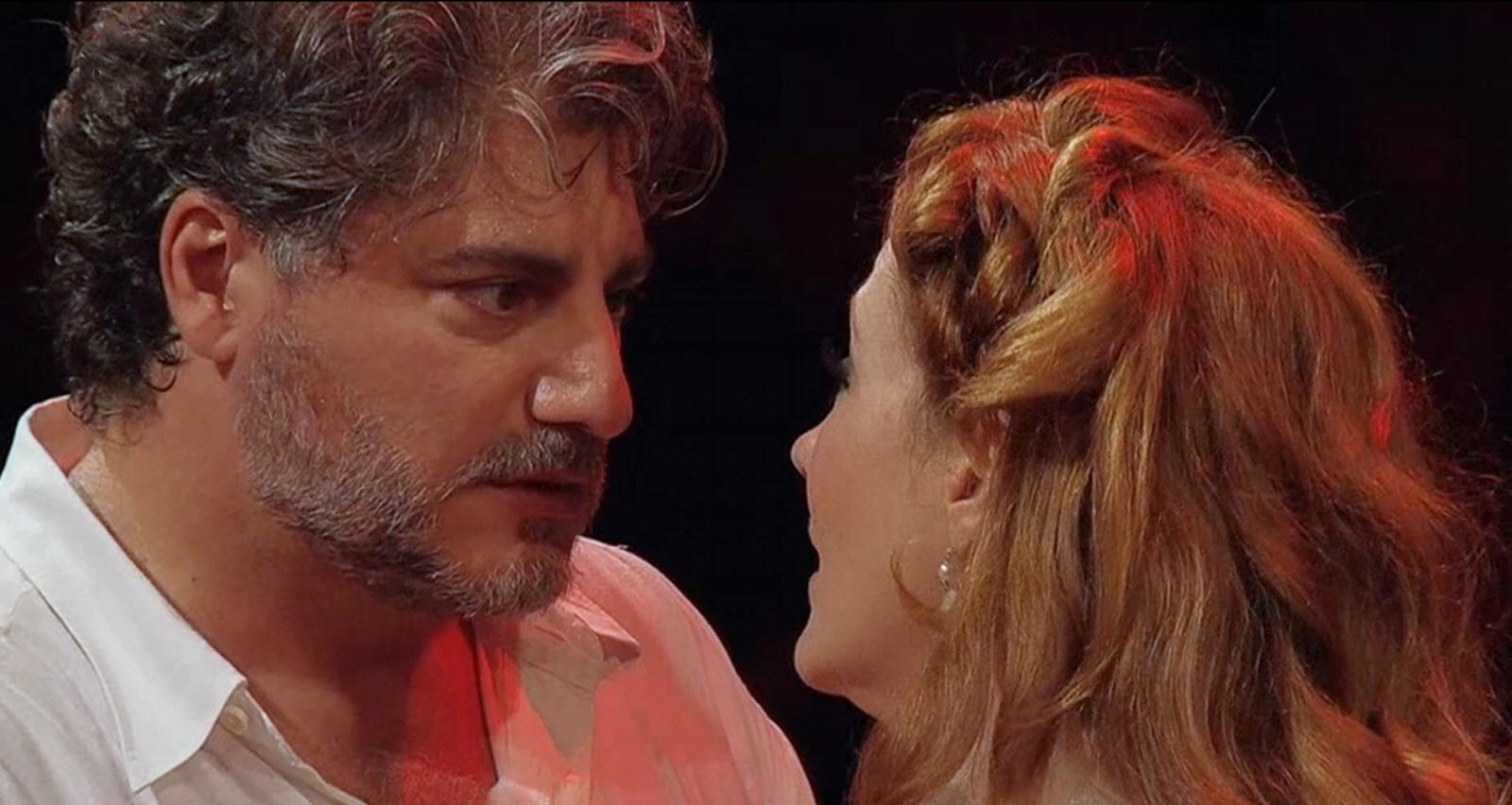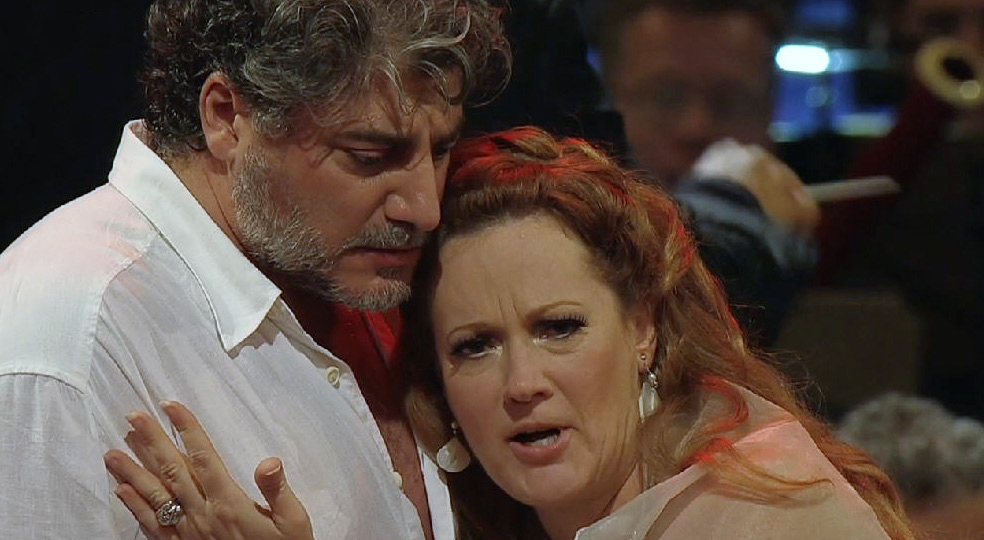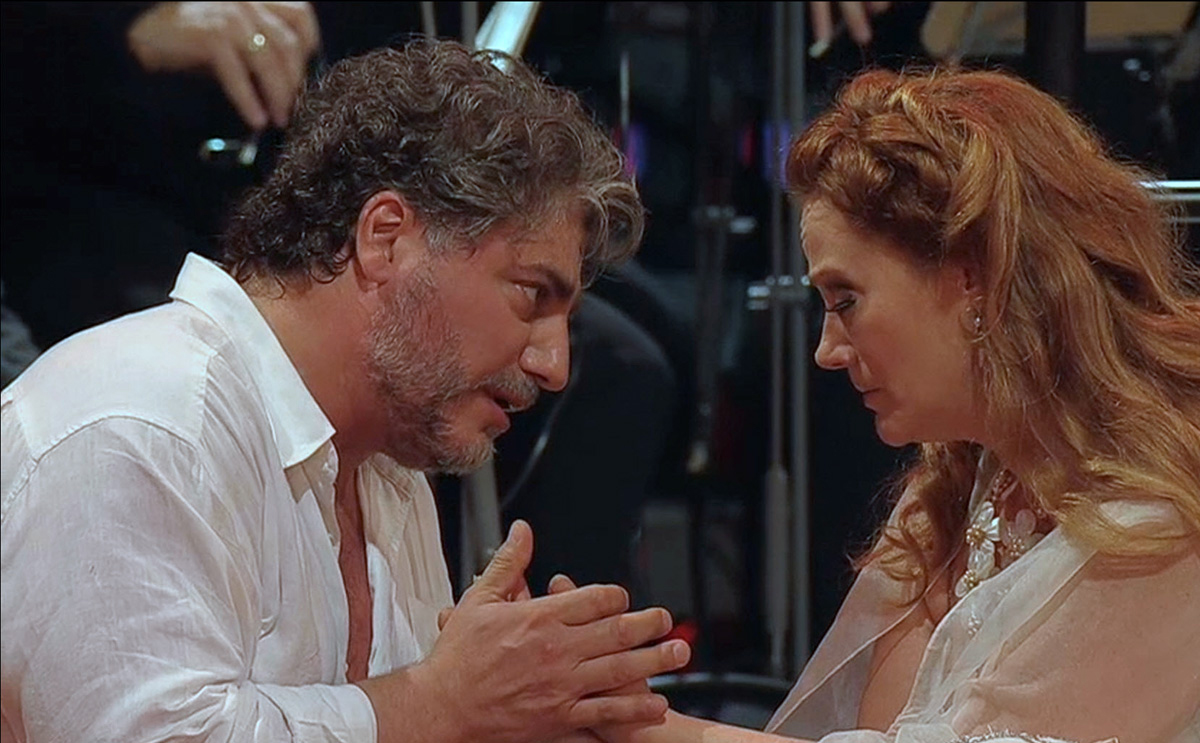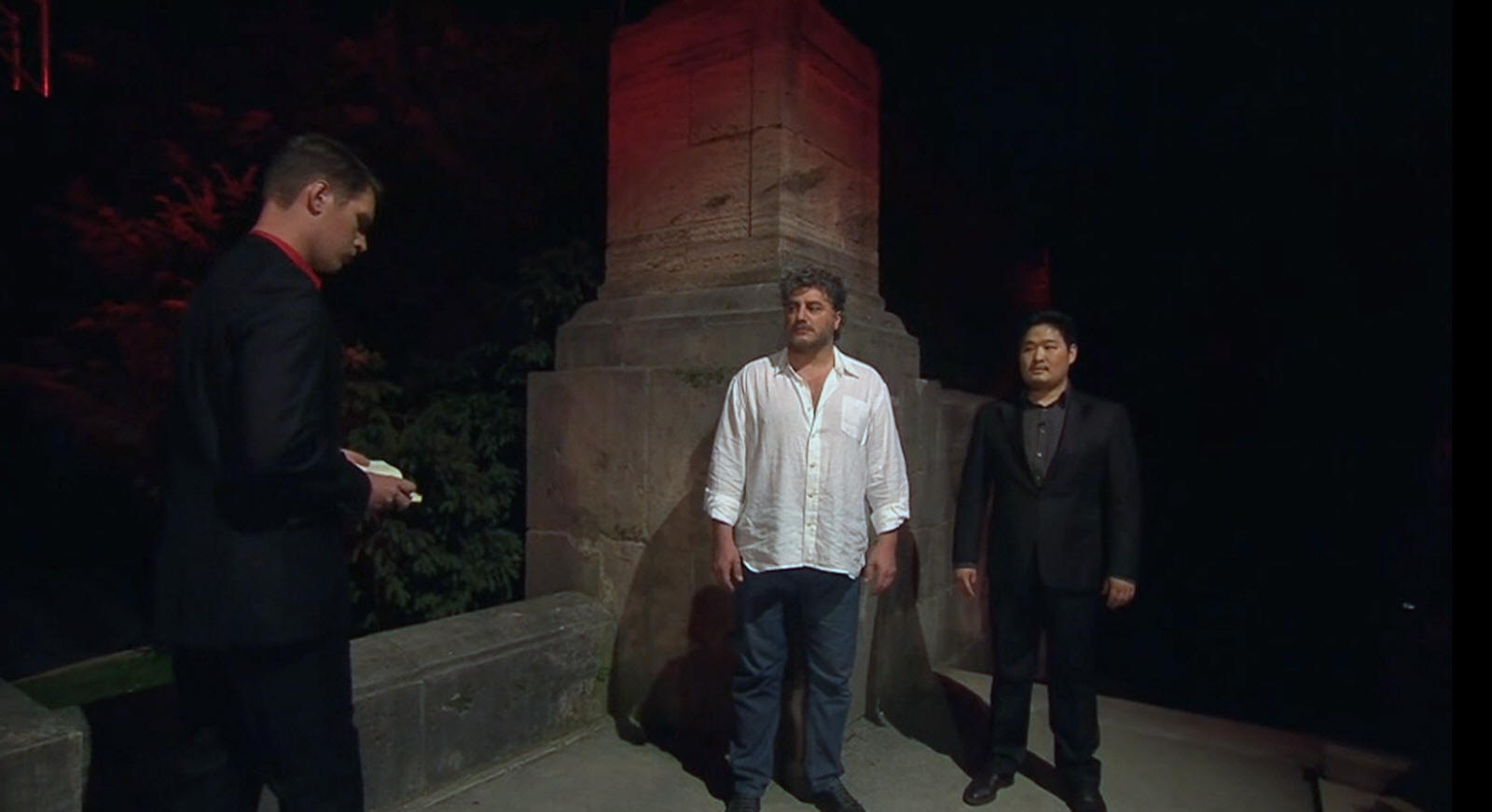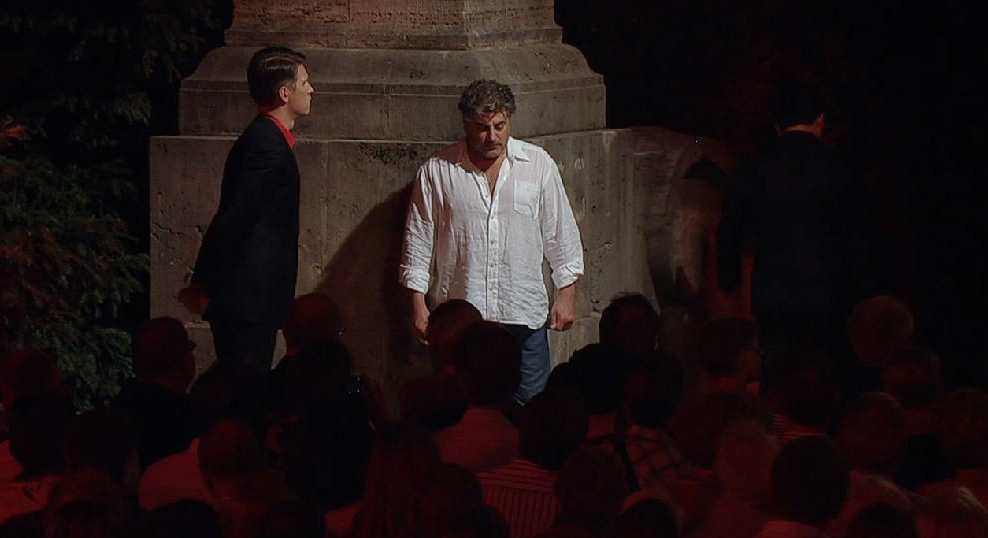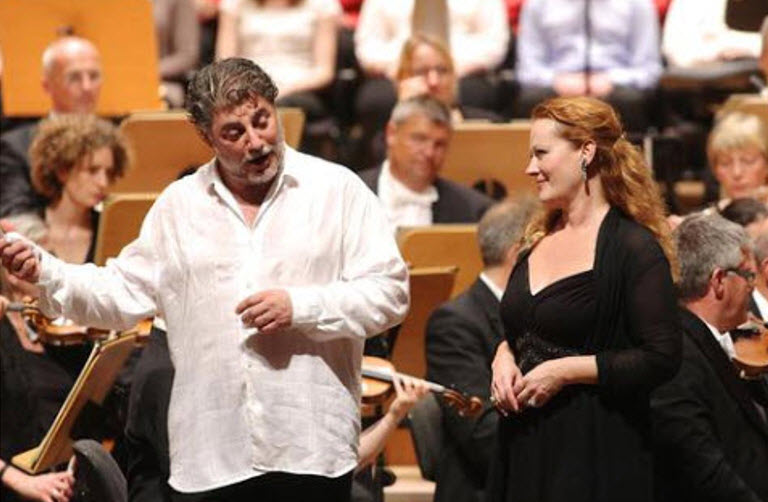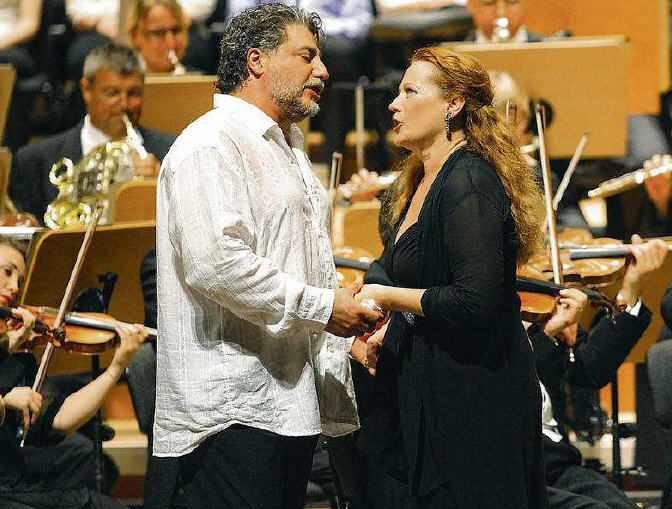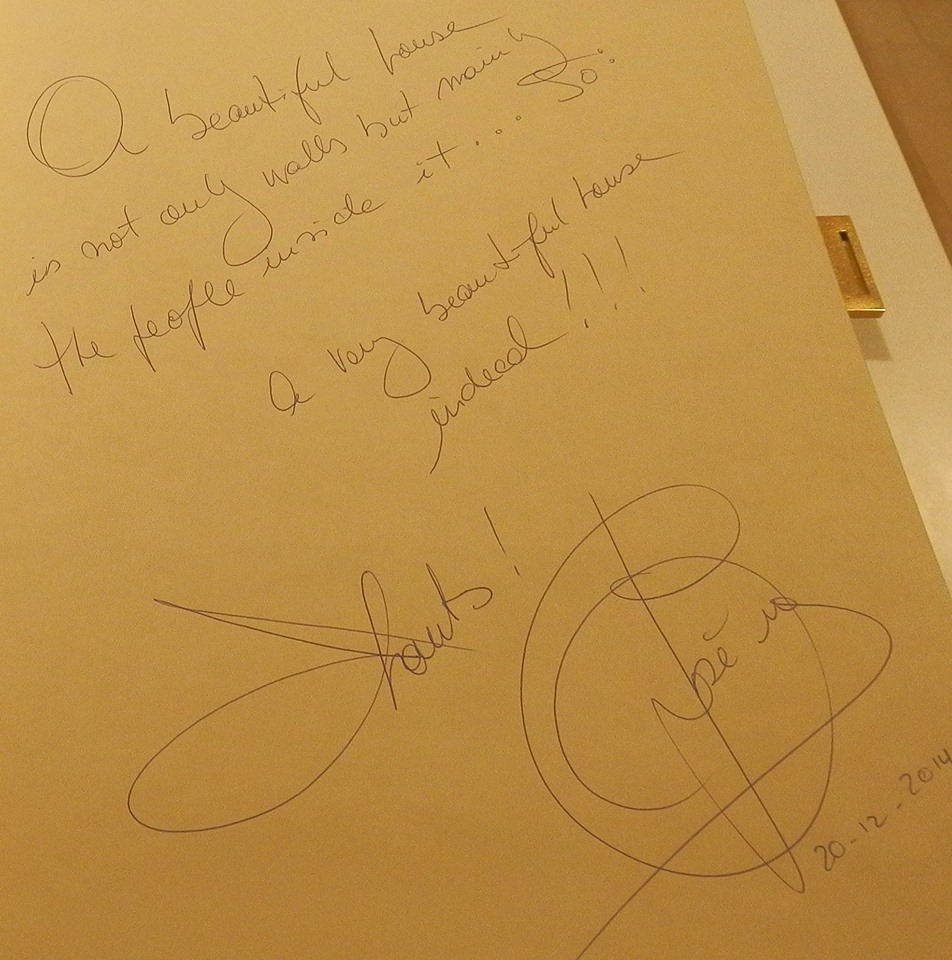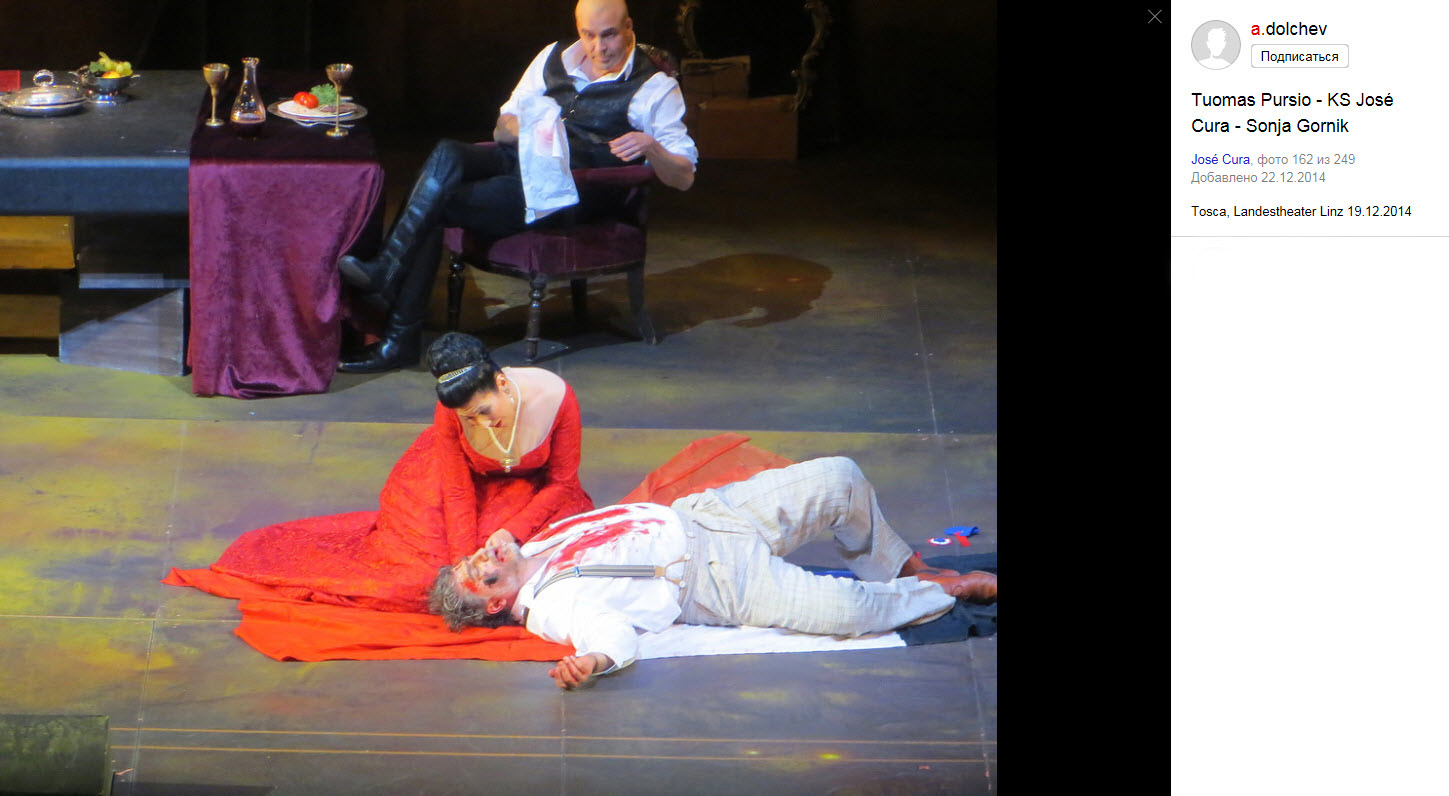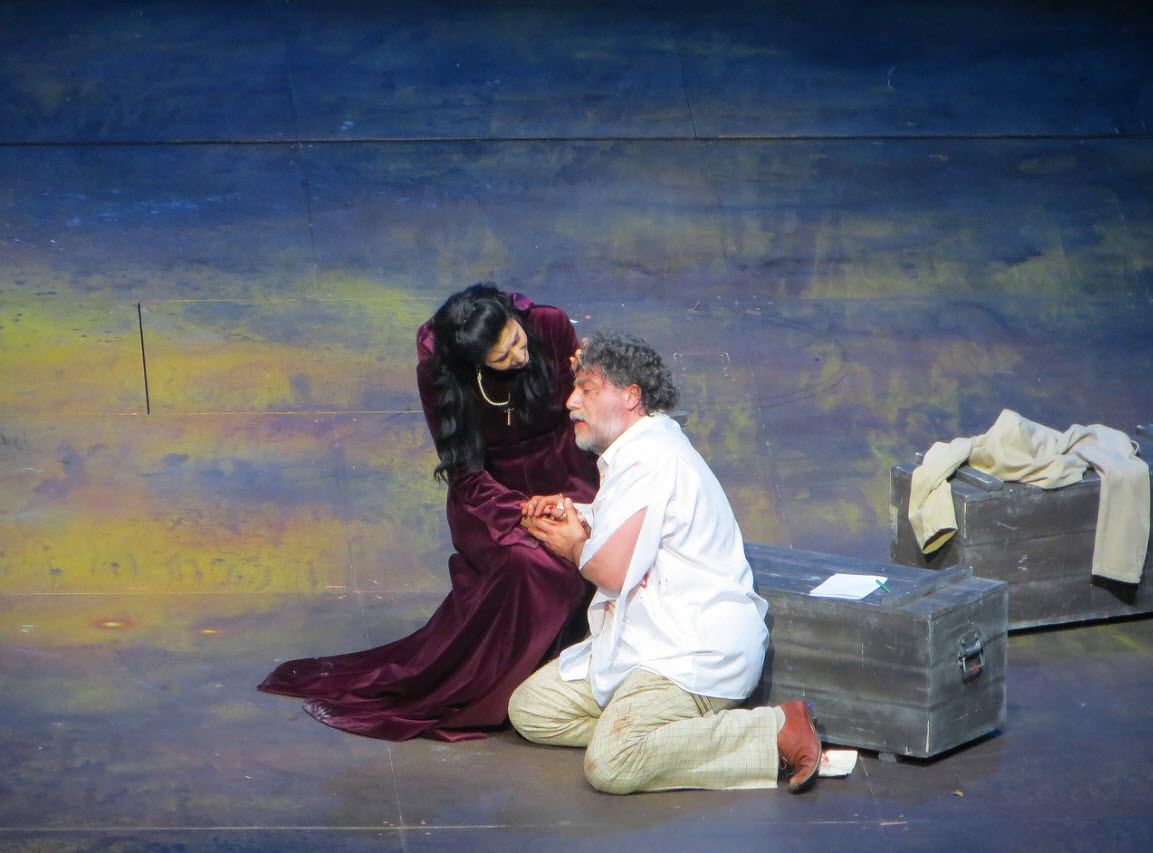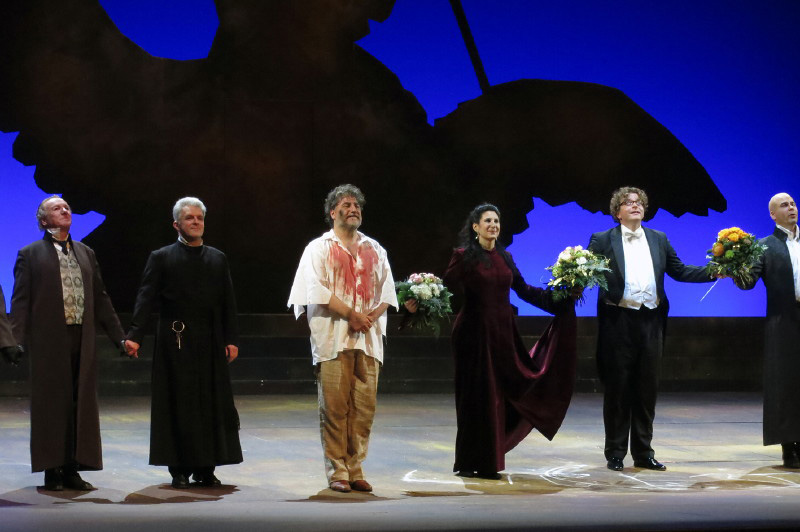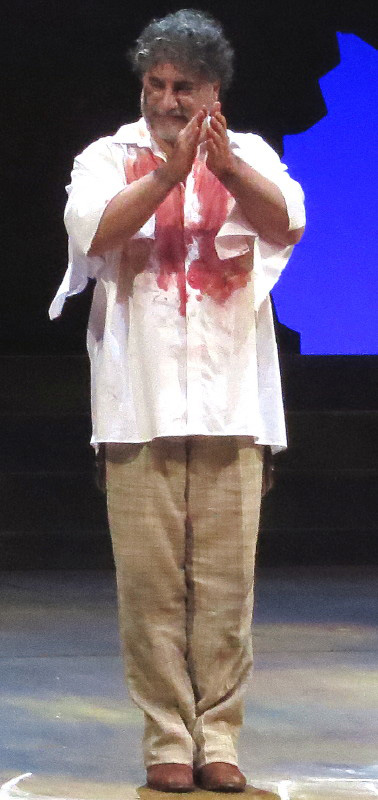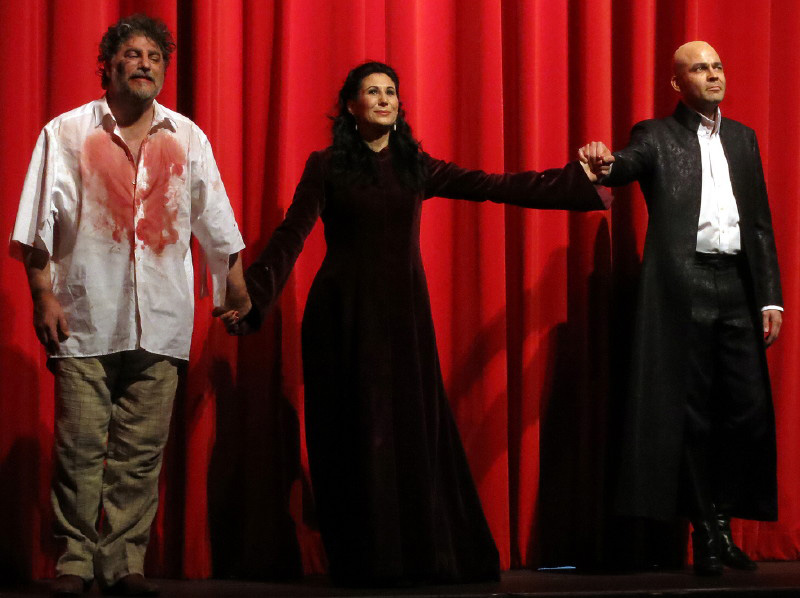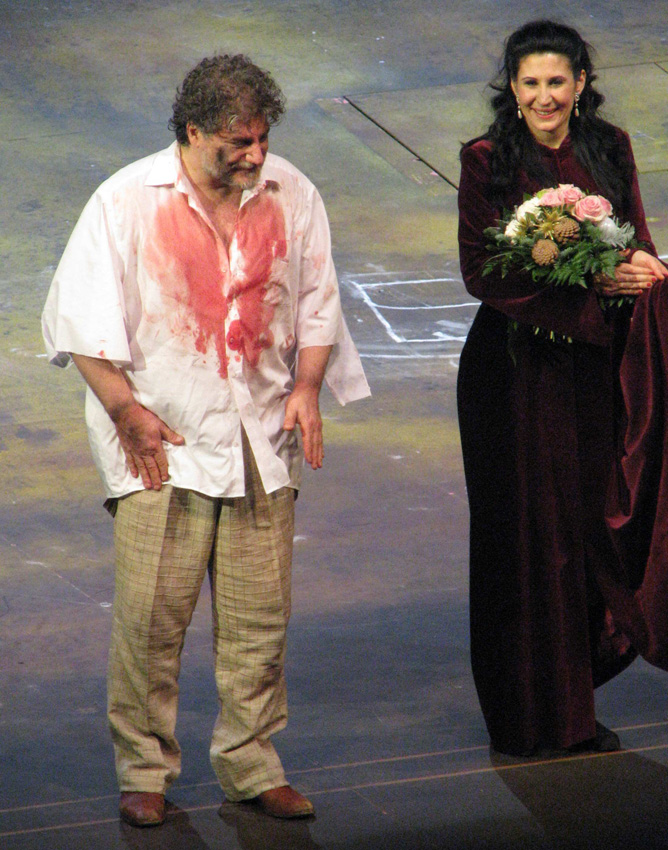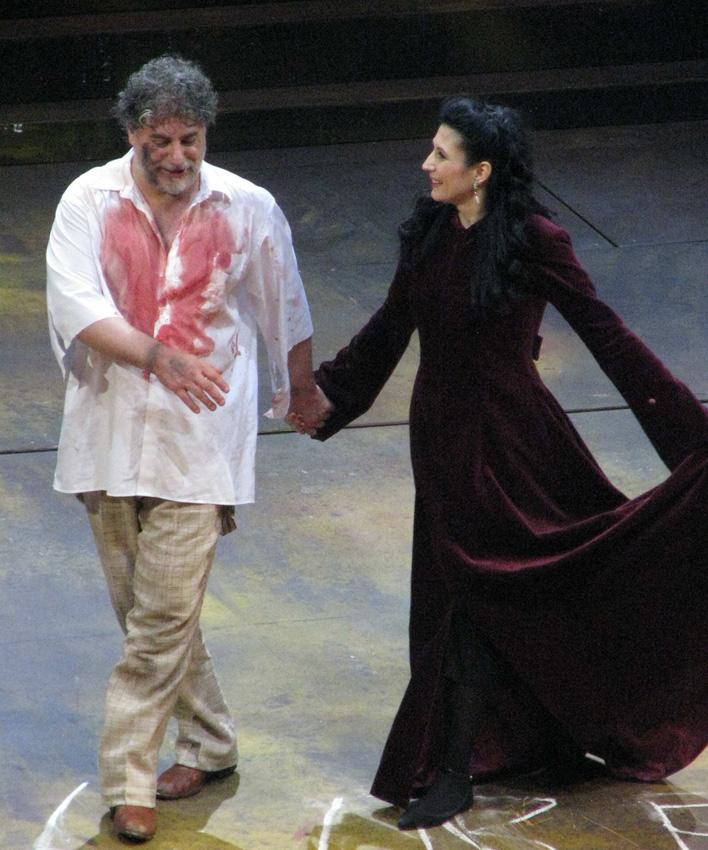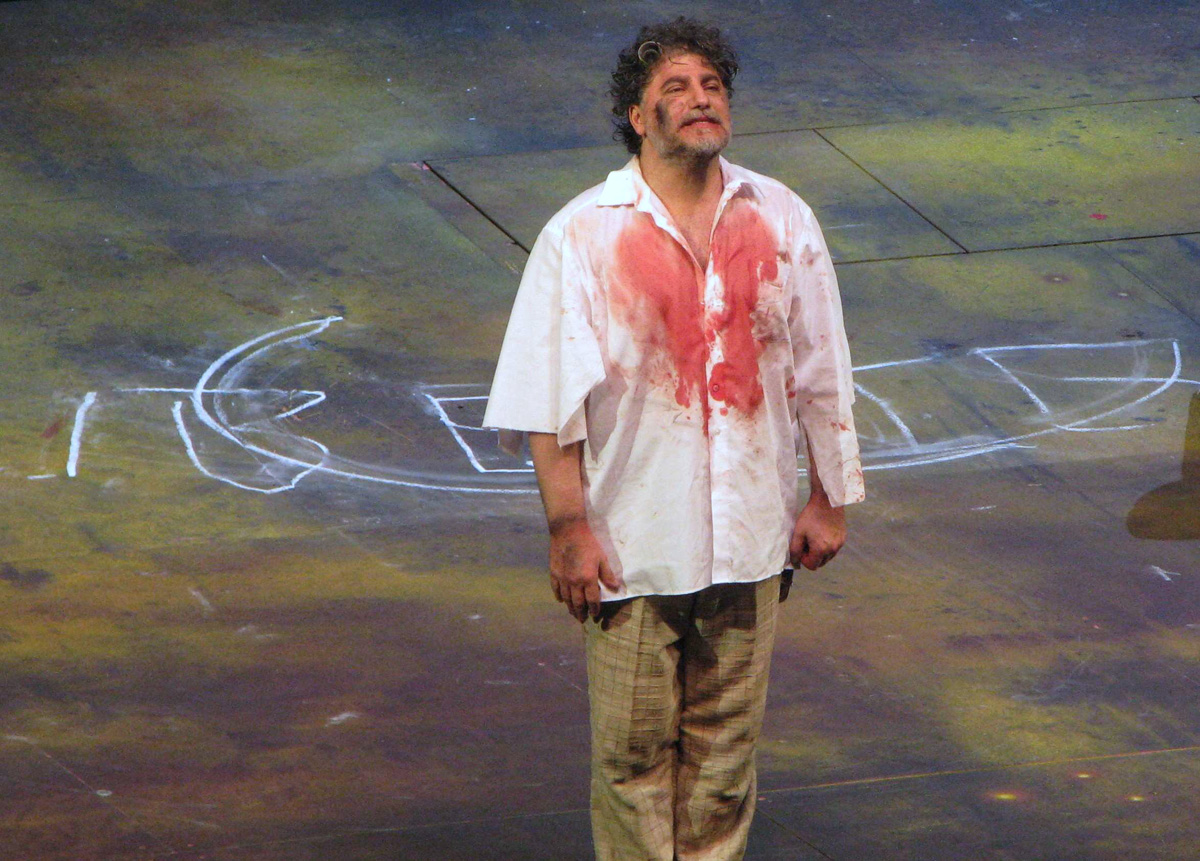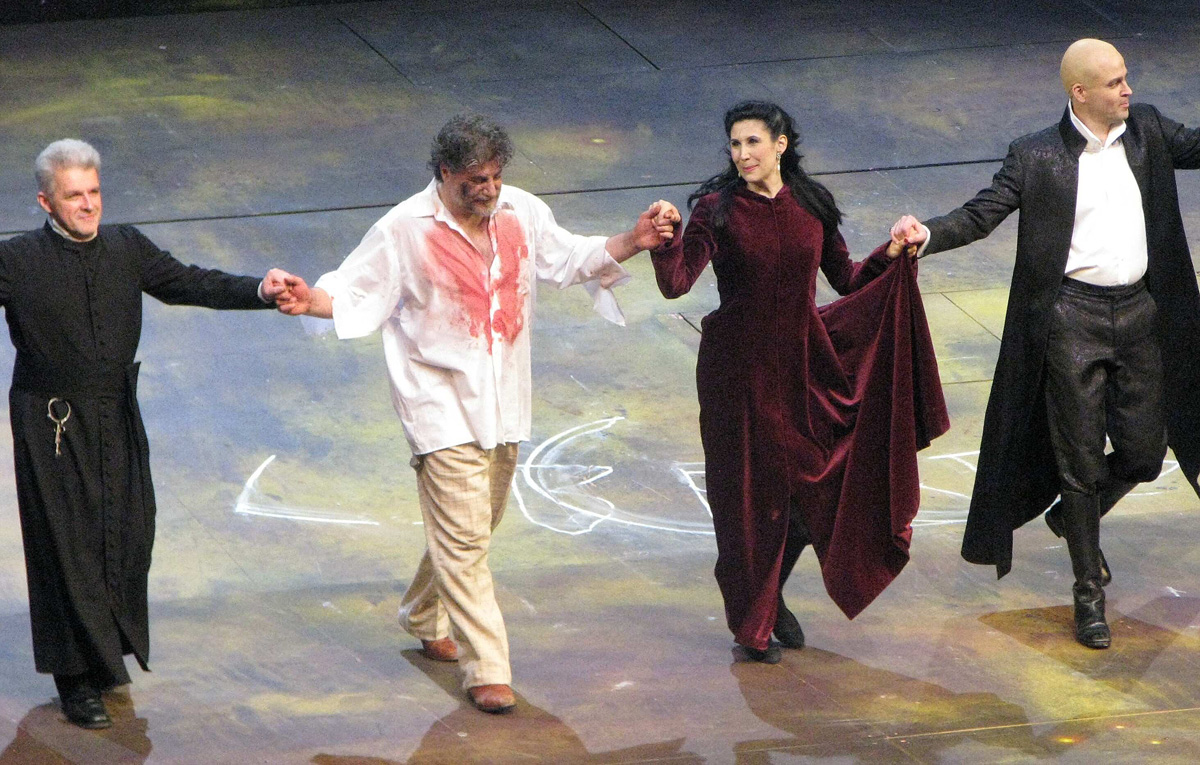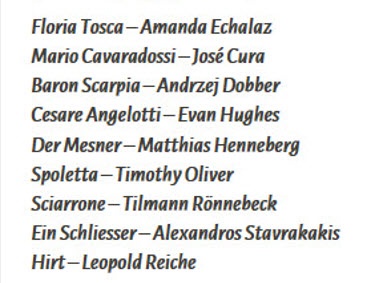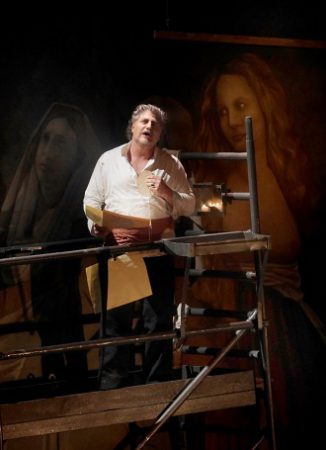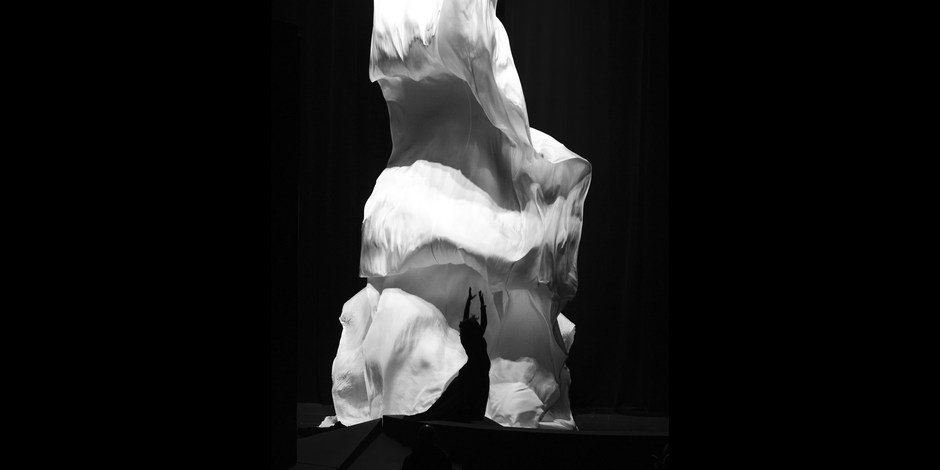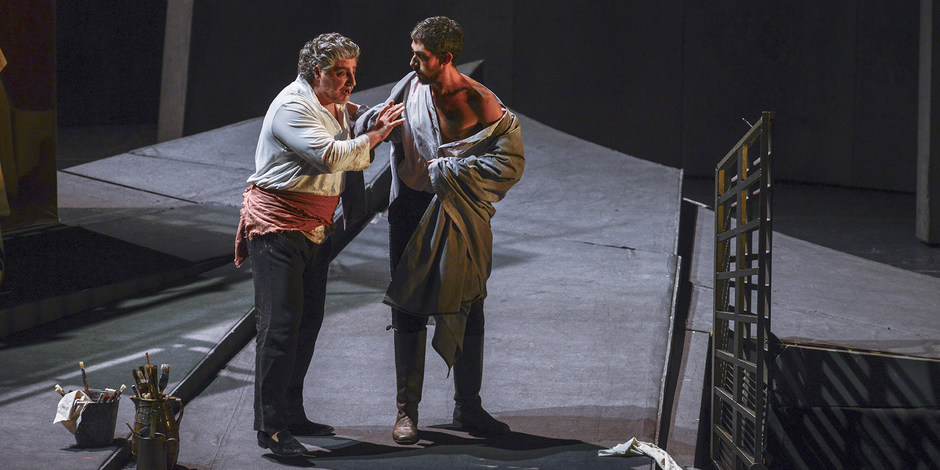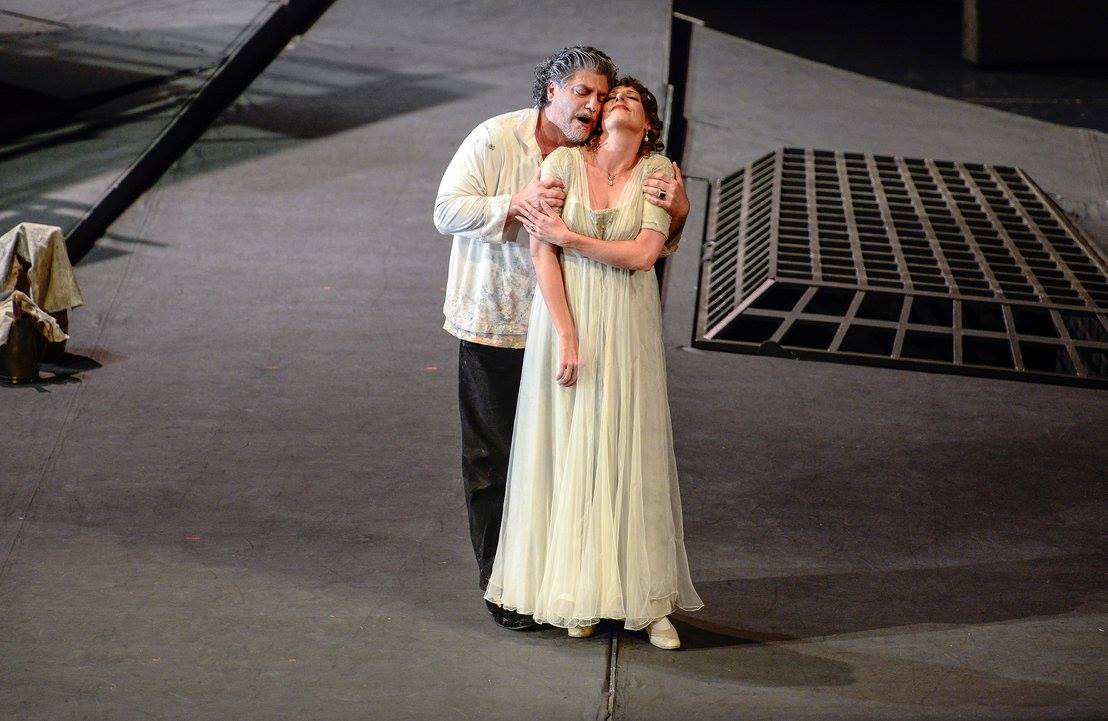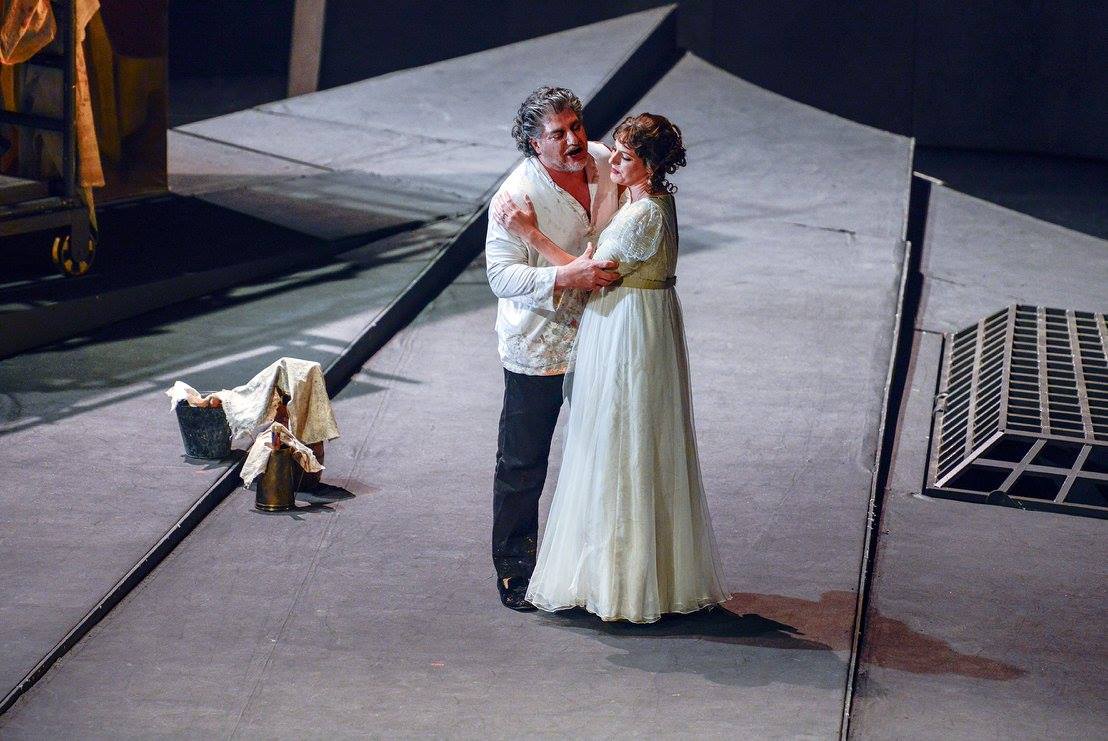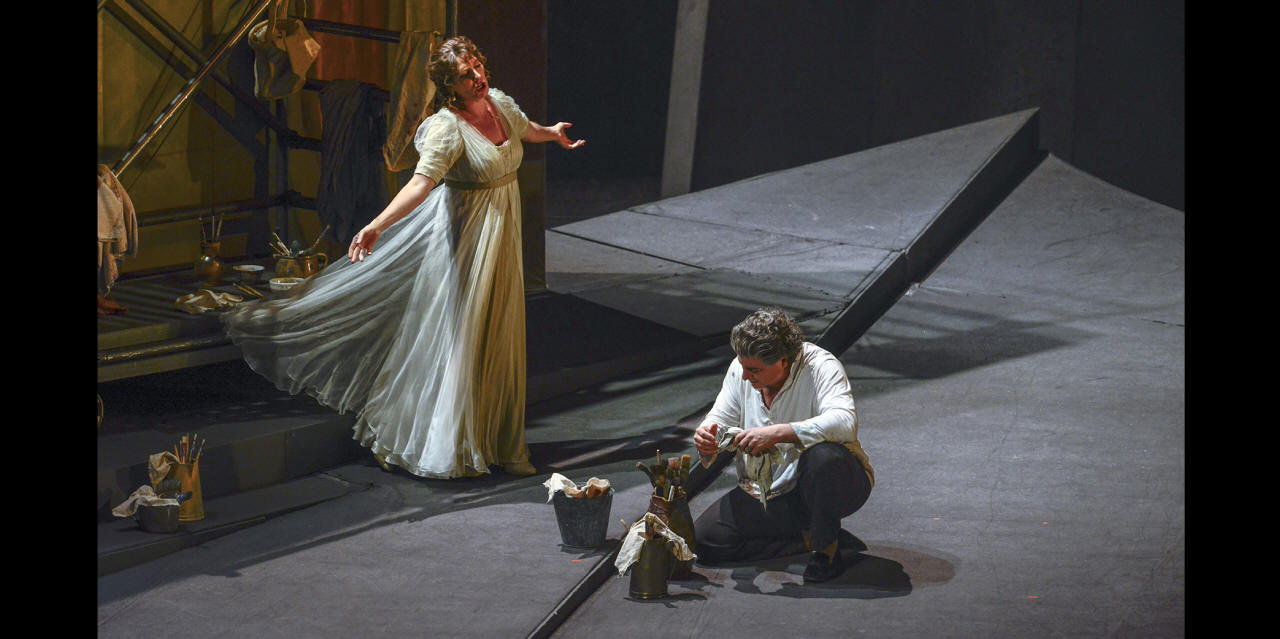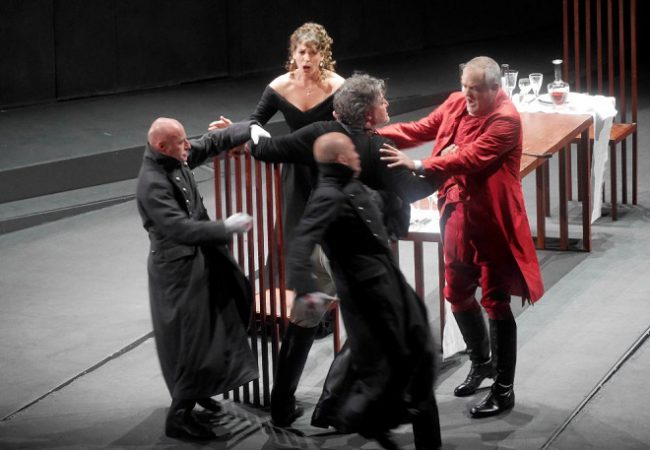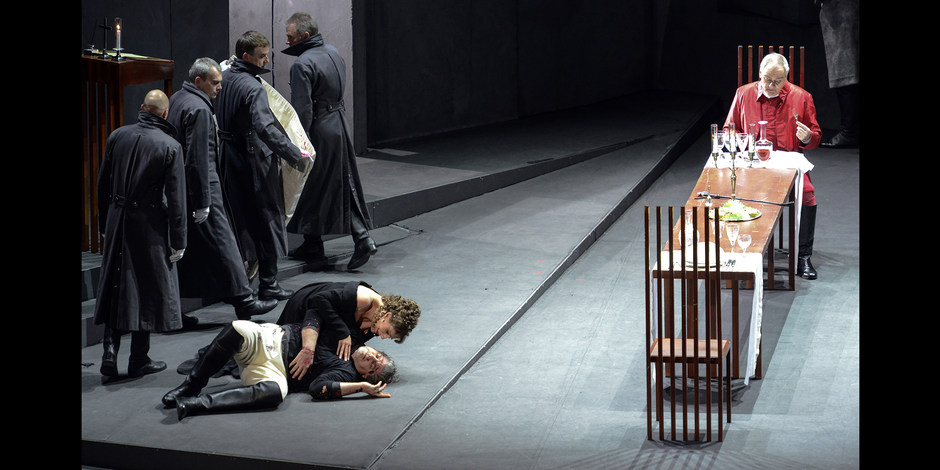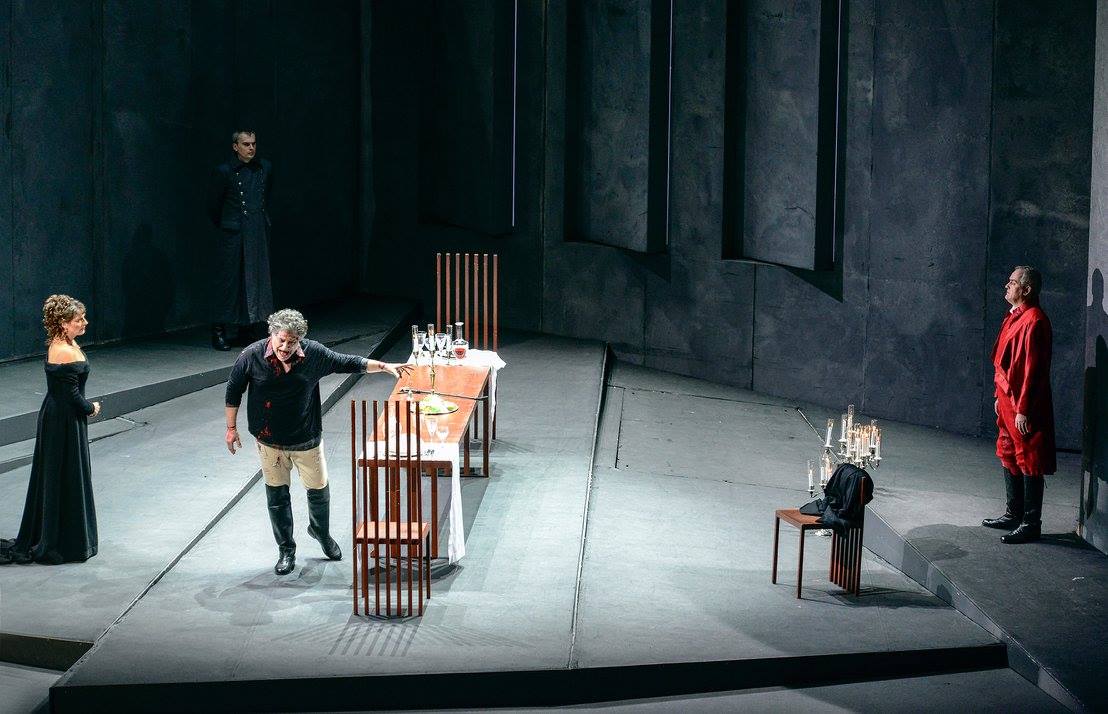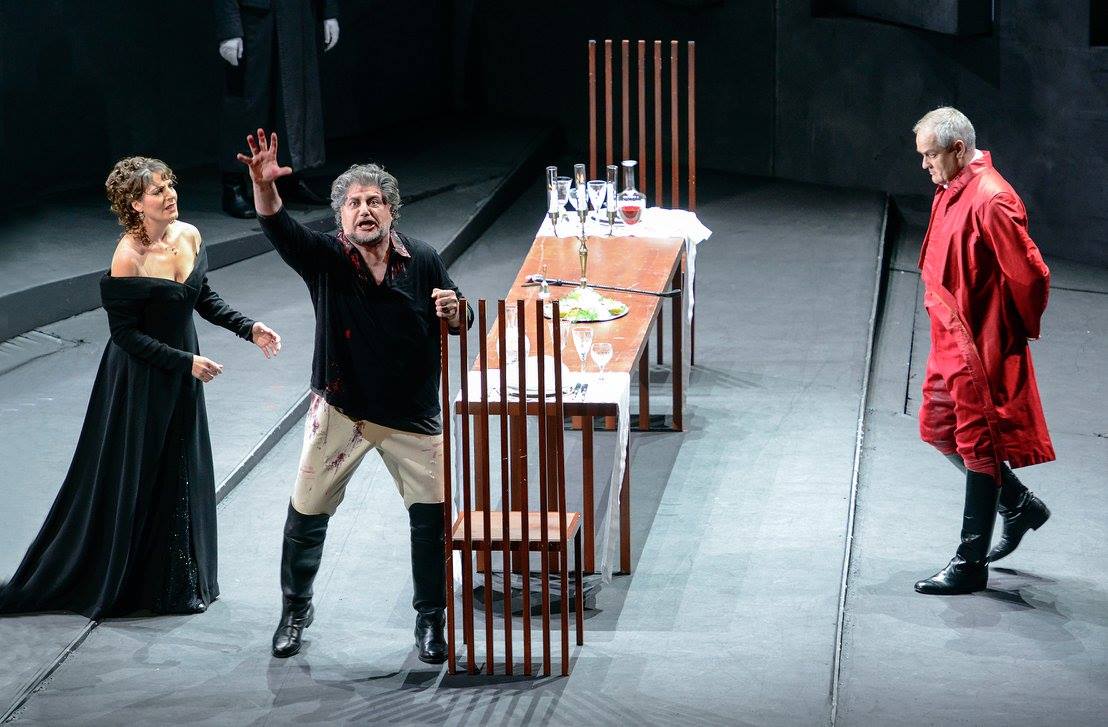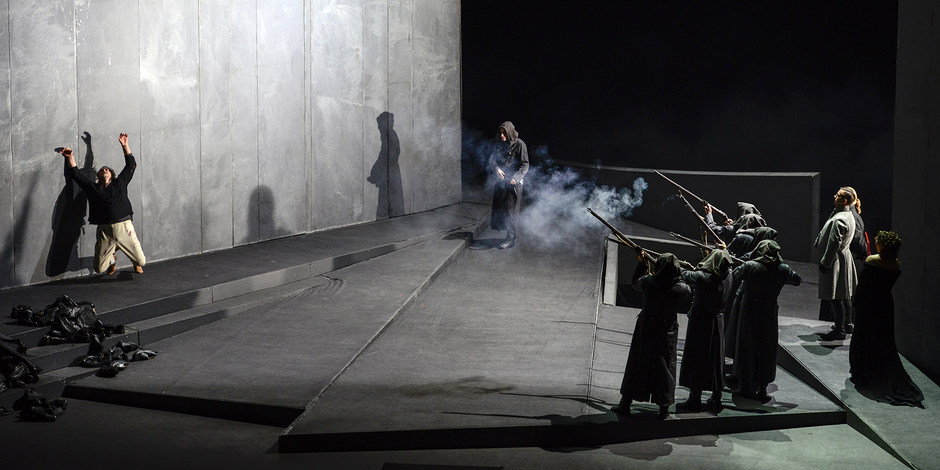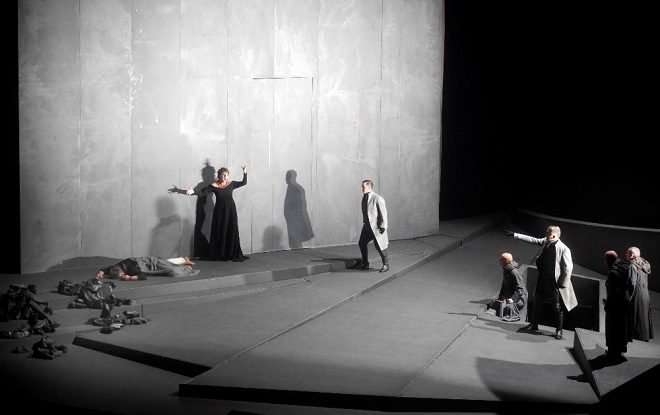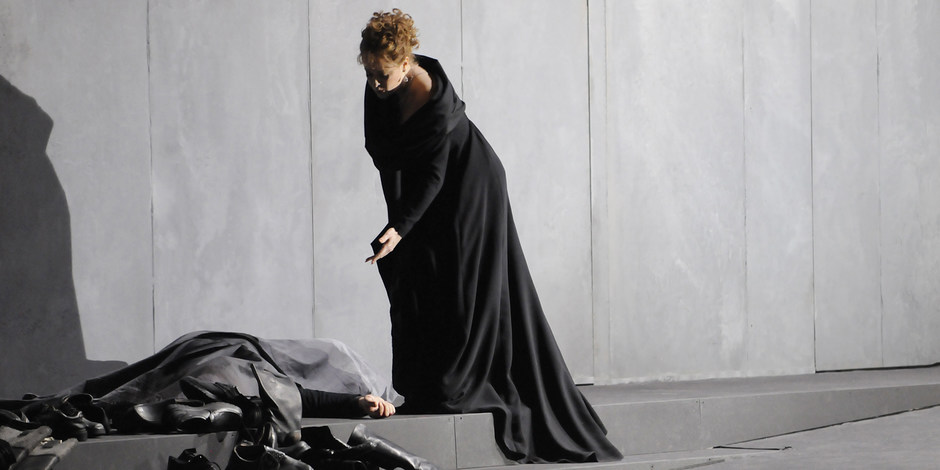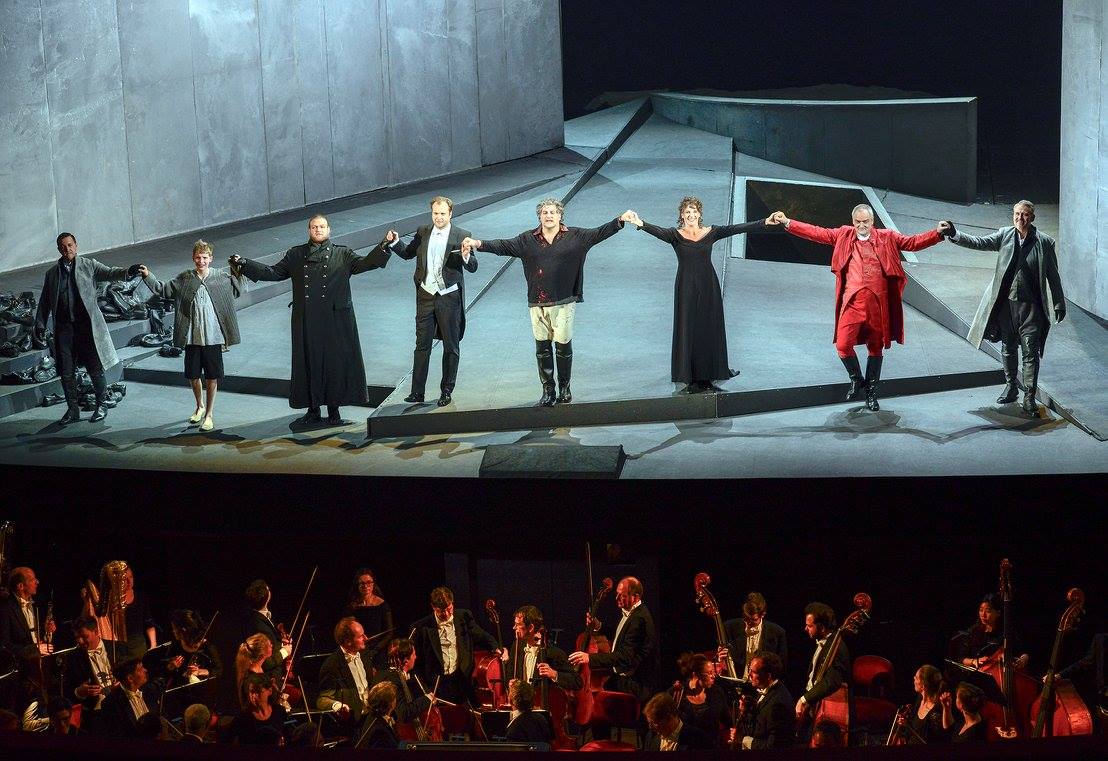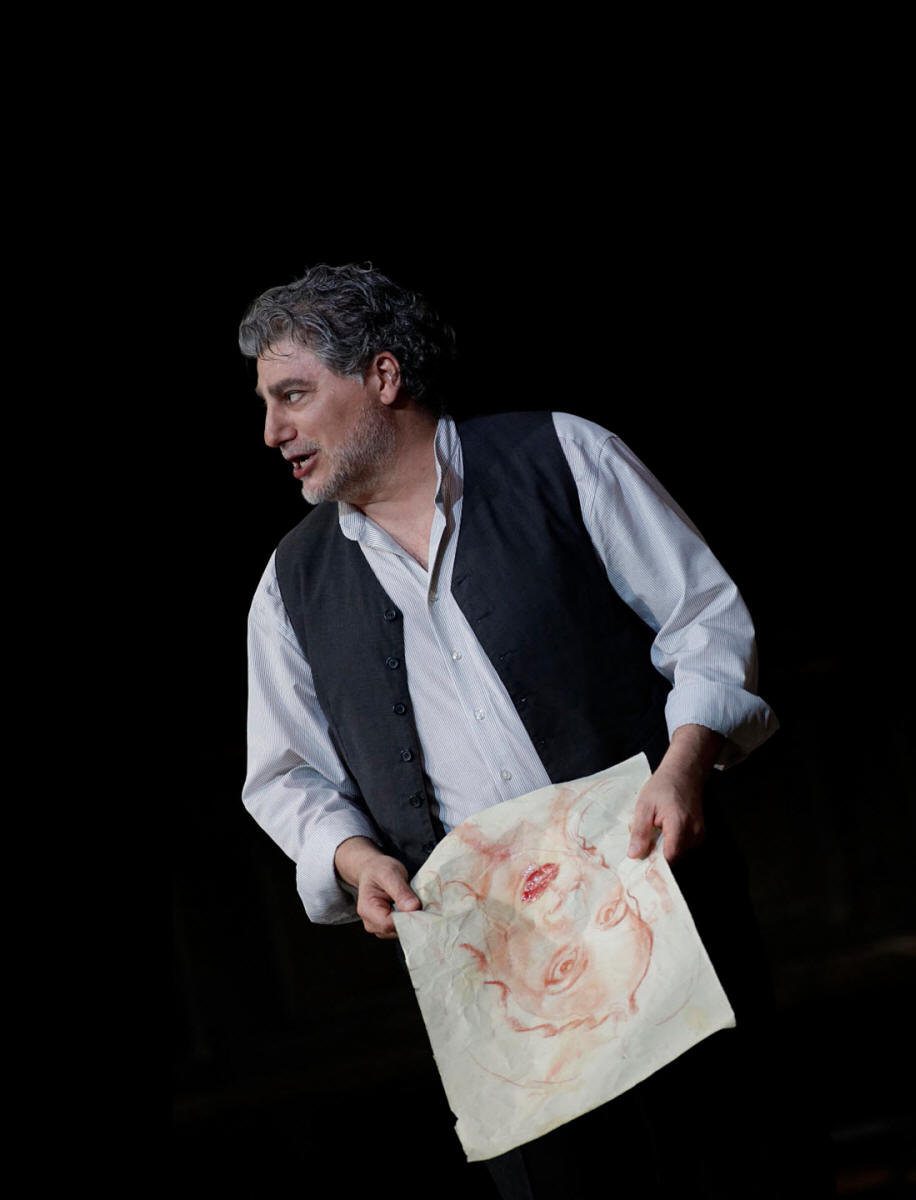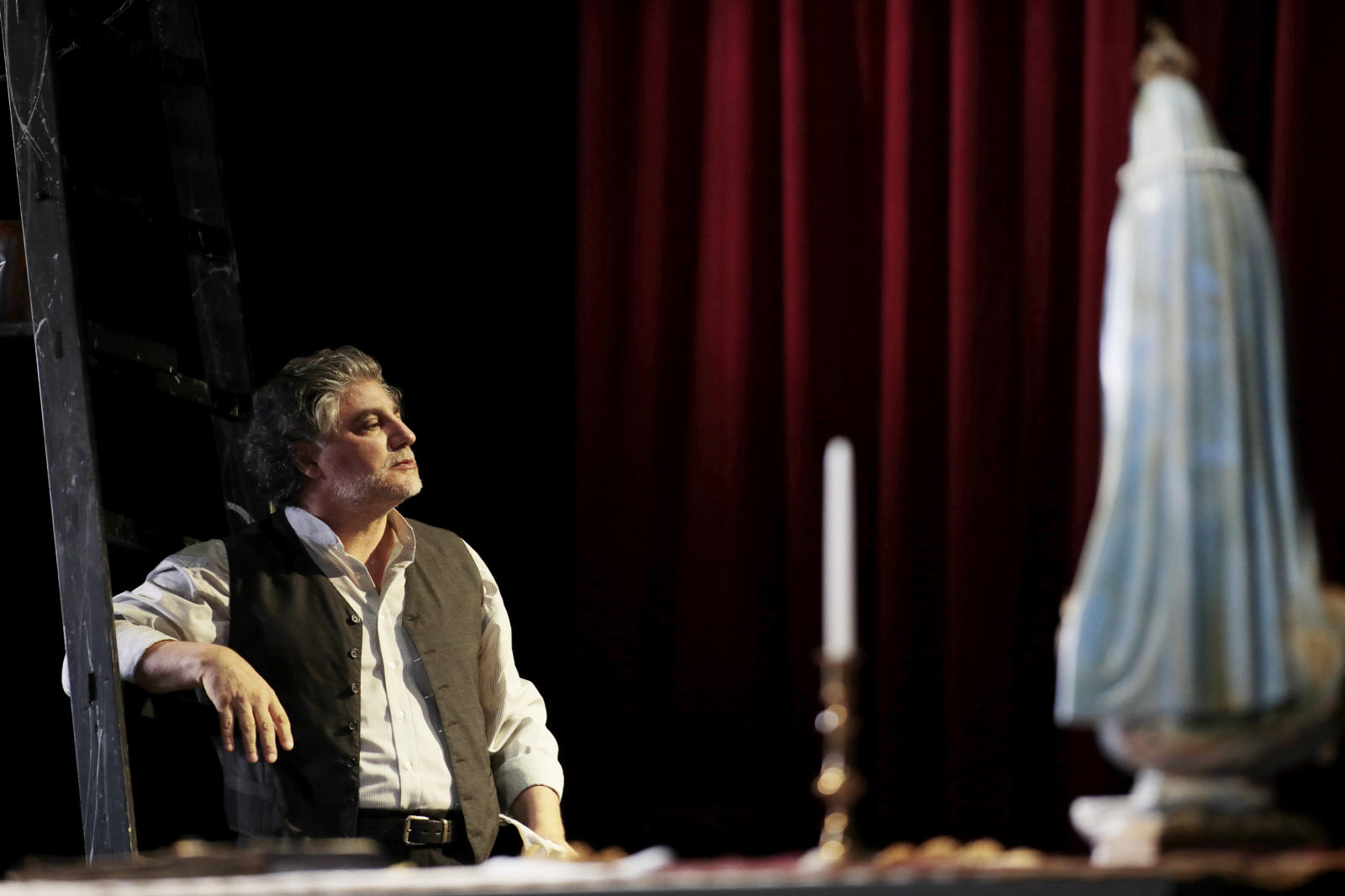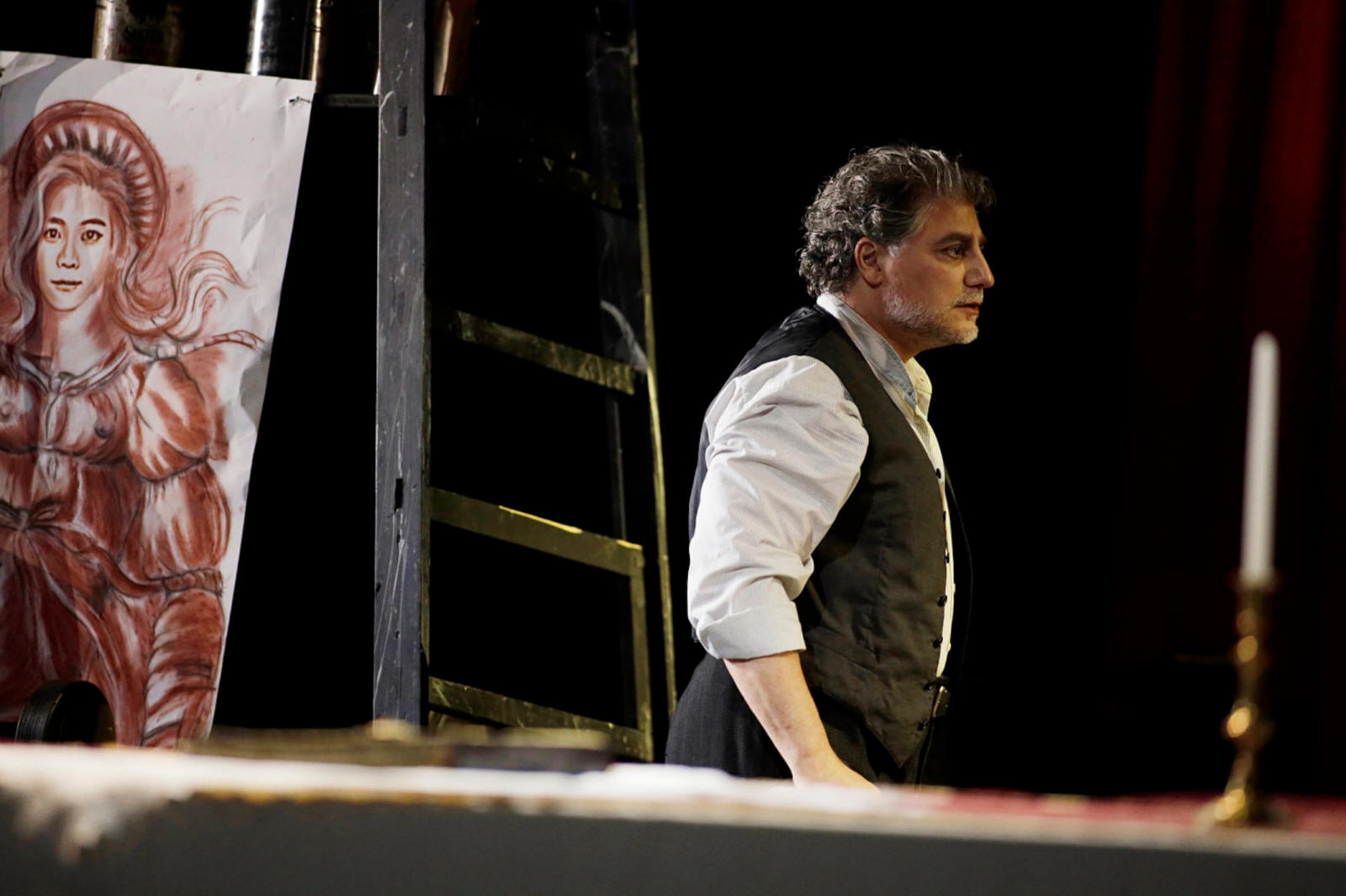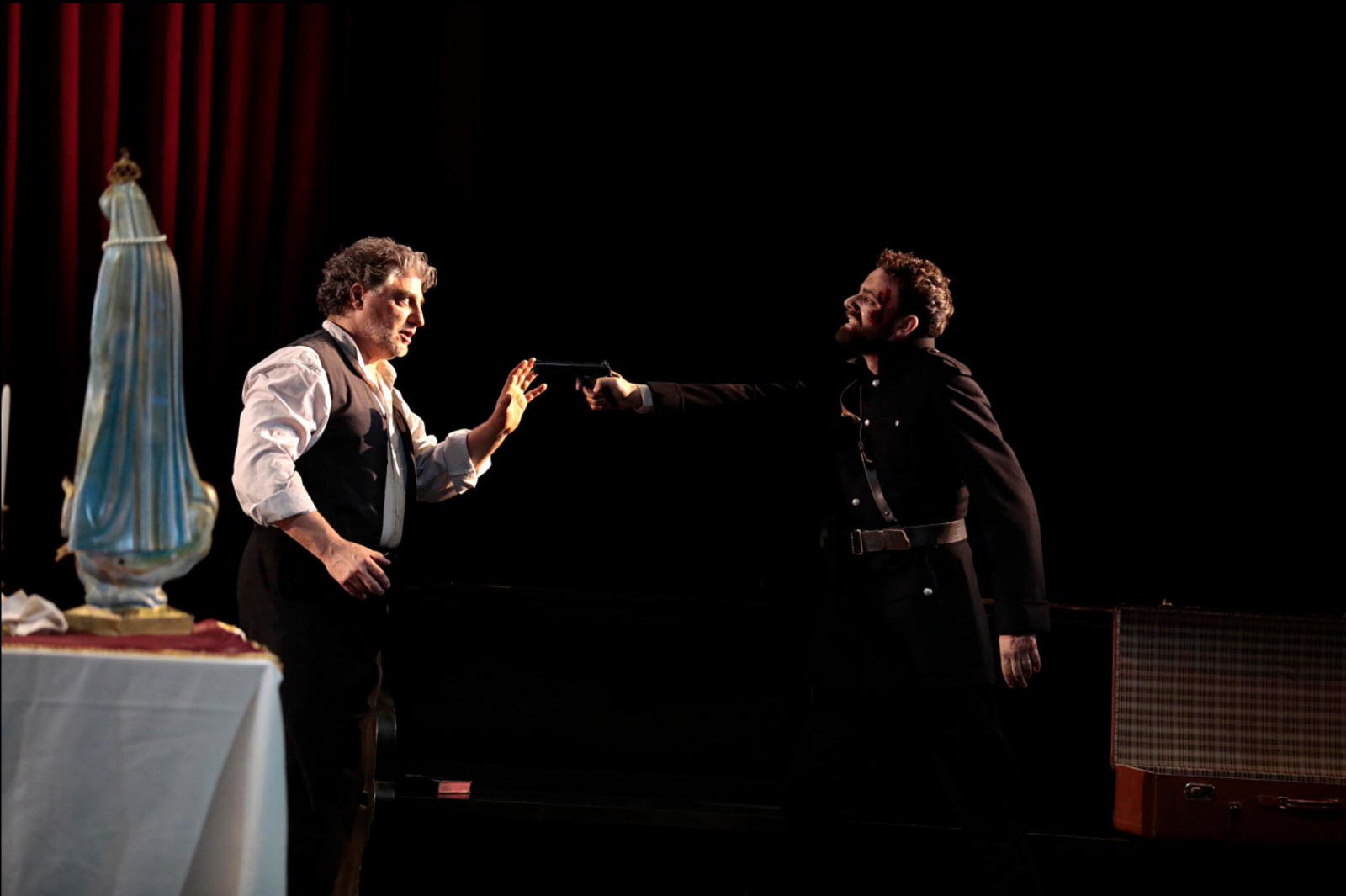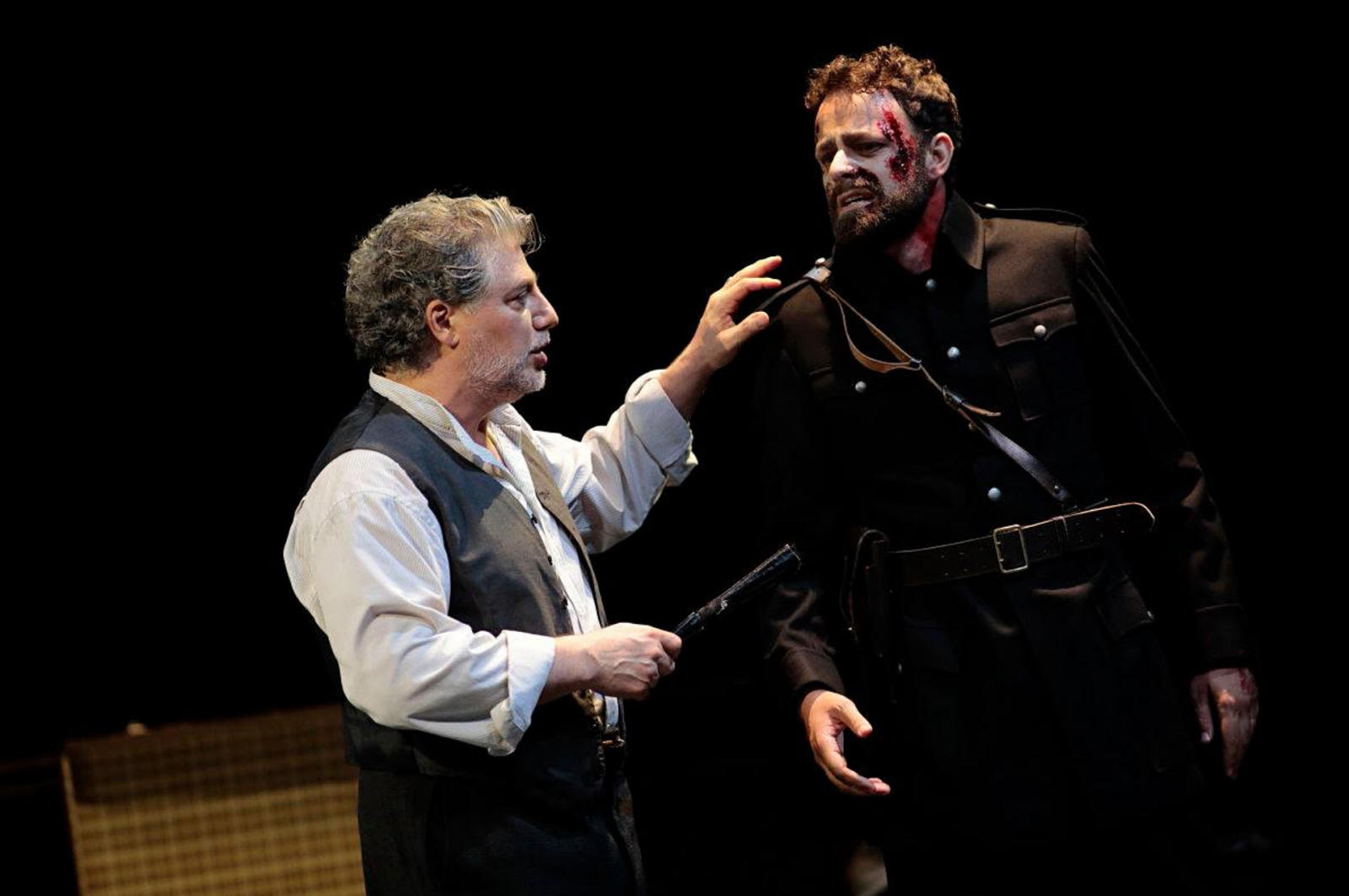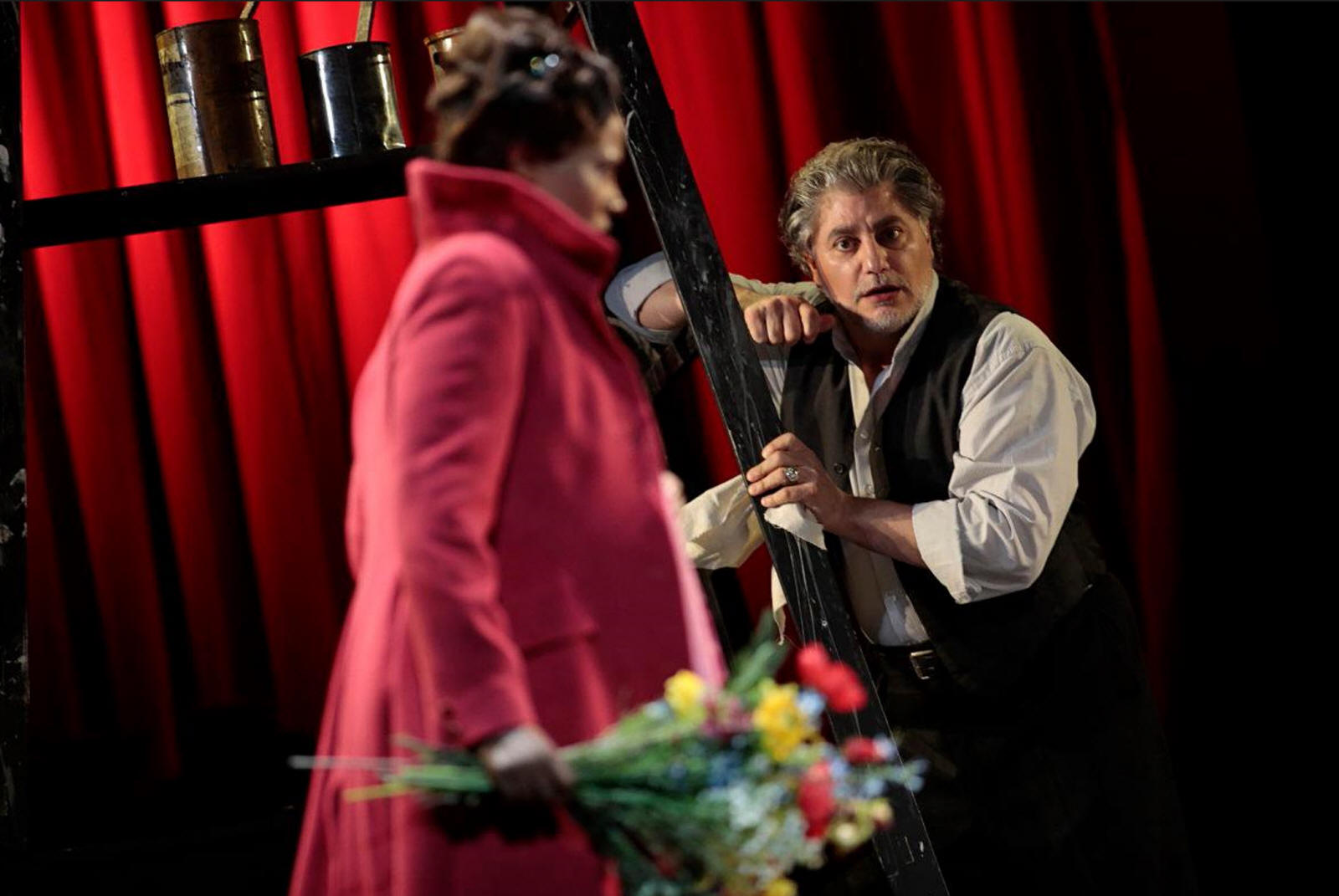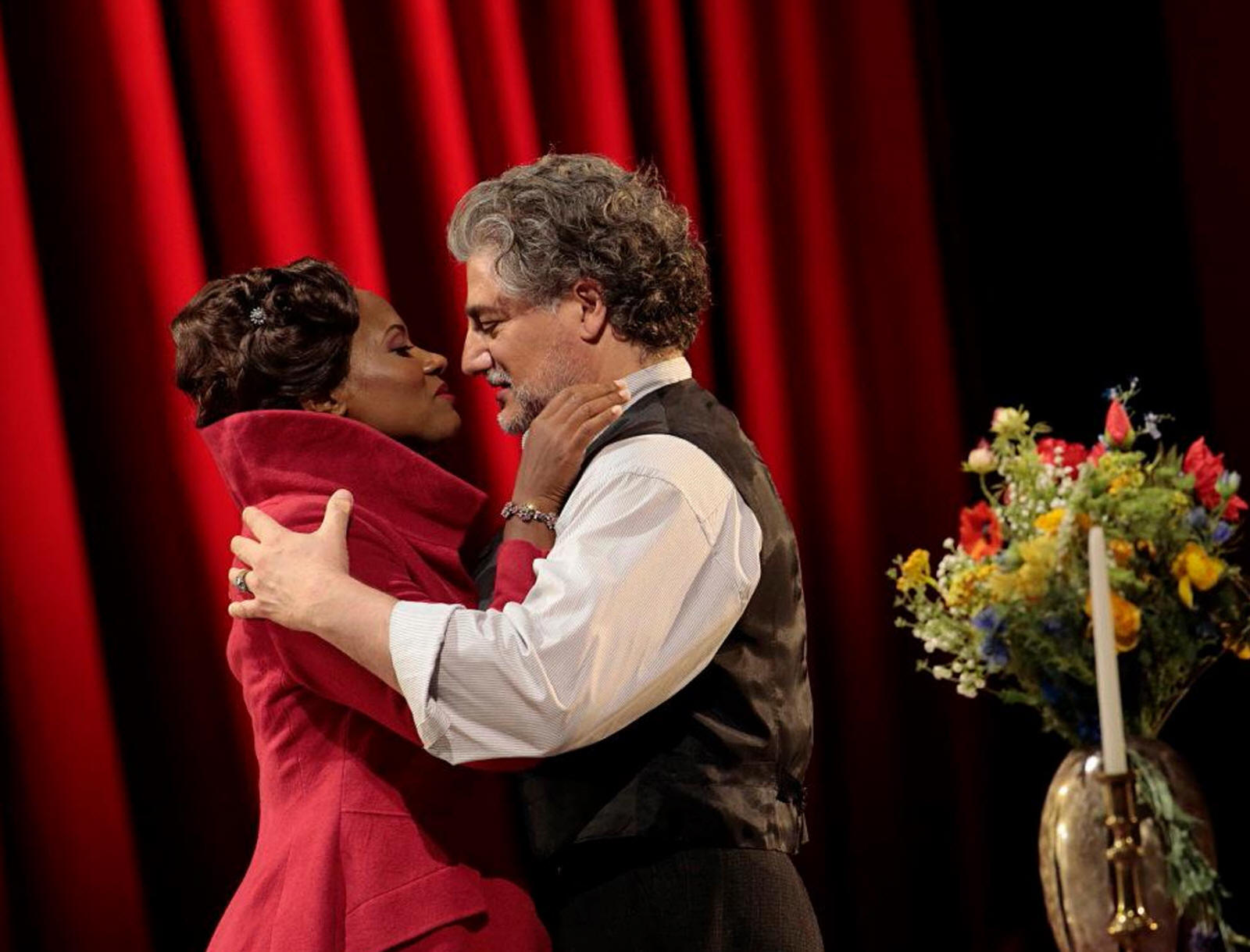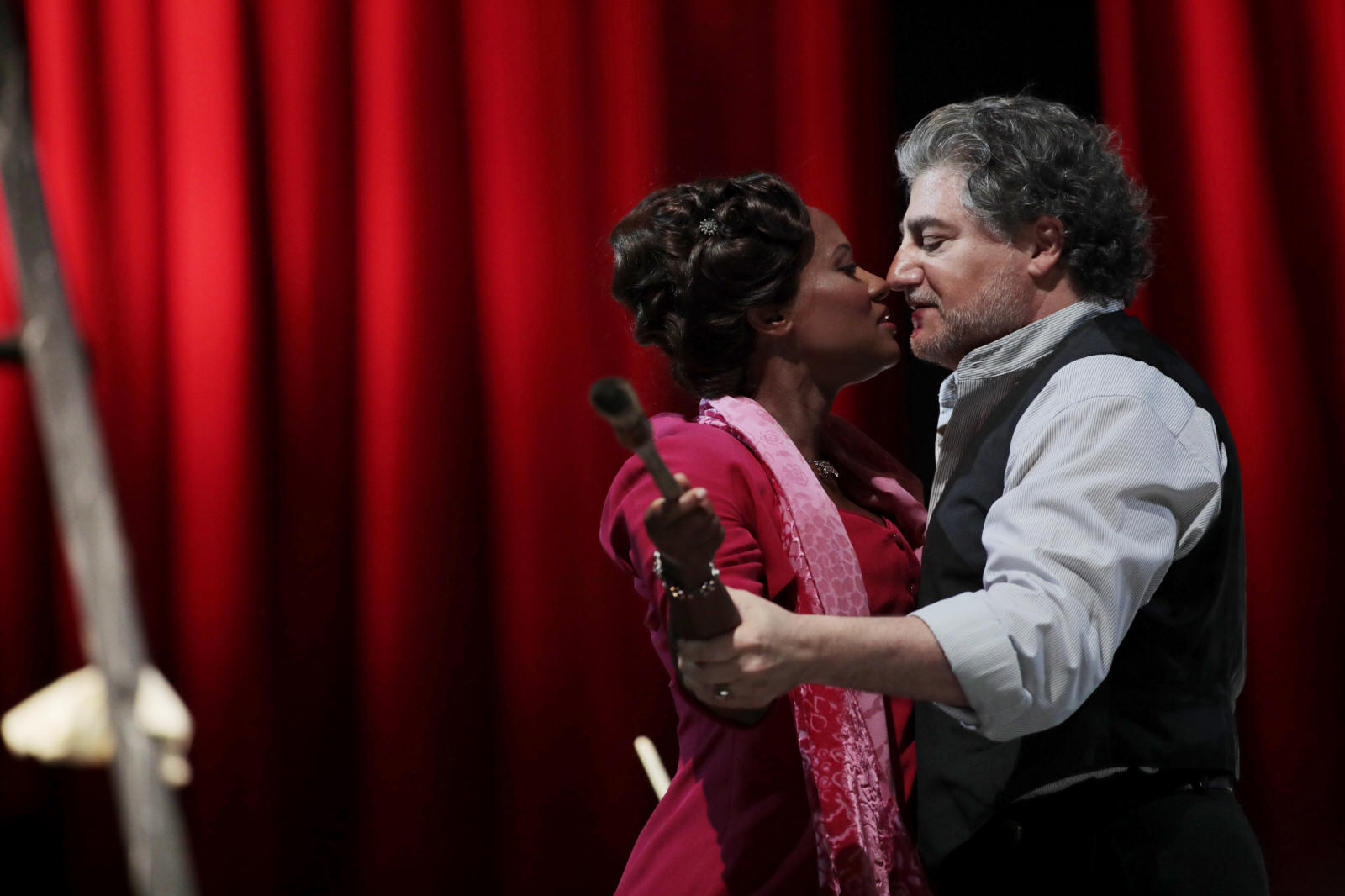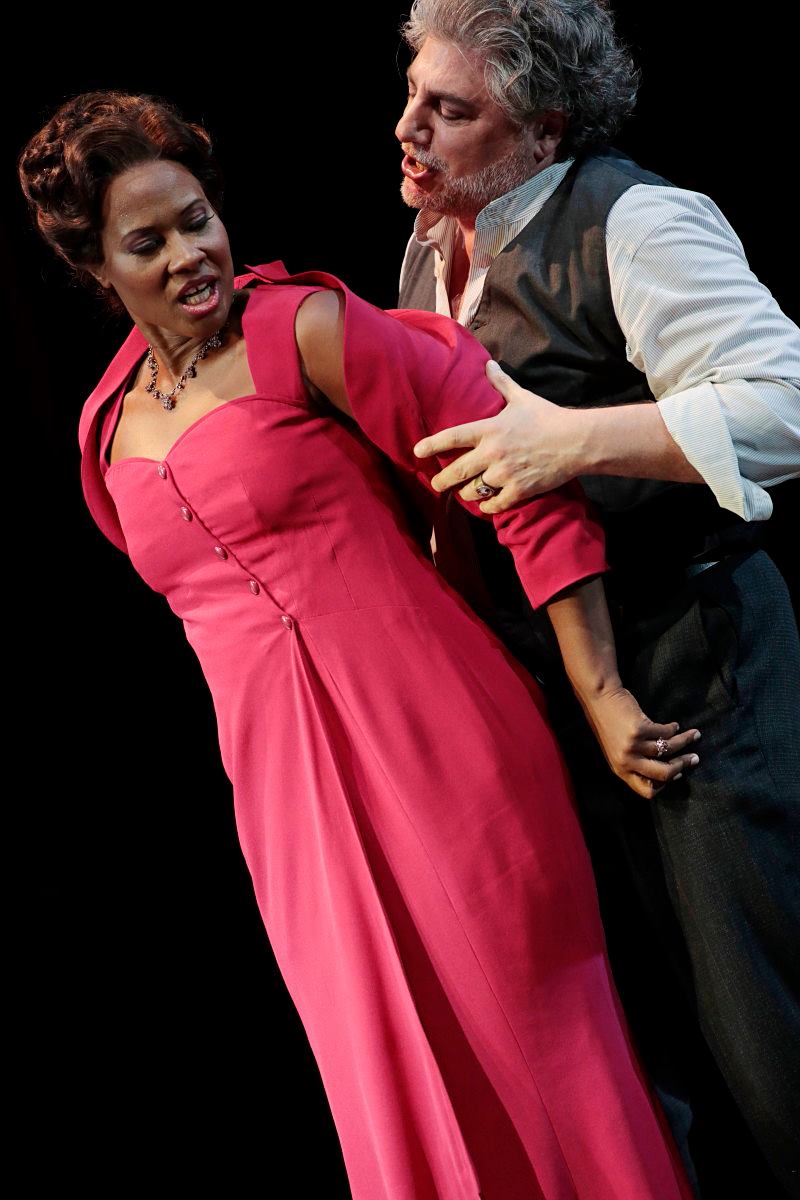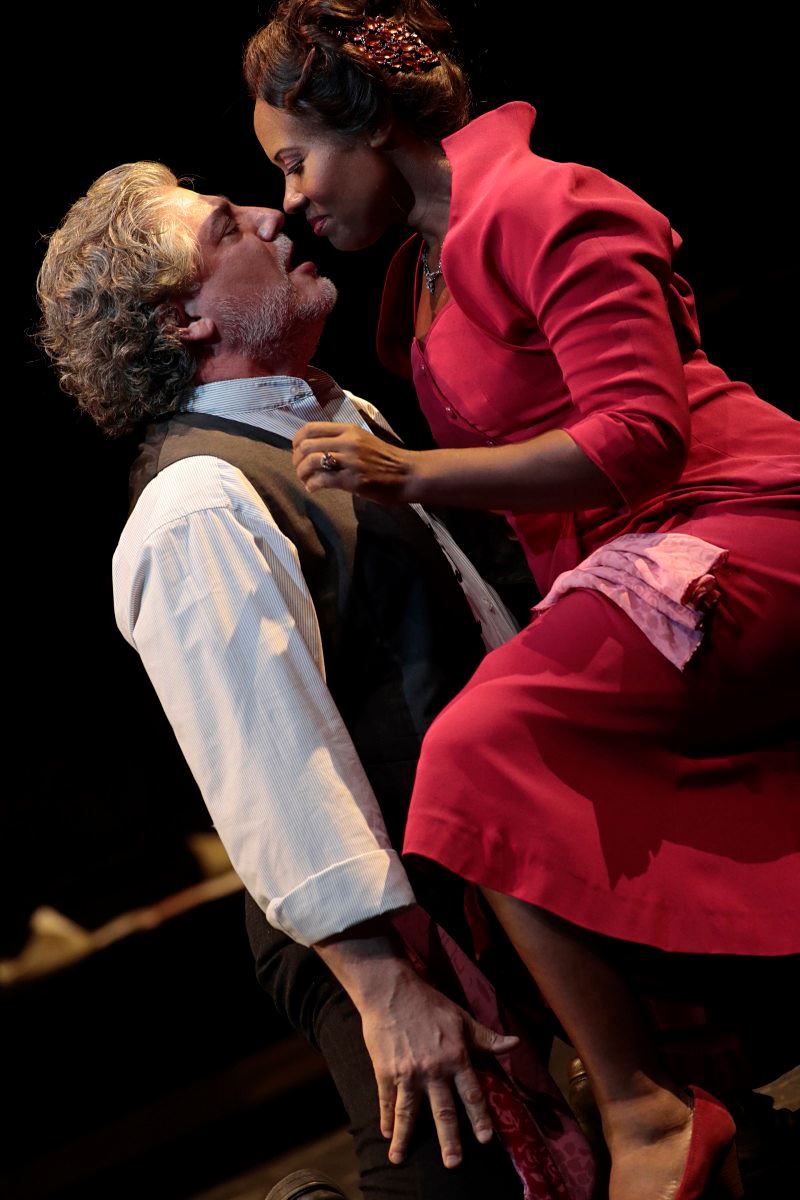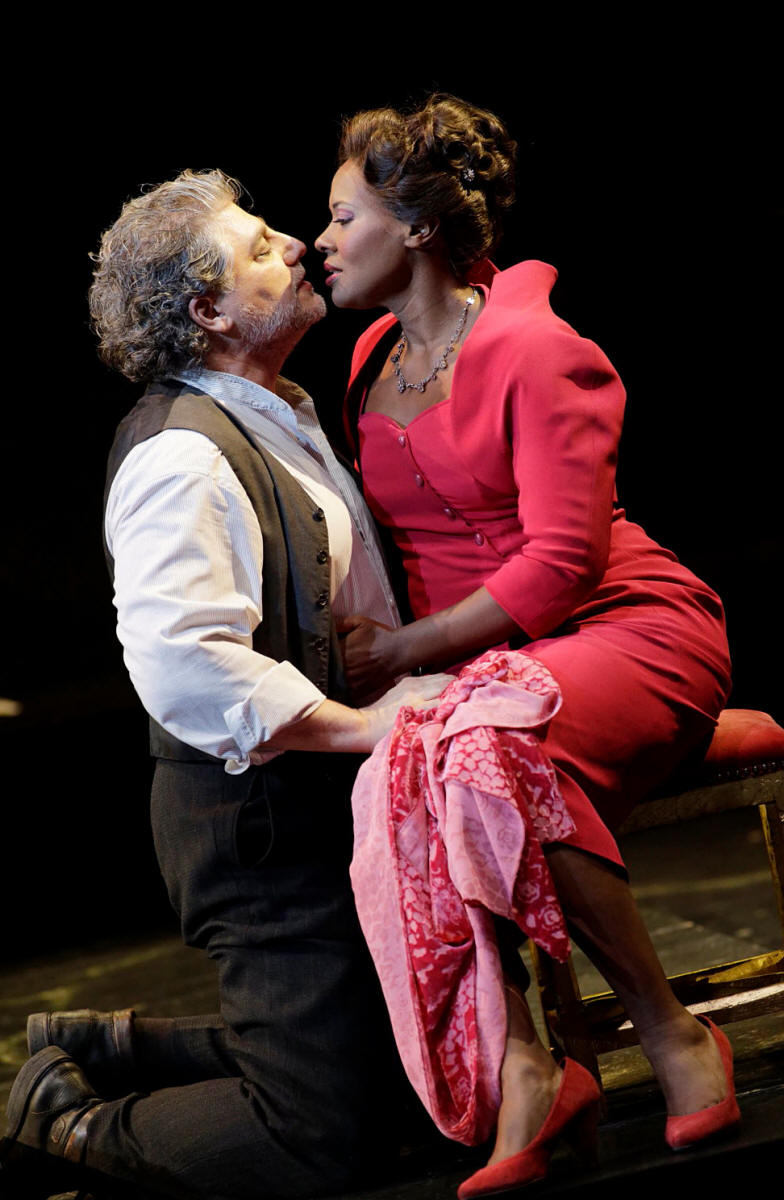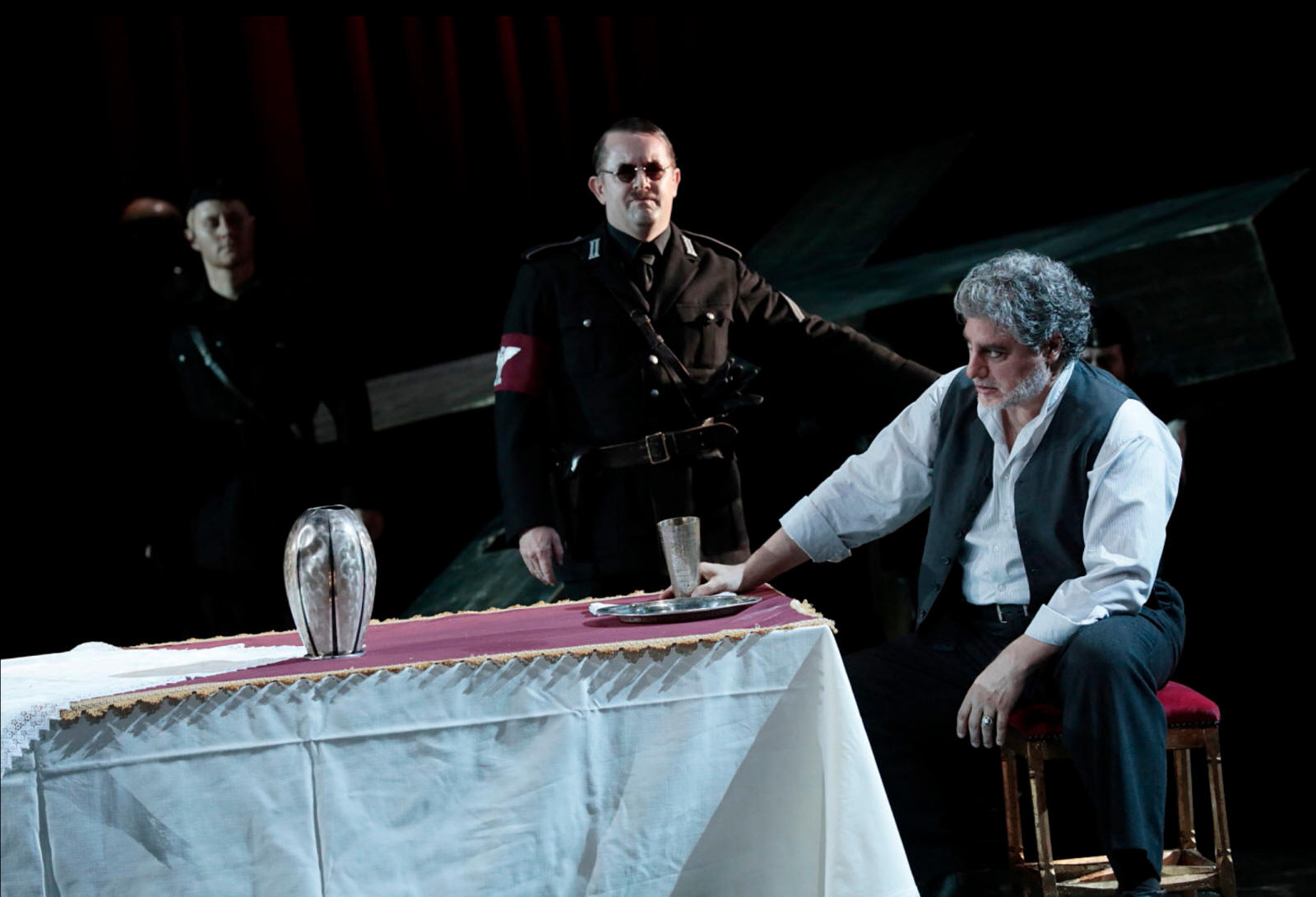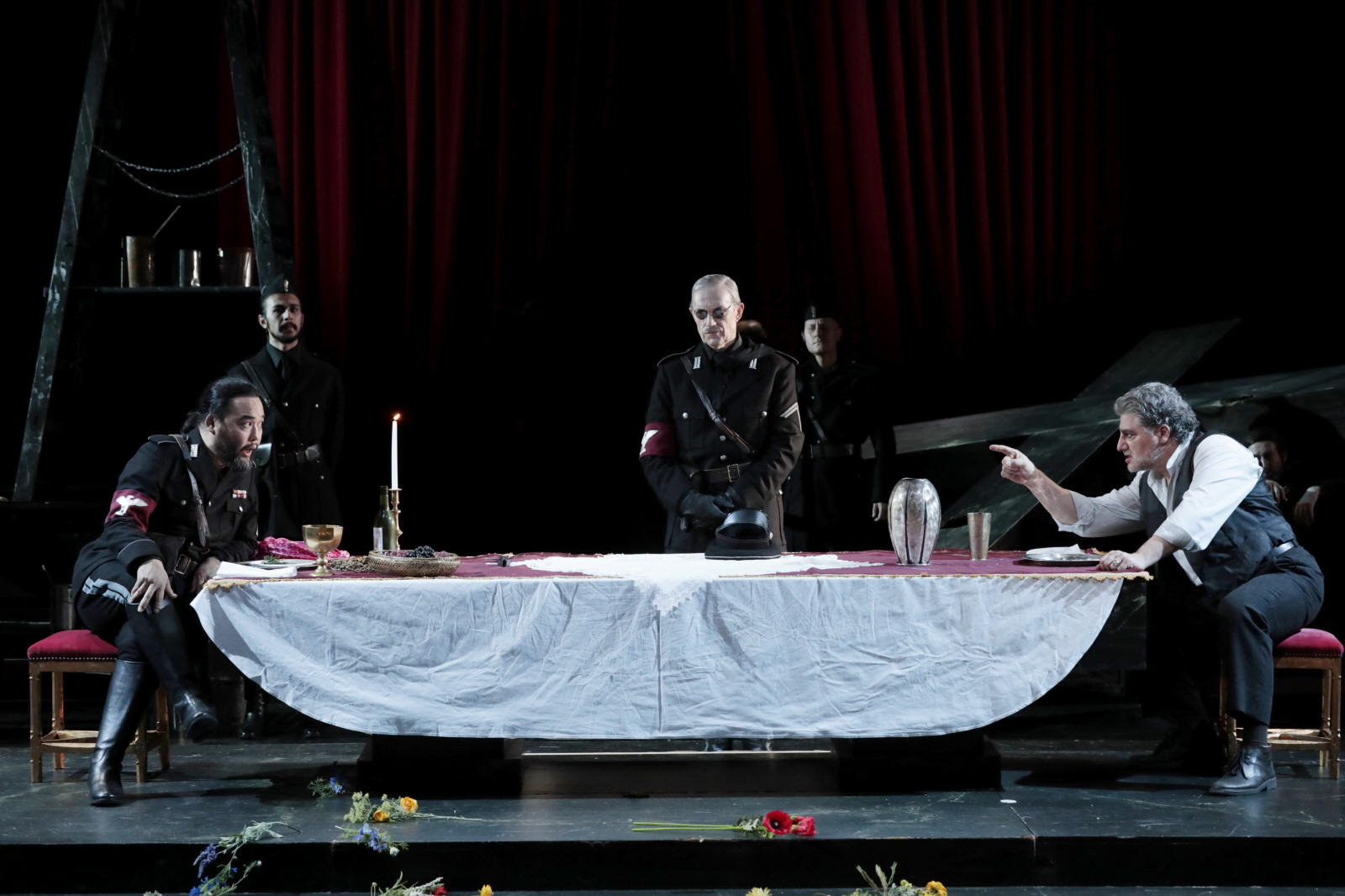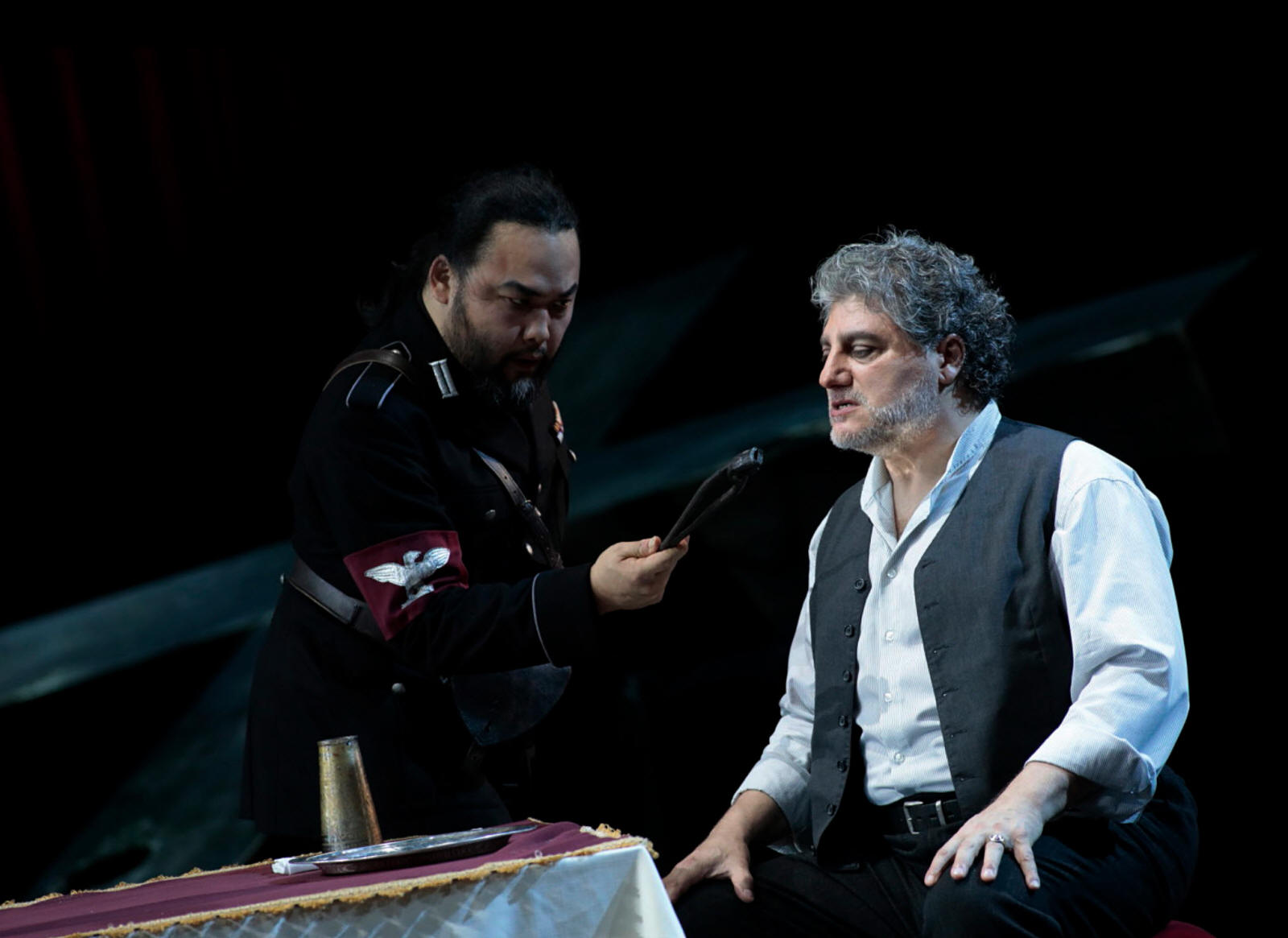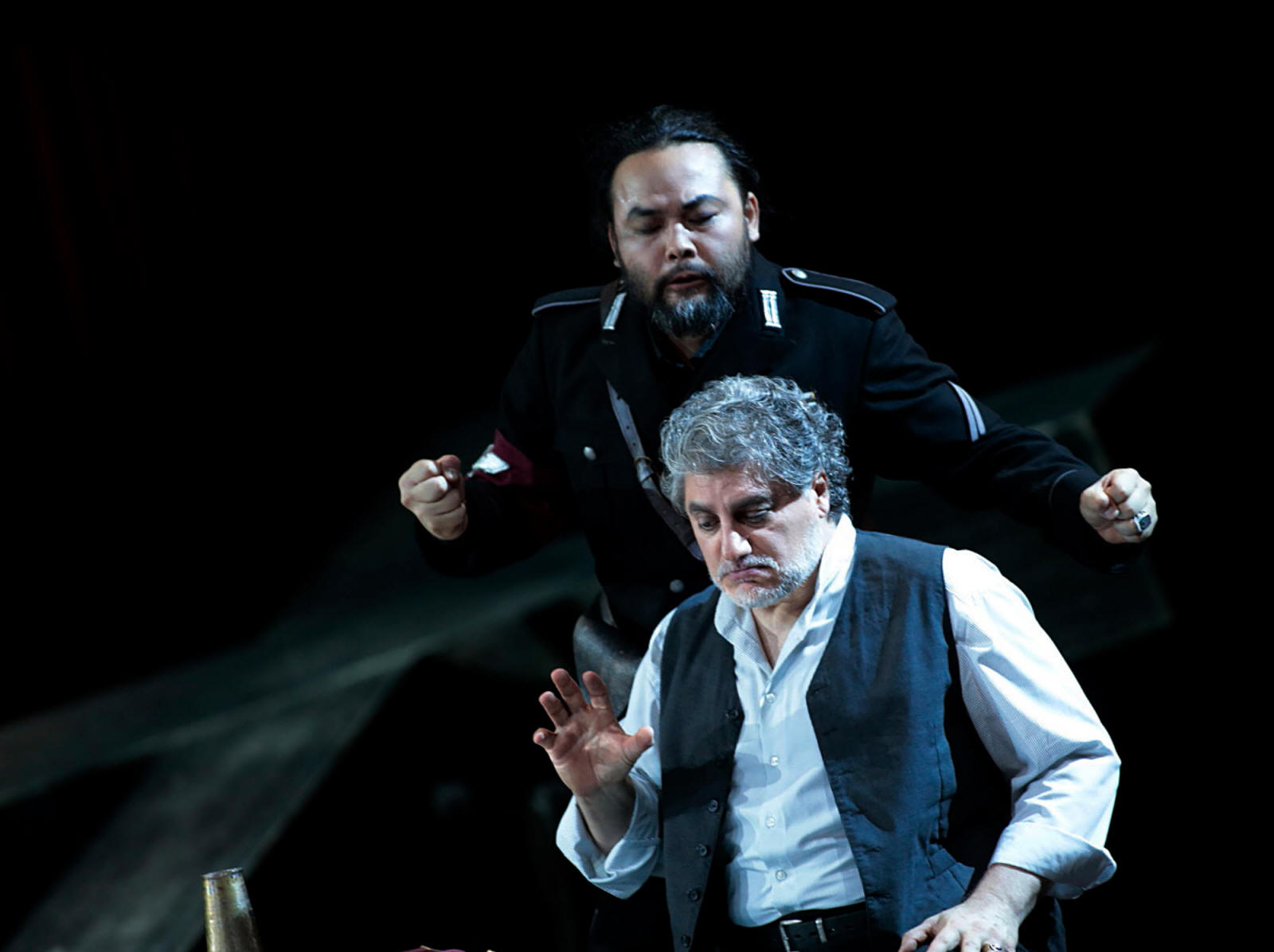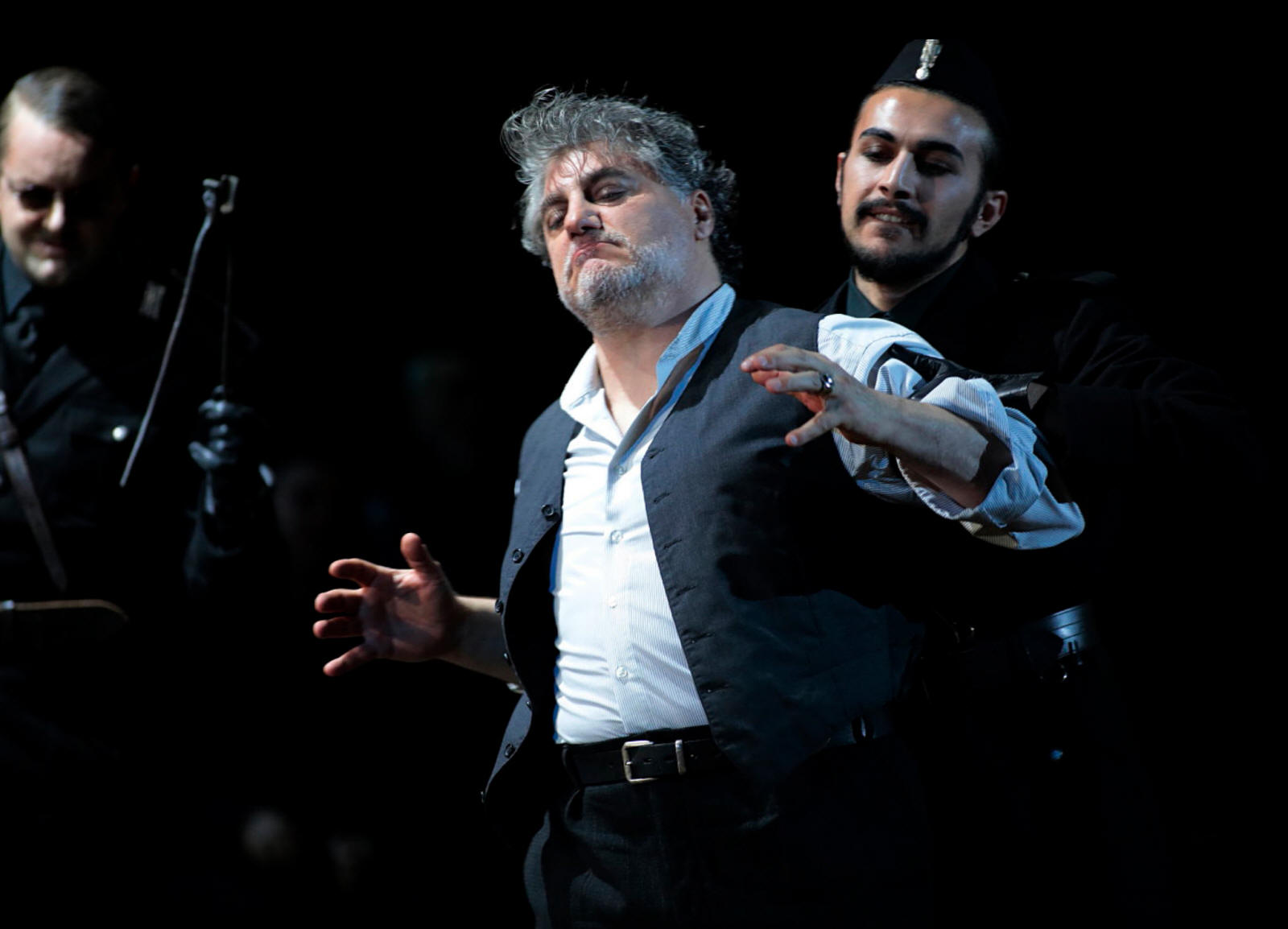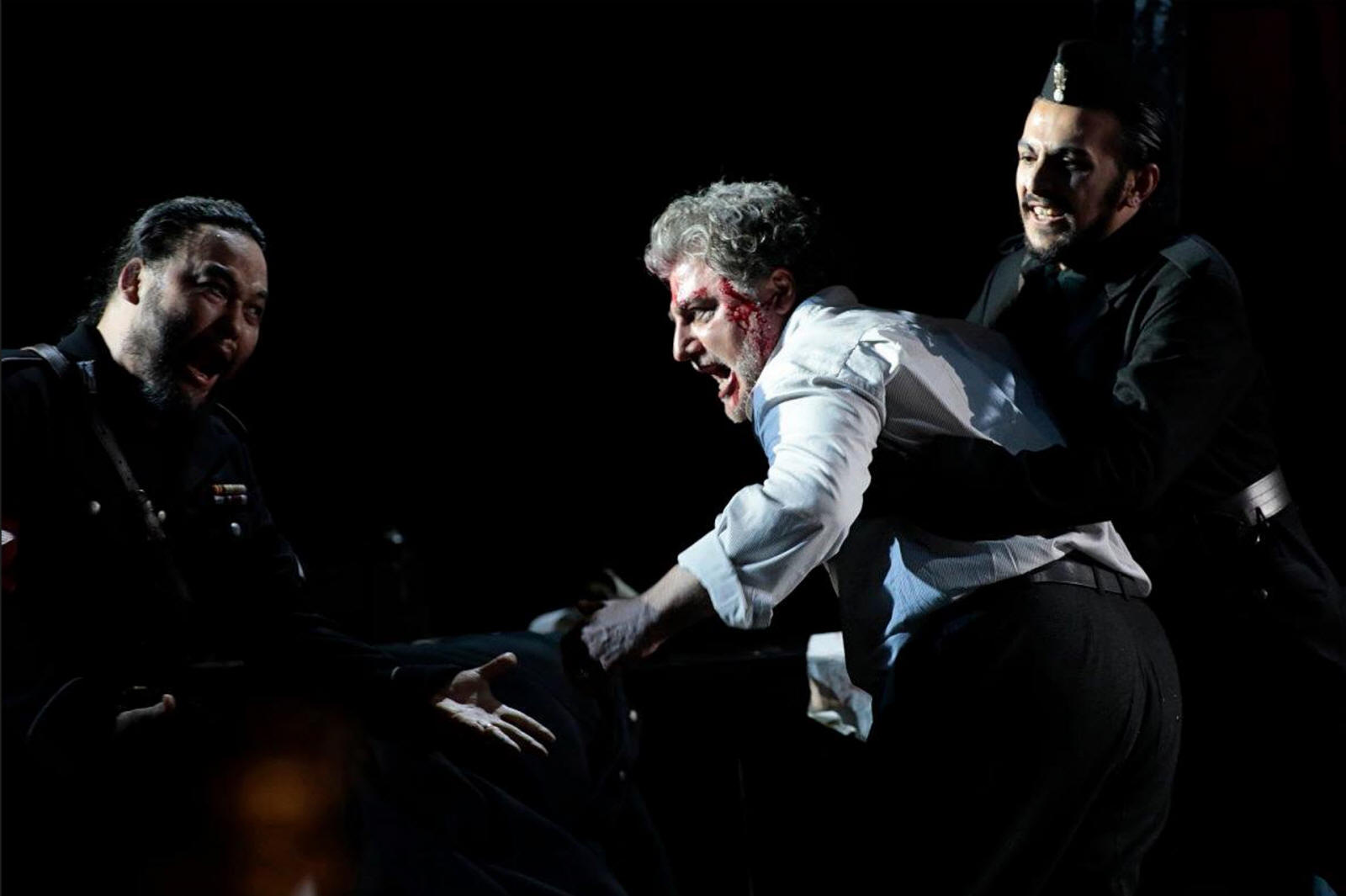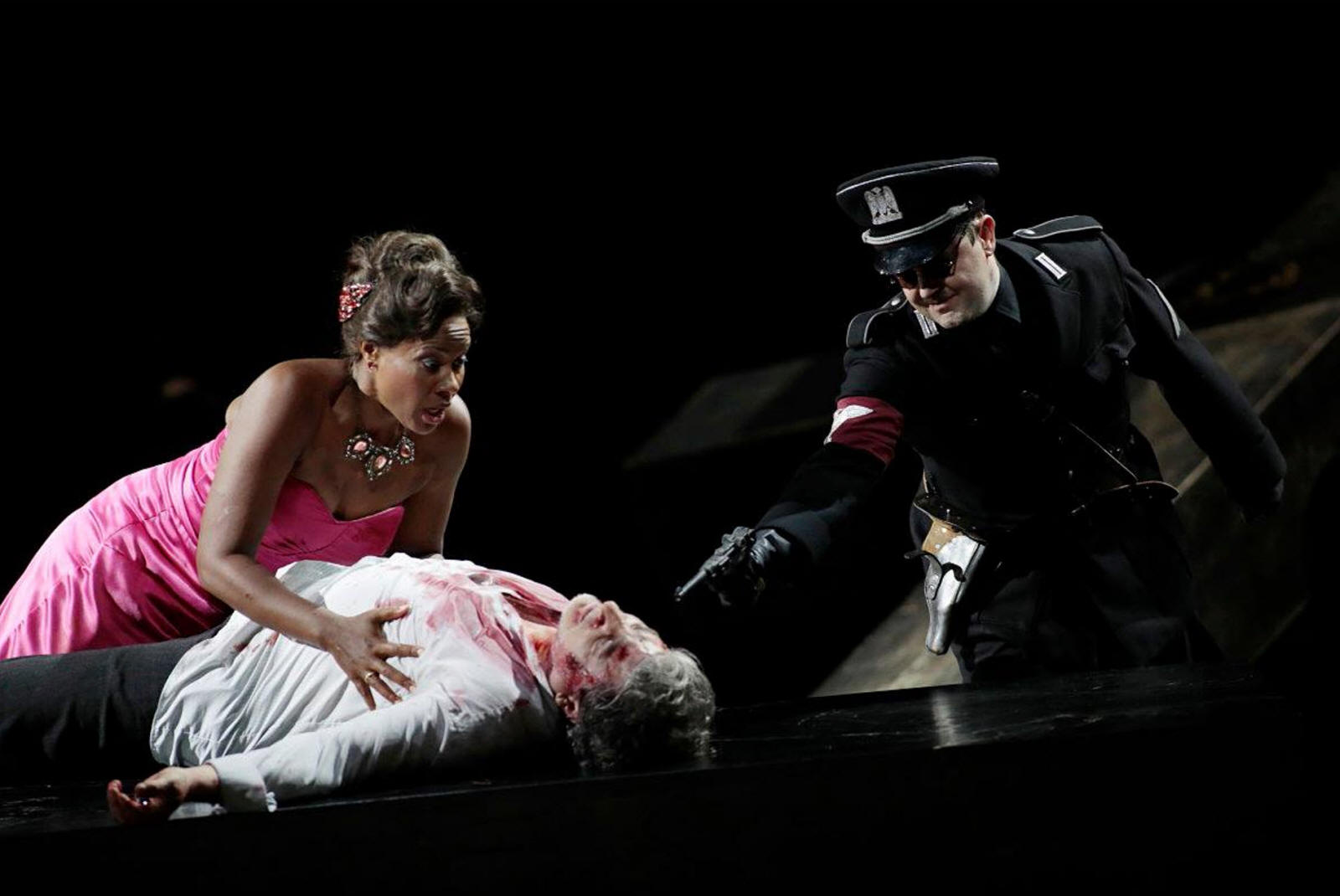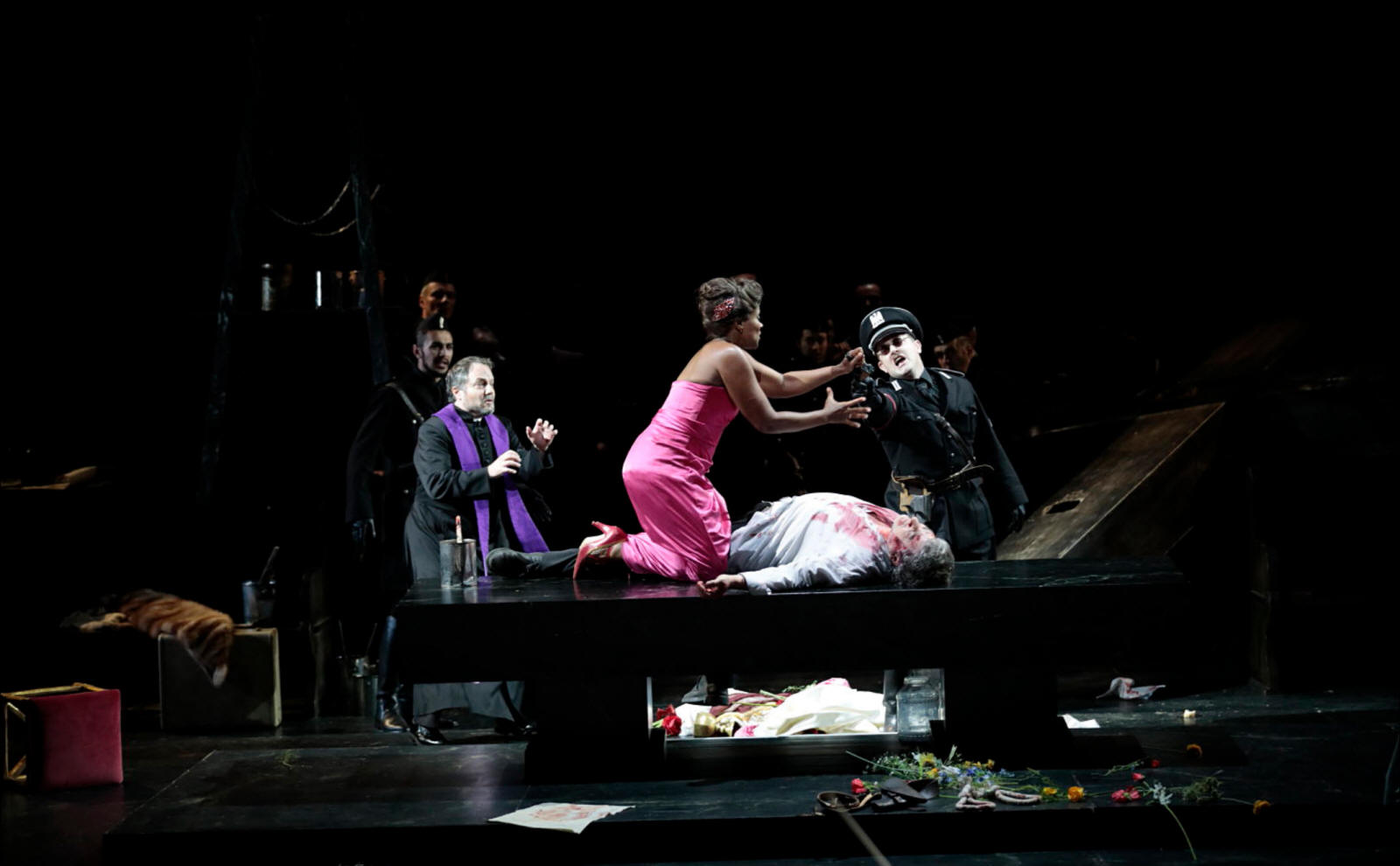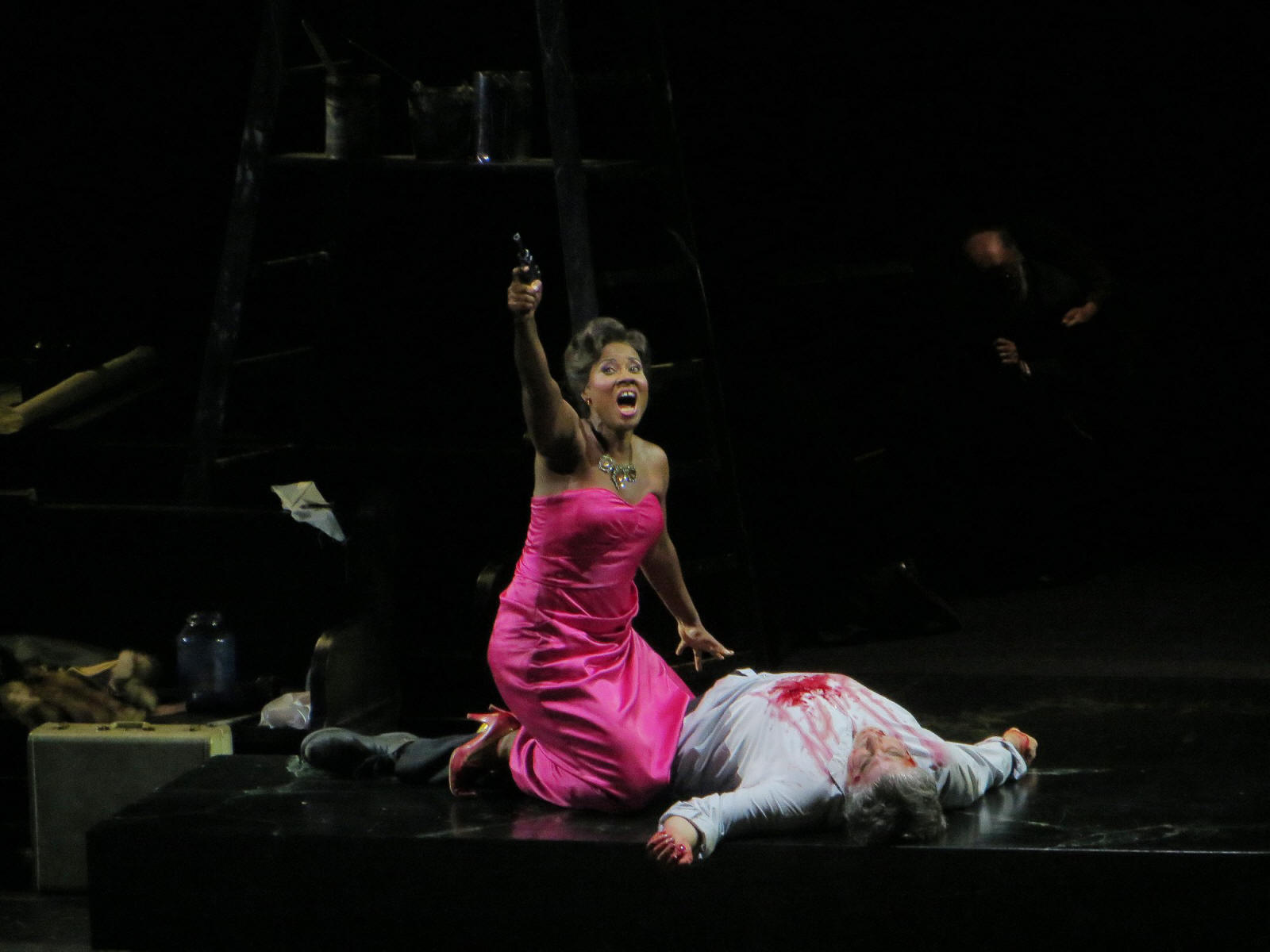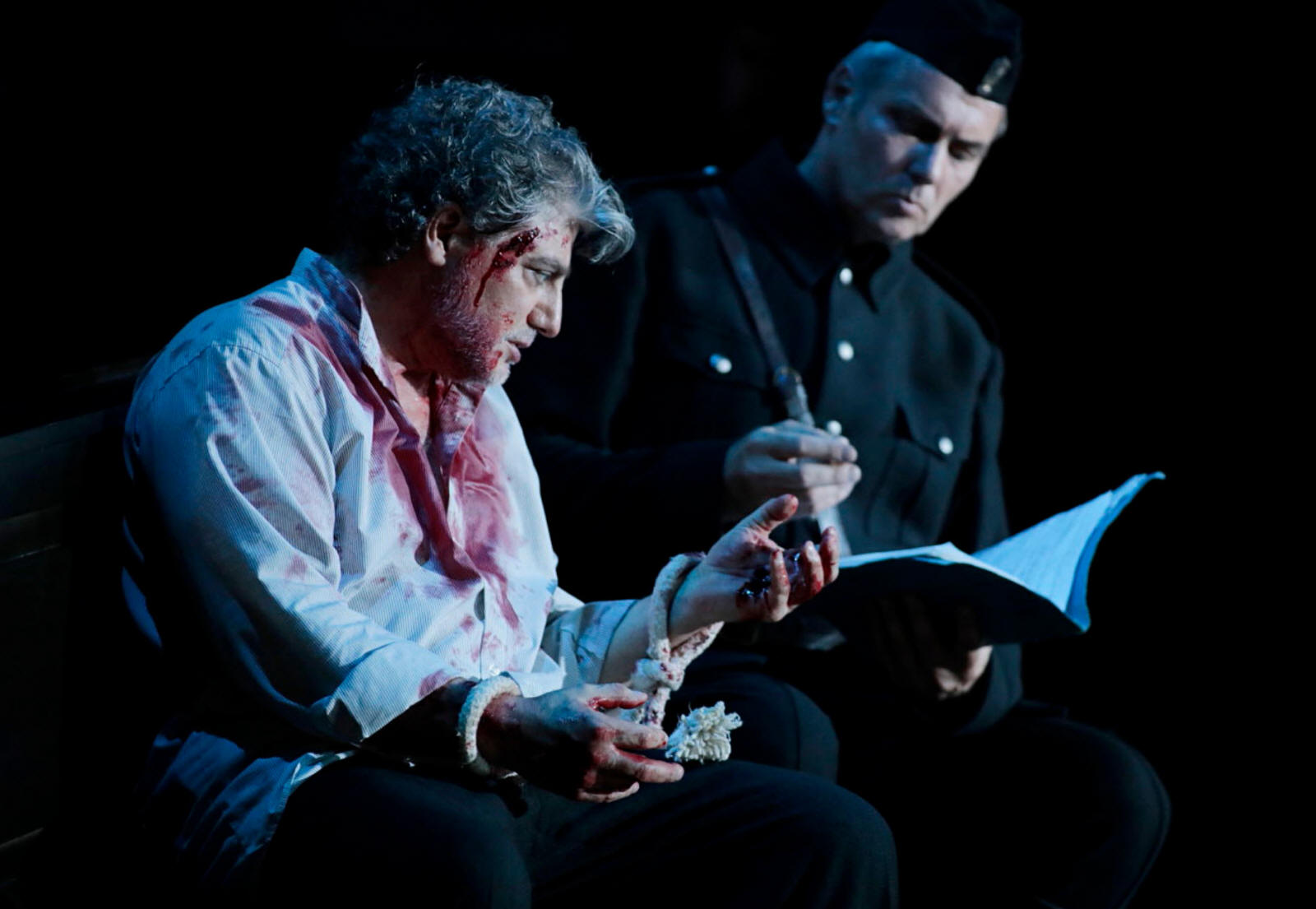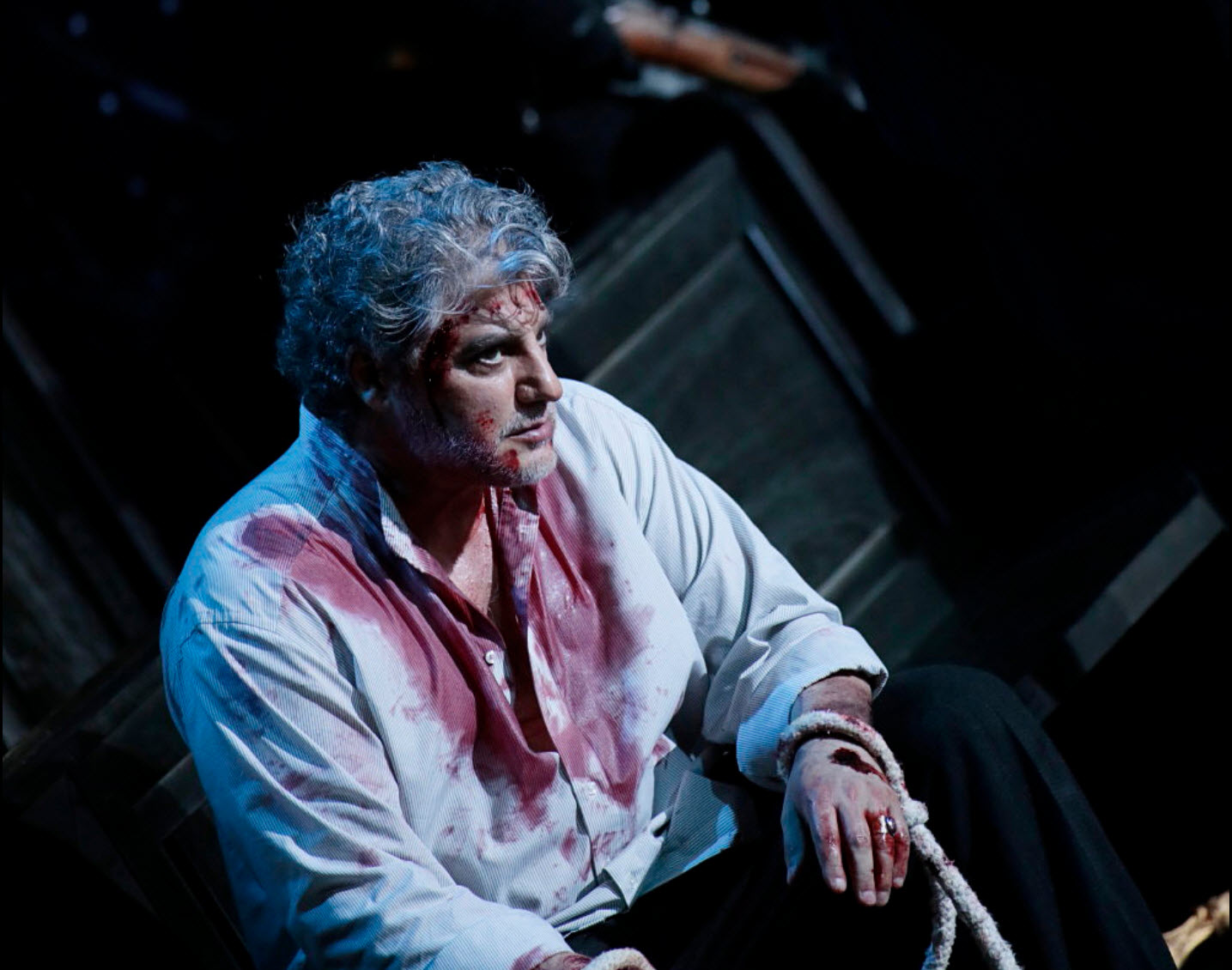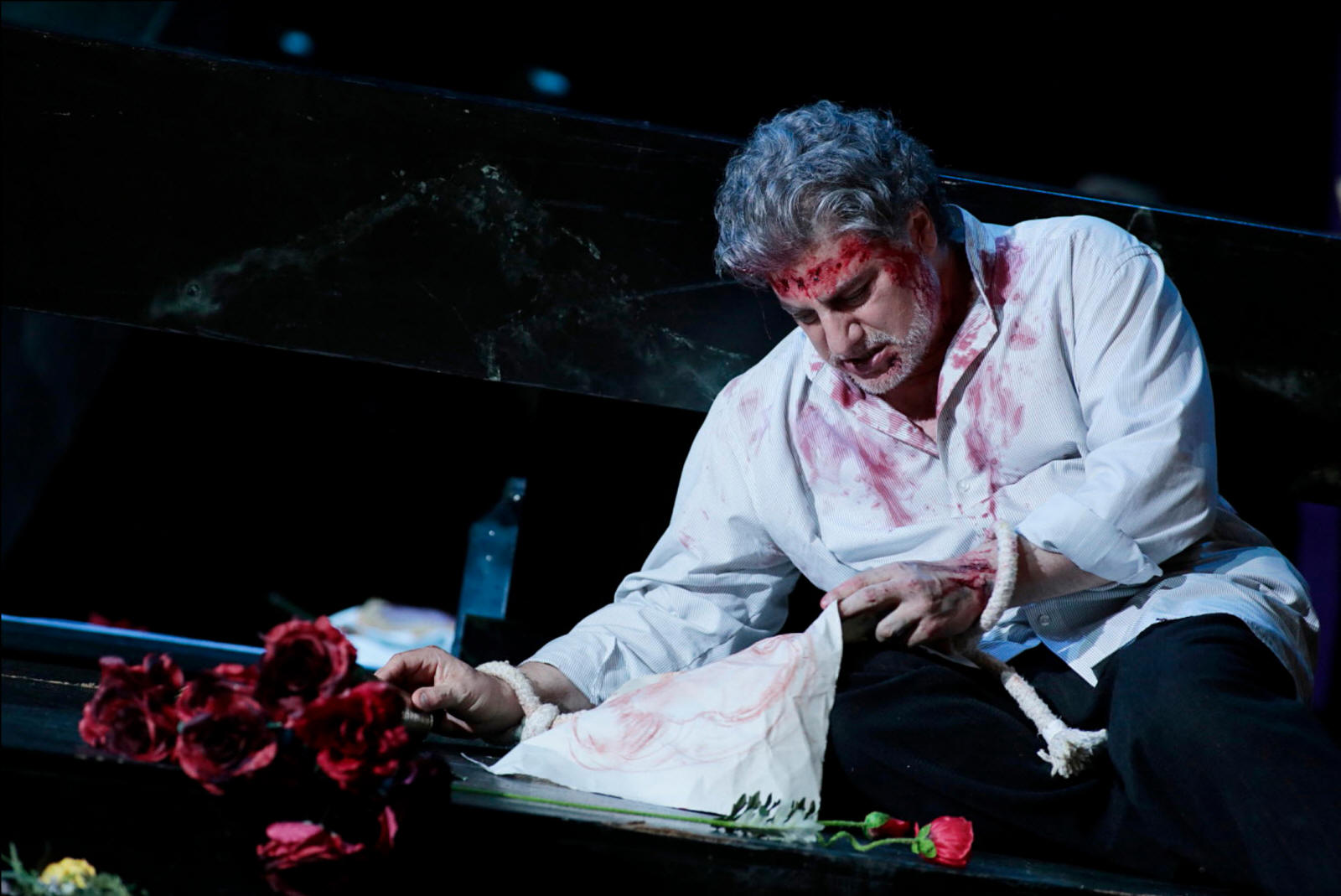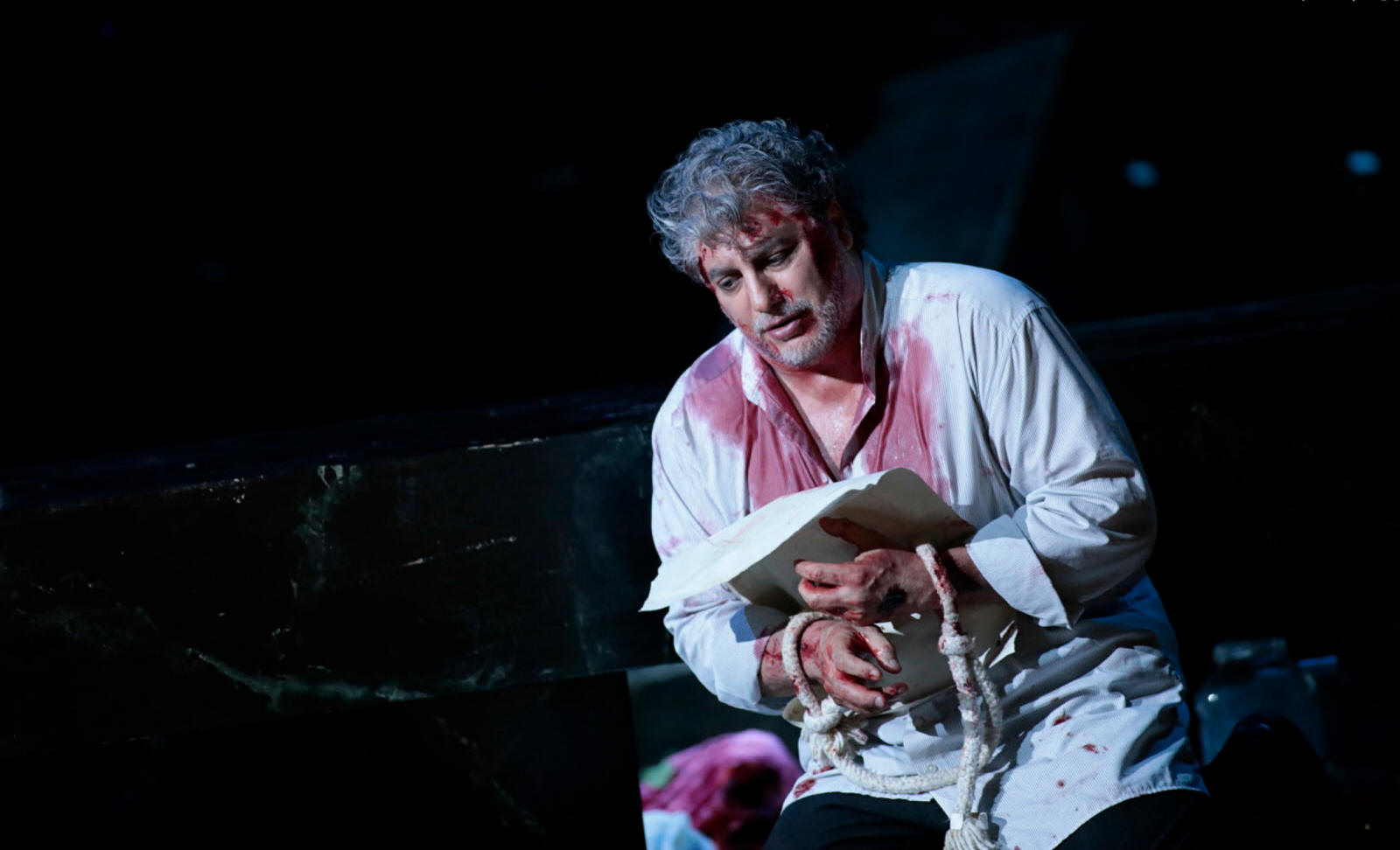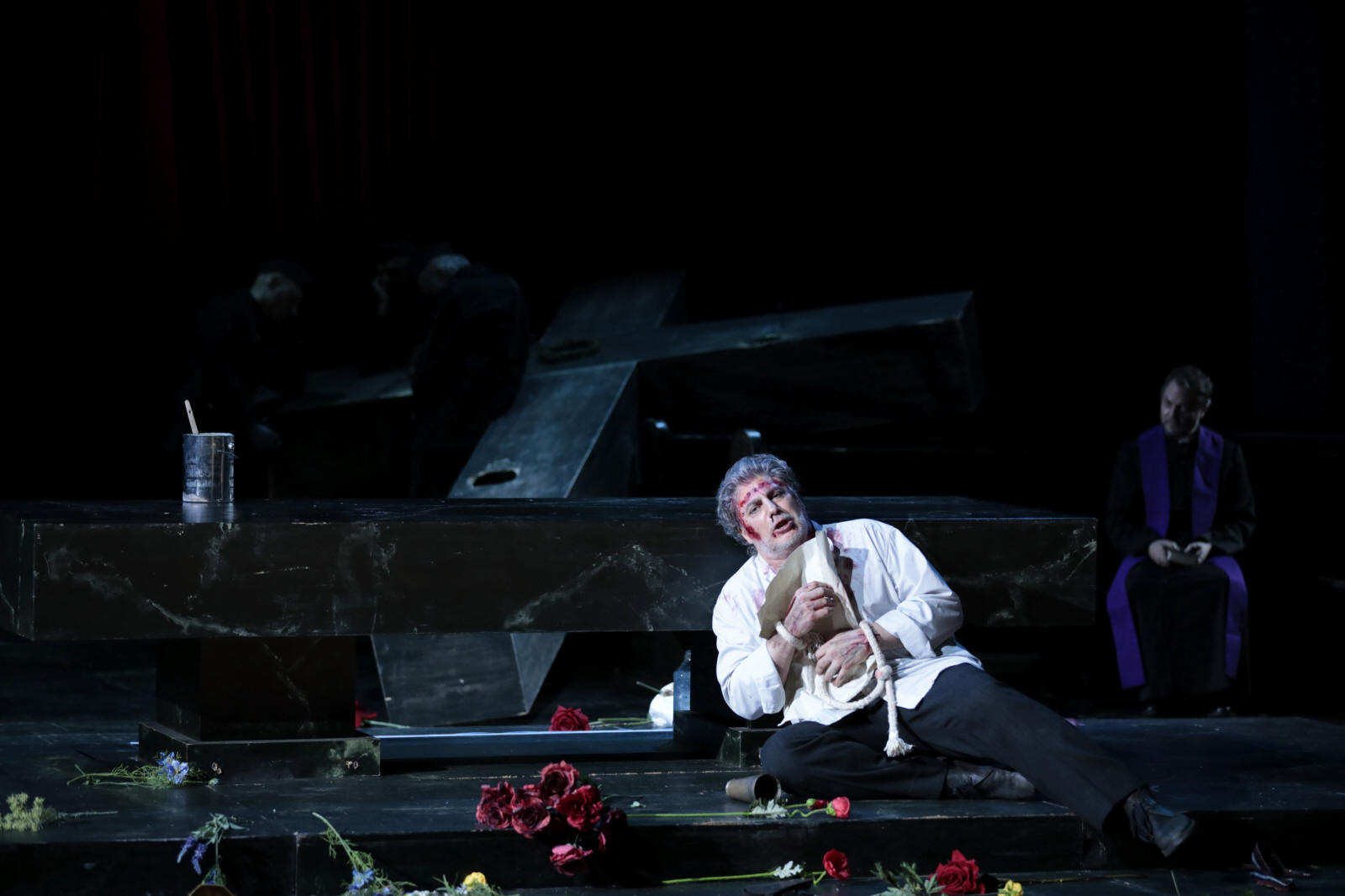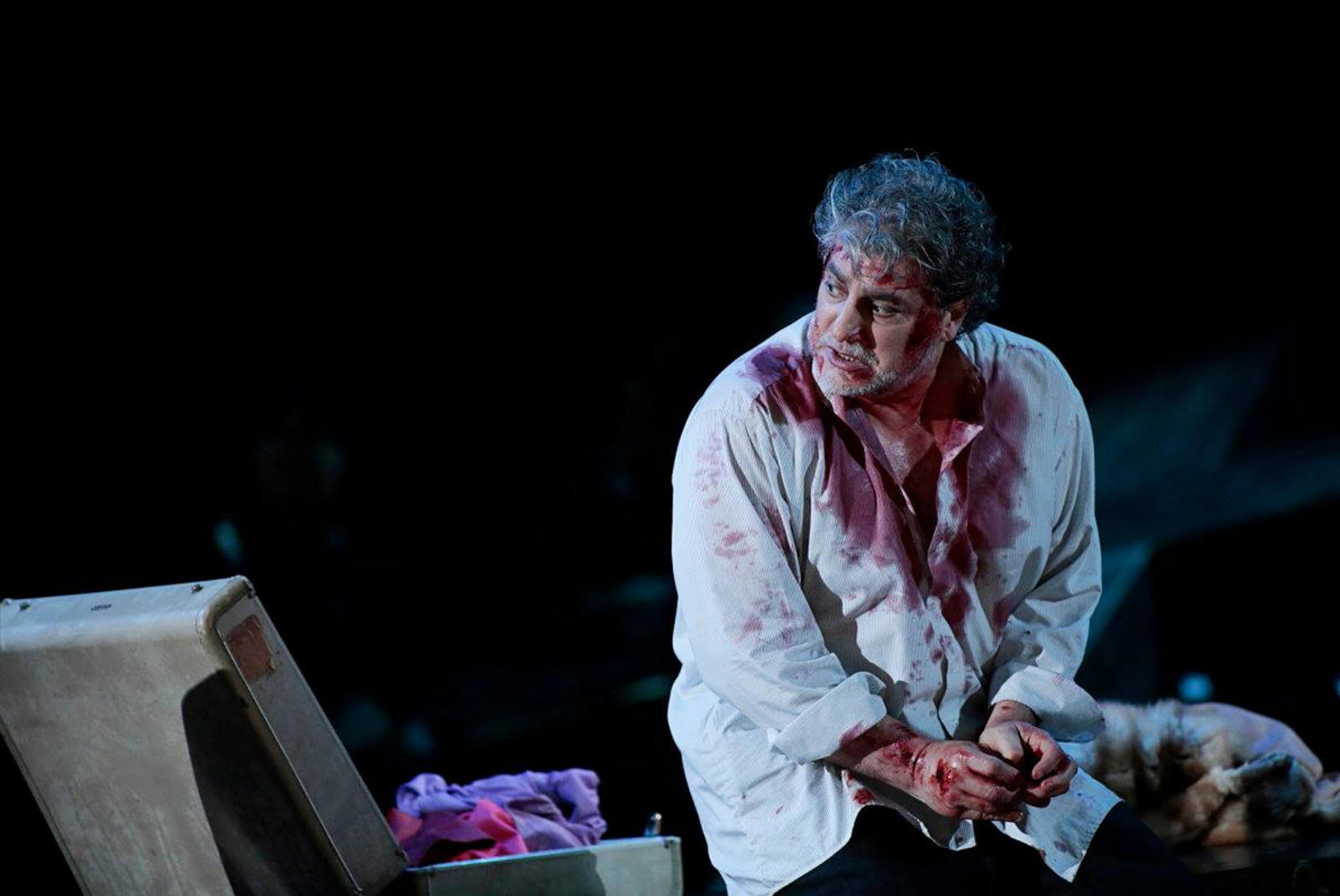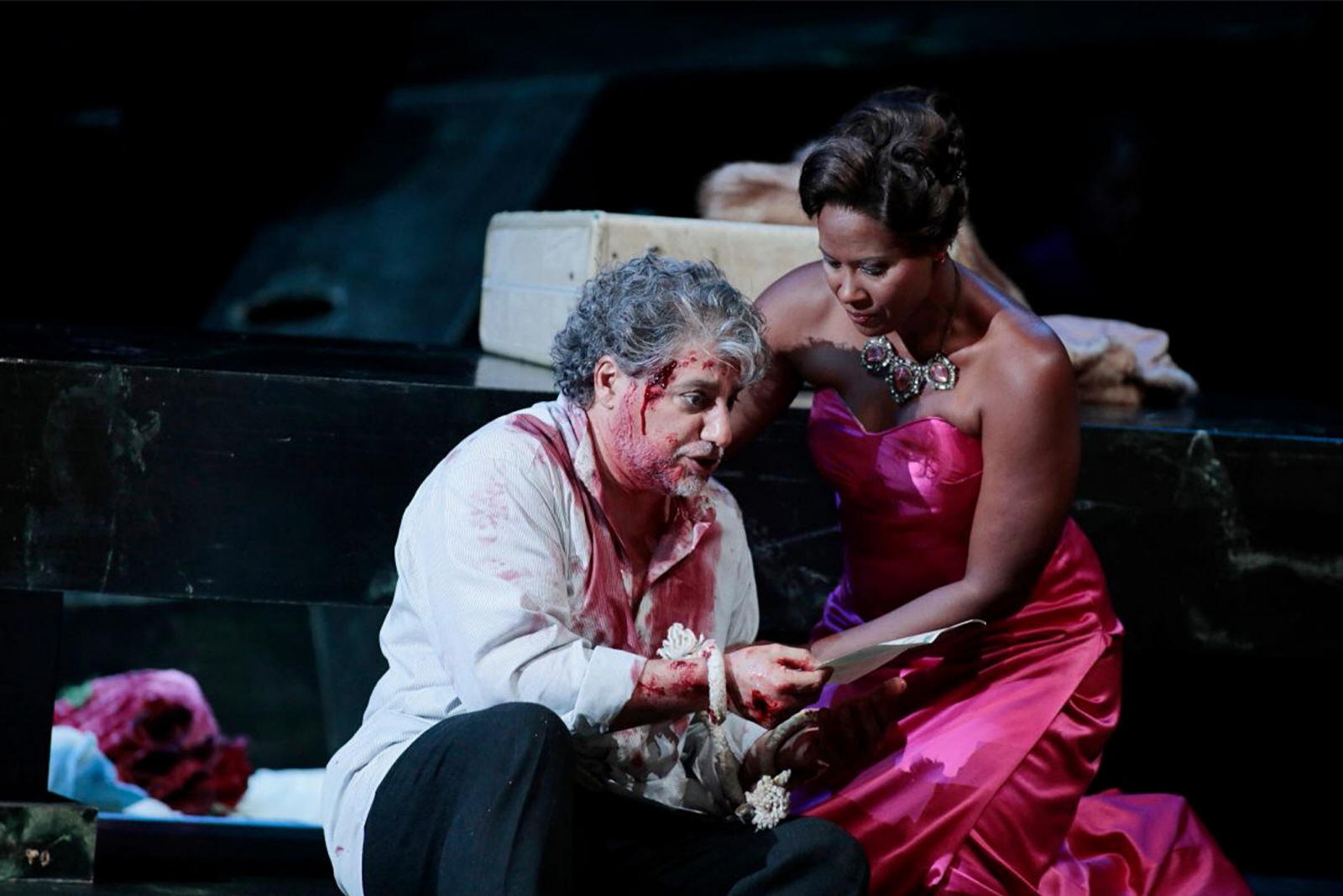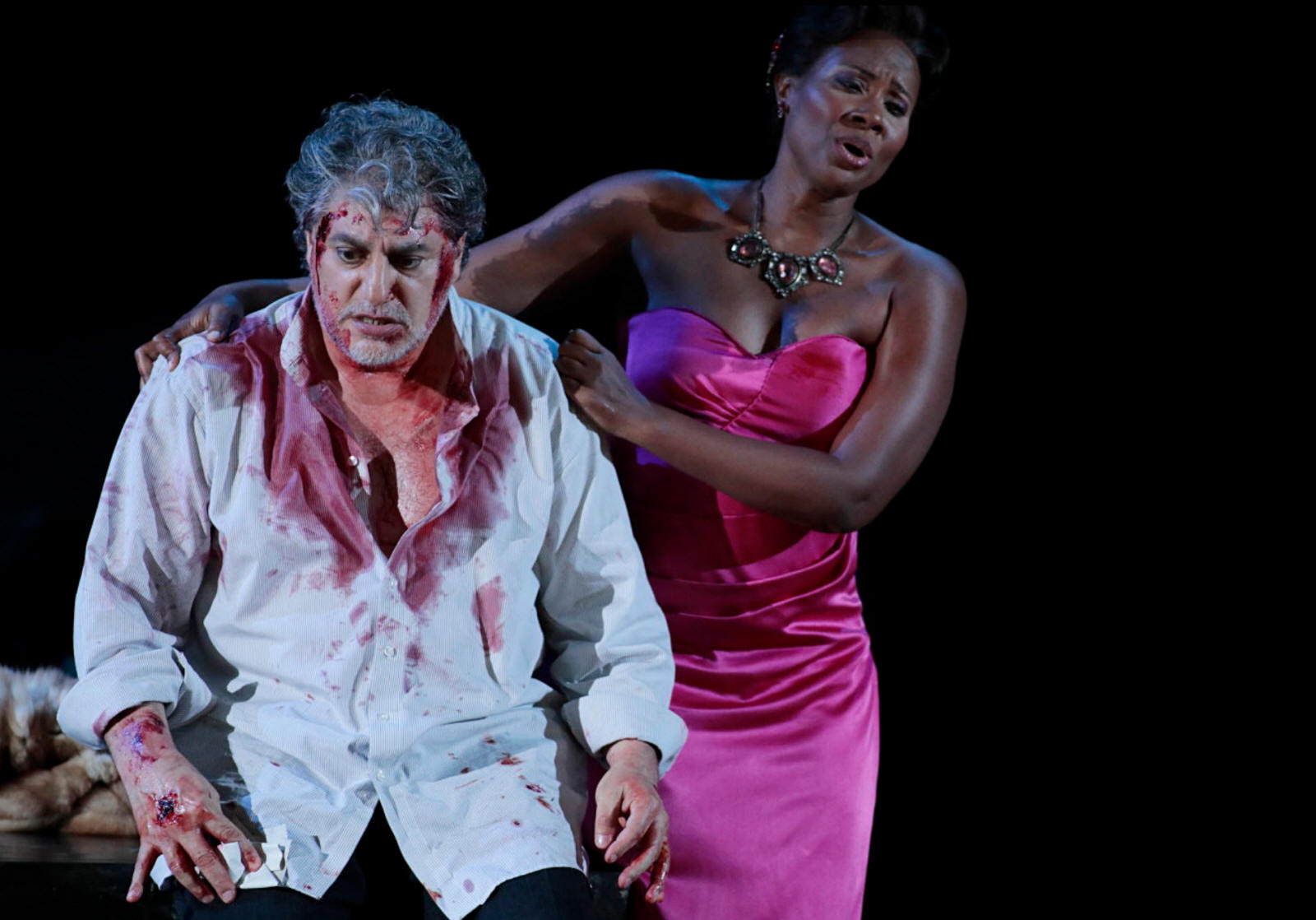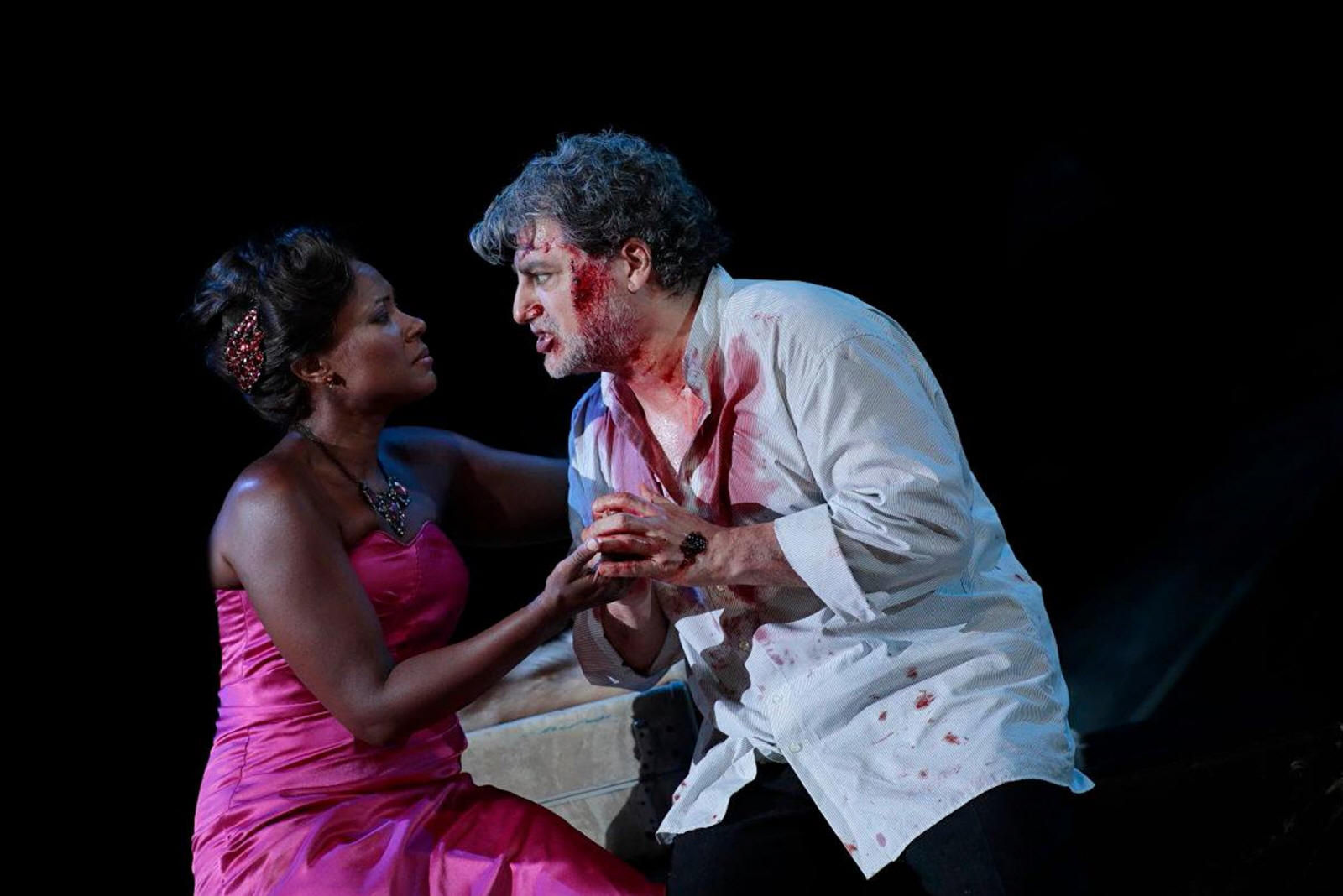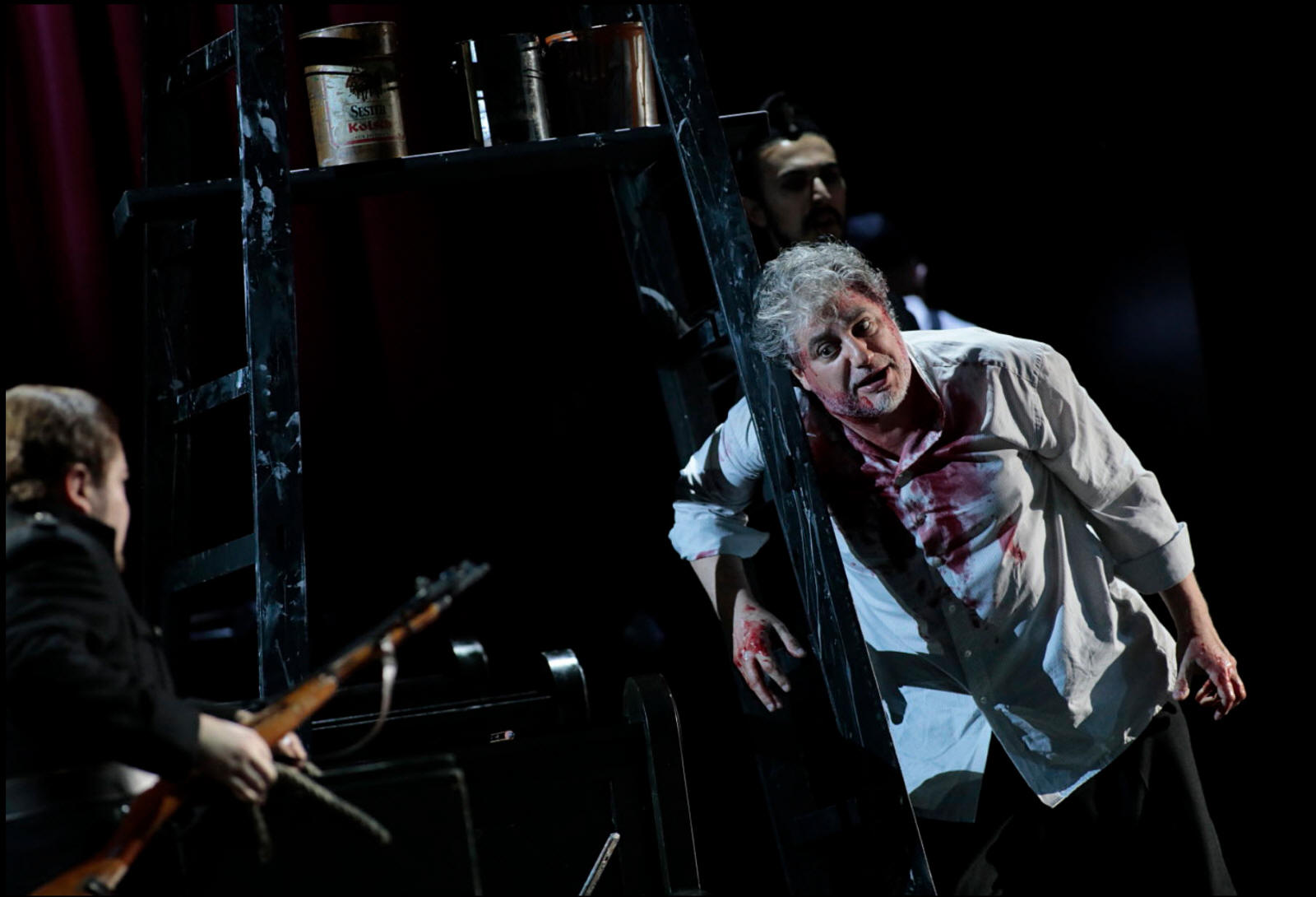|
Tosca in Hannover
Our quick review
|
|
Puccini under the starry sky of Hanover Waldeckische Landeszeitung 16 July 2014 Hanover - The NDR brings out a spectacular open-air opera behind the town hall: Tosca with José Cura in the Maschpark should be a spectacle - for 1500 paying and thousands of onlookers. There still has to be time for football. Even on the third day after the World Cup, even when it's actually about Puccini. About Tosca, more precisely, about the big open-air spectacle of the NDR in the Maschpark next Saturday, about one of the great dramas in opera history, about love, passion, loyalty, betrayal. But today's dramas don't just take place in the opera, but also outside, on the green lawn. And so it is that José Cura, world-class tenor and Argentinian, rolls his eyes painfully when, at a press conference in the "Garden Hall" in the New Town Hall, the subject of the defeat of "his" team comes up. In the end, someone had to win, says the man who will play the painter Mario Cavaradossi in Tosca, diplomatic about the final Argentina - Germany. Then he laughs mischievously. This Wednesday in the Maschpark it is also day three of the construction work for a project that is so far unique in Hanover at this location. Since Monday, the stage for an opera production of Puccini's most famous opera "Tosca" has been created here in front of a fantastic backdrop: the town hall, the Maschpark, the Maschteich. The stage roof on the terrace behind the town hall now stretches mightily over the stage on which the singers and the NDR Radio Philharmonic will later appear. The girls' choir and the Johannes-Brahms-Chor Hannover are also added. Props such as a statue of Mary or a desk have so far been lost on the stage. Shovel excavators drive back and forth, people in orange safety vests swarm. In between you can see stars in casual clothes, Cura for example in jeans, white shirt and sunglasses, the outgoing NDR chief conductor Eivind Gullberg Jensen or the soprano Catherine Naglestad (Tosca), during the first rehearsals. José Cura is one of the classical singers who like to perform a lot at open-air concerts. He has also directed. As early as April, after appearing as a star guest at the "Festive Opera Evening" in the Hanover State Opera, he had gotten an idea of the future open-air stage behind the town hall, a "rock 'n' roll arena" in his opinion. and suggestions for scenic elements in the actual concert performance. Cura himself, for example, will not only be on stage, but will also sing alongside a small stone wall on the terrace. The shepherd girl from "Tosca" even strides along the Machte pond. It will be played by Katharina Held from the Hanover Girls' Choir, who is just 19 years old, has just finished high school, has just won first prize at "Jugend musiziert" and will be studying singing in Berlin from September. How does she find singing among world stars? "I'm excited, but also proud." If Katharina Held knew how many visitors her fellow singer Cura is expecting on Saturday, she would probably get a little more nervous. The Argentinian is hoping for up to 15,000 listeners, not just the 1,500 paying guests, but also a large audience in the adjacent Maschpark. "This is a wonderful opportunity for everyone to get a taste of opera in front of a fantastic backdrop," he says. NDR TV boss Marlis Fertmann confirms: “The music will be amplified. Onlookers are expressly encouraged." Fertmann, who, in his own words, is a fan of open-air opera galas, such as the Verona Opera Festival or the Waldbühne in Berlin, came up with the idea of the Hanover open-air opera: "We will give people - also with the pictures from the television broadcast of Tosca - show, what a wonderful panorama the so often underestimated Hanover has.” And the instruments? For some instruments, heat is death. The concert starts at 9 p.m., but there will also be rehearsals during the day. "It works," Fertmann and conductor Eivind Gullberg Jensen are equally convinced. Open air is just “the opposite of air conditioning”.
|
|
“The atmosphere at Maschteich is fantastic”
Neue Presse Henning Queren 17 July 2014
[Computer-assisted translation]
A world star in Hannover: Tosca-tenor José Cura about positive heroes, painful defeats and the power of music
Neue Presse: José Cura, you are Argentinean. Does the (football/soccer) final still hurt?
JC: Well, that's the wrong question. Let's end the interview here. (Rises, laughs and sits down again) But seriously, from an objective point of view it was a very good match. Fair until the end. And I have to recognize that Goetze's goal was incredibly perfect. And in the end, one of the two teams had to win. Better this way than in the penalty shootouts. But...
Neue Presse: But?
JC: We will eternally ask ourselves what would have happened if Neuer had got the red card.
Neue Presse: OK, let's pass to real art now. What's your opinion of opera open-airs like this one?
JC: There are advantages and disadvantages like in everything: The ambience and the atmosphere are certainly an asset. And many more people can participate. I'm expecting about 15,000 people to be here tomorrow. That is ten times more than at an evening in an opera house. But of course, you don't have the technical support like in an opera house here. You have to make compromises for the acoustics. But perhaps to establish a festival here in the future, such an evening is fantastic.
Neue Presse: What do you think of the performance location?
JC: Well, the stage looks like a rock 'n' roll arena at the moment. But I think with the light, with the dusk, the mood will change completely. Everything here has been constructed for the night. Anyway, the setting with this park and the pond provides a fantastic atmosphere.
Neue Presse: What do you want people to take home from such an evening, from this Tosca?
JC: People should take away the realization that classical music is not fast food. The level of enjoyment is directly proportional to the curiosity the audience is ready to invest in this music. It's not like pop music, where you get everything immediately, fun, movement, you go home and everything is clear. Here we have the chance to take people to the point where they perhaps will say "Oh, somehow this is quite beautiful!" And that they may perhaps enjoy it so much that the next time they'll go into a real opera house.
Neue Presse: And here at Maschteich, the emotional threshold is significantly lower then?
JC: That is the nice thing, you can turn up here in shorts, flipflops, or if you like very scantily dressed and everything is ok. The only ones fully dressed here and sweating are we singers and musicians. The only thing that scares me a little bit are the mosquitos. I got one in my throat during an open-air Tosca years ago. A nightmare.
Neue Presse: Our mosquitos are rather midges, they are very small.
JC: Then I'm reassured.
Neue Presse: Do you listen to pop music in private?
JC: It's very simple, I don’t listen to music at all. Many professional musicians are like that. We want silence because we have to do our musical job eight hours a day.
Neue Presse: When you were young, you also sang pop music...
JC: What does this mean, when I was young...The soccer thing was quite ok, but that I'm not young any more... (laughs)
Neue Presse: When you were a little bit younger...
JC: Okay. Yes, I did it and the experience helps when you are doing open-airs. I think for all these things like crossover and pop you should first of all talk about professionalism and quality. If something has a good quality it is good, that's it. The rest is a question of taste, you like it or you don't like it. And there's no arguing about taste.
Neue Presse: Why do you sing Cavaradossi in Tosca so often?
JC: He’s somehow the hero we all want to be - one of the most positive figures opera has created. He is so wonderfully old-fashioned, a guy who is ready to die for his ideals.
Neue Presse: What is next?
JC: On Sunday, we will perform this Tosca in Lübeck. The schedule is really a killer.
Neue Presse: And what about Hannover?
JC: I haven't really seen much of the city. The Maschsee is great. People always have the idea that we singers are traveling around, sightseeing during the day and singing a bit in the evening. But no, we are very hard workers. |
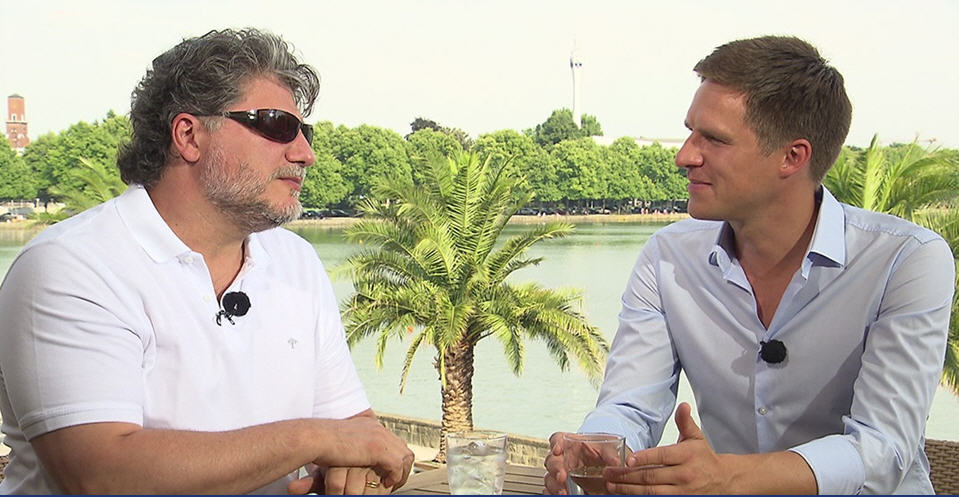
| Tosca Open Air in Hannover (follow-on in Lubeck)
Act I - The Lover
Act II - Patriot
Act III - Martyr
|
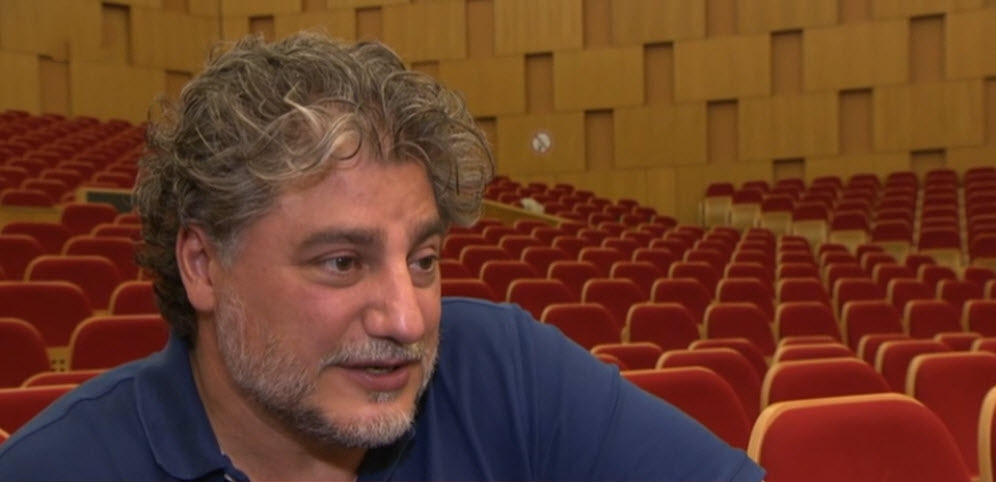
|
"Hannover listens to Tosca in Maschpark"
|
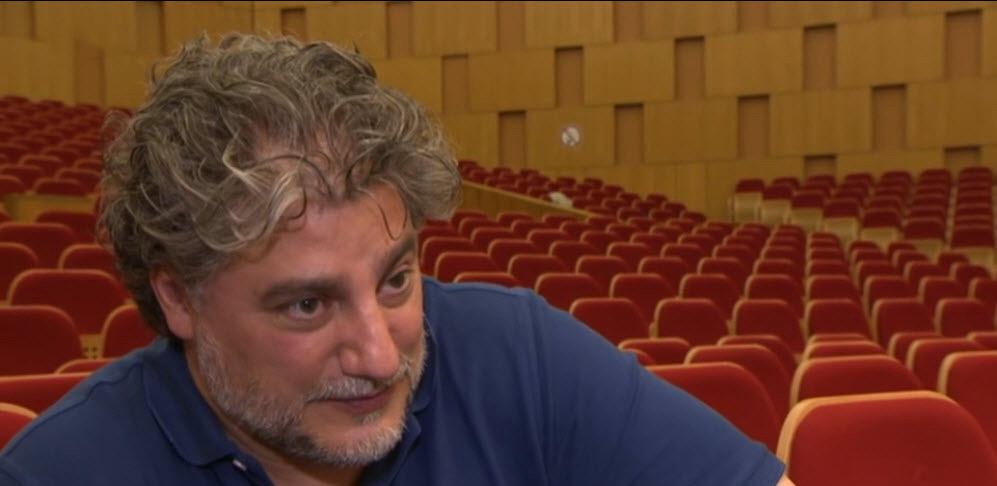
In front of the orchestra, there was still one meter of free space left. On this narrow strip, the development of a breathtaking opera took place. The concert-type performance of Giacomo Puccini's "Tosca" in Luebeck's Musik- und Kongresshalle (music and congress hall) was thrilling and vocally on the highest level. At the end of the evening, the audience was rejoicing at an opera without stage direction and costumes, made alive with only a few gestures, with looks, with a smile, a sigh, a paper tissue or with a step into the orchestra zone in order to gain some additional space. The three main characters were casted with stars: The soprano Catherine Naglestad (Tosca), the tenor José Cura (Cavaradossi) and the baritone Albert Dohmen (Scarpia) have got voices that would also adorn the Met or the Scala. (remark Romana: Well, they actually have done and hopefully continue to do so). Jose Cura's tenor possesses mellowness, warmth and volume which are unmatched. In the very beginning, he struggled with the dry air due to the air conditioning and had to clear his throat several times. His acting skills also put the stamp on the evening. The character of Cavaradossi came alive. Catherine Naglestad was his fully equal partner. Her soprano has incredible power in the upper register, her soft passages were like a bird's. The choir (choir conductor: Gudrun Schröfel) and the orchestra also delivered a great performance. Under the baton of Eivind Gullberg Jensen, the NDR-Radiophilharmonie played with immense power from the first to the last note. The conductor acted very sensitively towards the soloists, his eyes and ears were constantly with them. At the end of the opera he looked as if he had just taken a shower, so much energy did he spend on the oeuvre. The Mädchenchor (girls' choir) Hannover and the Johannes-Brahms-Chor Hannover sang clearly and precisely.
|
Unser Luebeck - Kulturmagazin Helga Rottmann 21 July 2014 On Sunday, 20 July, Puccini's "Tosca" with a world class cast. Attentive TV watchers had already witnessed the production on N3 TV channel one day before. In the Hannover open air performance a church pew was available as a requisite for the artists, Lübeck had to rely completely on acting persuasiveness. And it worked well. The wonderful Catherine Naglestad in the title role made dreams of masterful singing come true. With a fantastic intonation and thus a skillful development of the notes - all together with credible gestures - she offered an extraordinary singing experience. And then José Cura as Cavaradossi. HE is well-known for his unconventional way of performing but this alone doesn't make you win big points in today's opera business. His voice owns an overwhelming radiant power, his vocal mellowness made not only the ladies' hearts beat faster. In the beginning, you might have feared for his voice - he was flailing a handkerchief and pointed at his throat - but the fearful feeling faded away with each note he sang. You want to hear him again! The role of Scarpia had been entrusted to Albert Dohmen. The bass-baritone has been successfully singing under the baton of all great conductors and integrated himself perfectly into the remarkable crew. The choirs from Hannover directed by Gudrun Schröfel fitted very well into this high class performance. But all this wouldn't have been possible without conductor Eivind Gullberg Jensen. He conducted the orchestra full of energy and empathy. The soloists had the most sensitive conductor who often "went down to his knees" for them. To sum it up, a memorable experience of opera culture.
|
|
Great Singers, New location Hannoversche Allgemeine Jutta Rinas 21 July 2014 A Tosca for everybody: The NDR opera gala behind the town hall of Hannover delights the masses. Is it a model for the future? [...] Spontaneous applause after the opera's famous arias - Tosca's Vissi d'arte and Cavaradossi's E lucevan le stelle - not only from the 1500 paying visitors but is also wafting from the thousands of listeners in nearby Maschpark. That is open-air opera which could hardly be more impressive and touching. In advance there had been talks about a huge event not having been witnessed for a long time in Hannover, about a "spectacle", even about the "musical event of the year in northern Germany". But even the boldest of optimists didn't probably expect that indeed everything turned out to be perfect - starting with the weather, a wonderfully mild summer night through the outstanding qualities of the star guests like José Cura and Catherine Naglestad, through the excellently disposed choirs under Gudrun Schröfel up to the well-balanced sound of the acoustically amplified music. On that place behind the town hall - so far undiscovered as an opera stage, you are treated this evening with great music, great emotions and a wonderful light show: A "Tosca" which is, due to its framework conditions, indeed a spectacular event, opening itself to an audience unfamiliar with classical music and at the same time - note for note, line for line - is filled with dramatic truthfulness and artistic intensity. [...] The farewell of Eivind Gullberg Jensen from Hannover being a huge success is also due to the fact that his ensemble of singers are not only convincing with their singing skills but also with their acting skills. Even in moments where you can see a cameraman moving back and forth on the stage with his heavy equipment just directly in front of Tosca and Cavaradossi while the two of them are swearing each other eternal love, down in the audience you can still feel intimacy, intensity. Catherine Naglestad impresses with her acting which - like her wonderfully streaming soprano - seems to be developing from deep inside of her. Everything is there, in a seemingly natural, moving way: her jealousy towards Cavaradossi, her hysterical anguish during the torture scene, the violence with which she stabs Scarpia. José Cura is a heldentenor who renounces at using the stereotypical gestures of opera business, who notwithstanding all melodrama also proves to be very strong in soft, lyrical moments.[...] In the end standing ovations ... |
| Tosca, Lubeck, 20 July 2014: “Argentinean tenor José Cura and American soprano Catherine Naglestad make a strong couple as Cavaradossi and Tosca – and not only on the program leaflet. The 51 years old Cura first charmingly shakes off some silt from his vocal chords and then offers a kaleidoscope of colors, from Latino lover through ardent rebel up to the world-weary (E lucèvan le stelle)—everything is there. You have to rave about an evening which even the big opera houses do not always offer in such a high quality.” Kieler Nachrichten, 21 July 2014, Christian Strehk
Tosca, Lubeck, 20 July 2014: "With day temperatures of 34° Celsius, everyone who entered the Luebeck concert hall that evening may have had their faces covered in sweat. But while the audience was slowly relaxing due to a refreshing ventilation, the artists had to continue sweating in the bright spotlights. The one who suffered extremely under the climatic conditions, who sang a rather disastrous first act and who necessarily should have been announced as indisposed by the festival management was star tenor José Cura. It may have been a beginning flu infection or a too short recovery phase, this Tosca having been performed open-air by the identical cast only the day before in Hannover, anyway - the two performances were worlds apart: Permanent coughing and throat clearing during his first minutes, most of the aria Recondita armonia was sung facing the orchestra instead of facing the audience, and the following duet with Tosca should bring out cold sweat as well on Cura's as on the audience's foreheads. Obviously and by whatever panacea, he had somewhat recovered himself in the second act where his glowing-steely "Vittoria"-calls should be a first compensation. But the tenor was only completely himself and fully recovered in act three and it was then when really nobody could resist his magical-metallic timbre, especially in the very emotionally and in piano sung E lucevan le stelle - the audience thanked him in the end with ear-shattering cheers. [...]" Das Opernglas, issue 9 (September) 2014)/ pp. 56-57 |
| Linz Gala - 2014
|
Dresden 2016
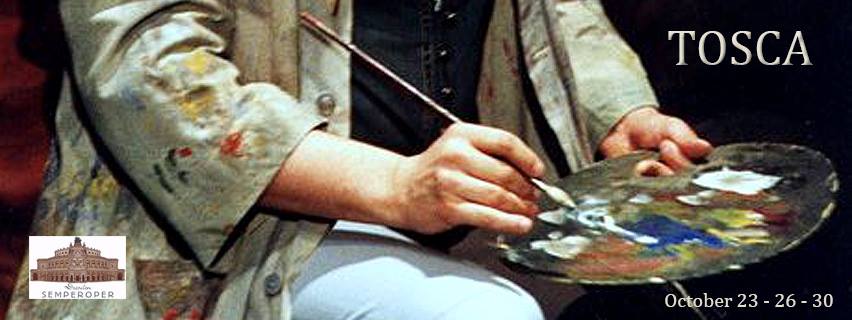
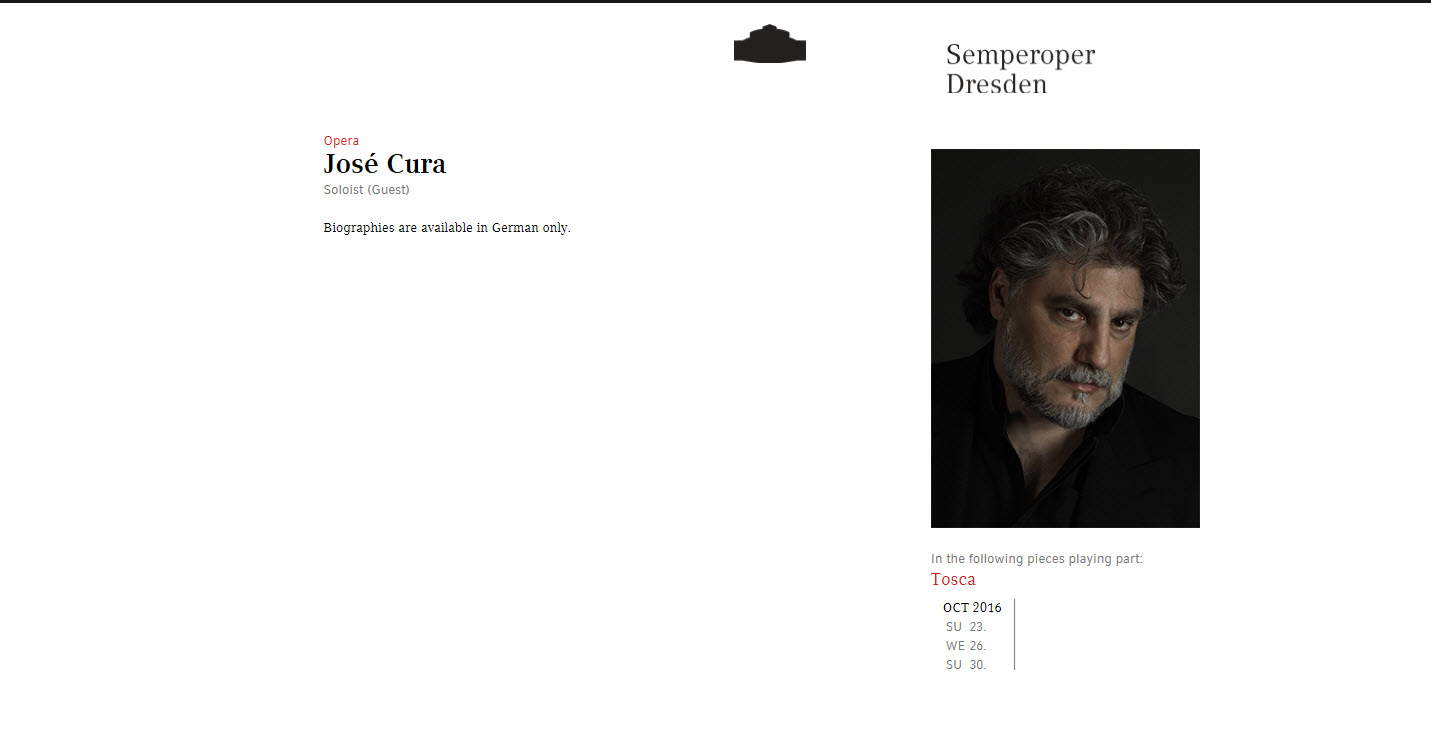
|
|
|||
|
|
||||
Cologne 2019
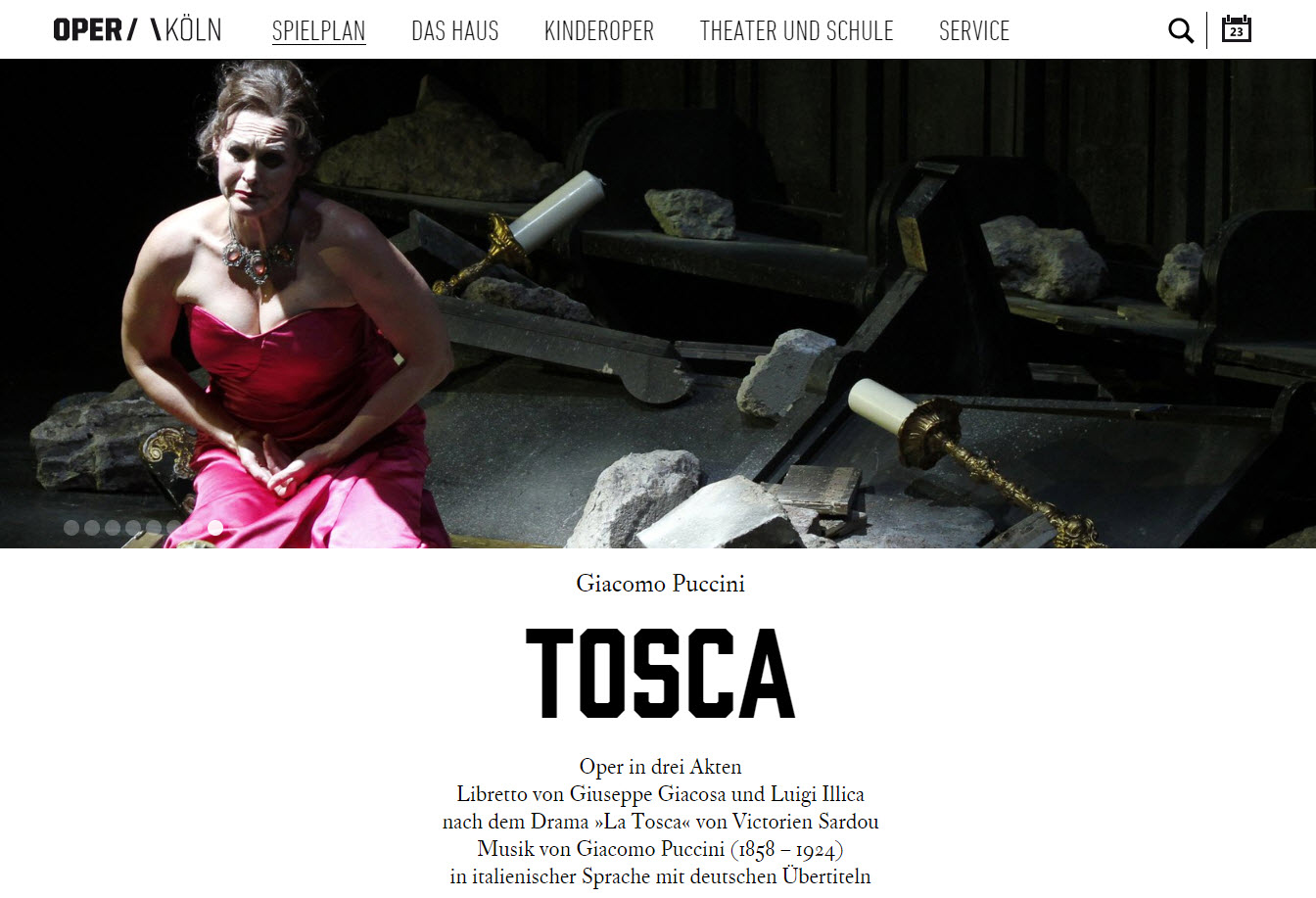
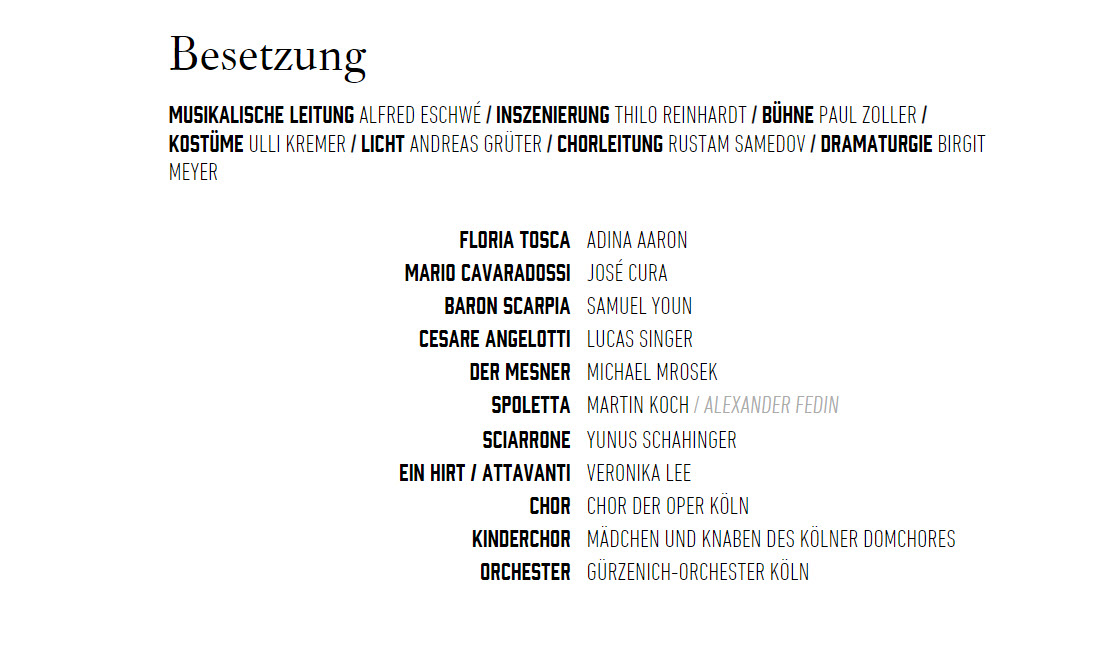
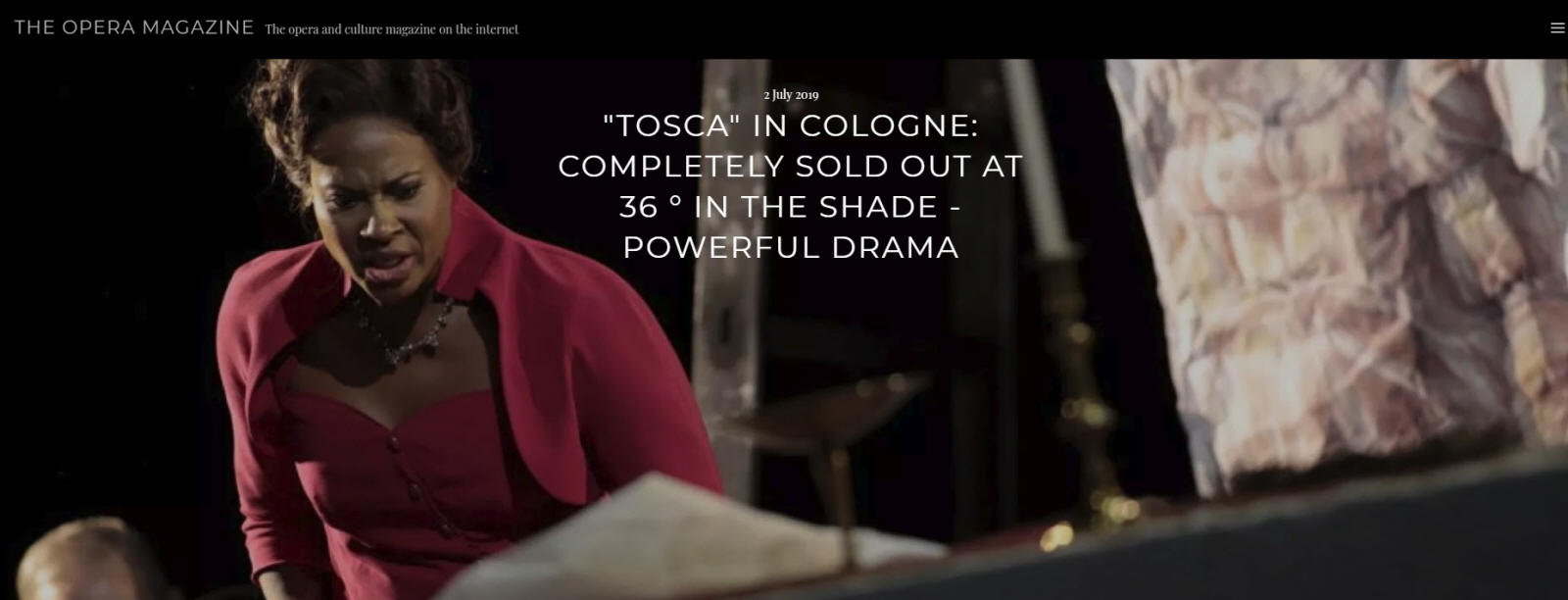
|
Review
"José Cura is an impressive Cavaradossi. His top notes are still flawless and focused, his stage presence is enormous." Das Opernmagazin, July 2019
|
|
|
